
Heavier




















Maternal
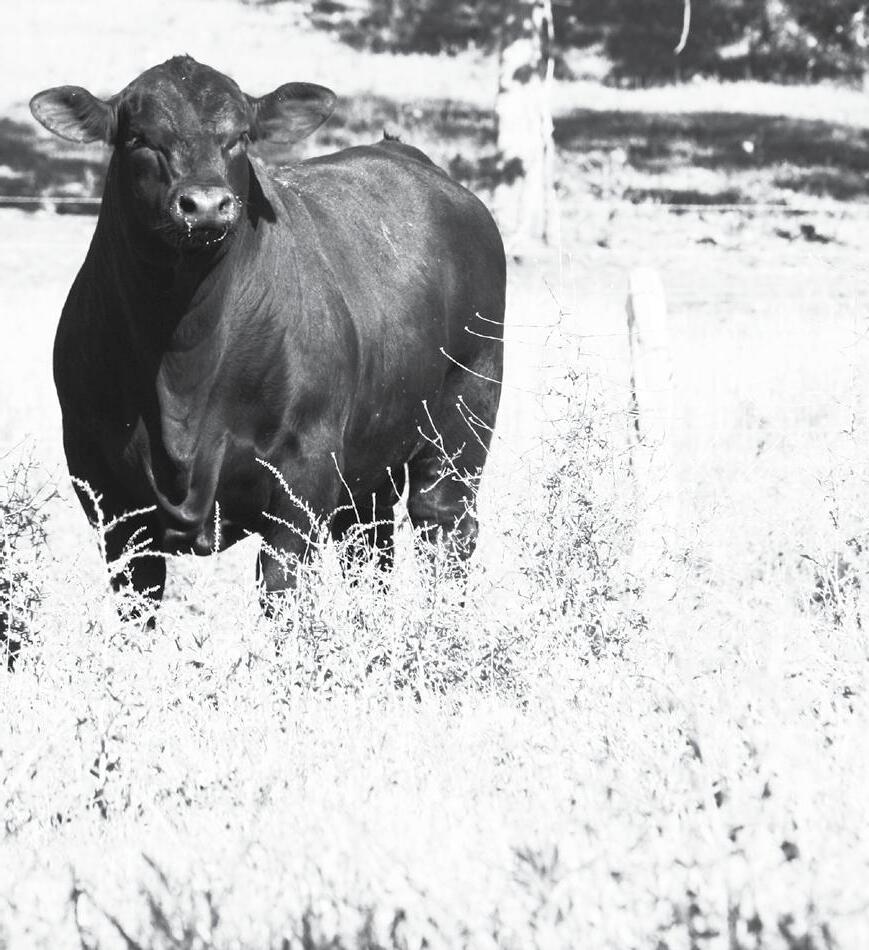
2 • Cow Country • September GENEPLUS GENEPLUS GENEPLUS GENEPLUS THE ISSUES MY NEIGHBOR’S BLACK BULL MY GENEPLUS BULL Consistency
Foot Shape & Structure
Marbling Ability Increased Dressing Percentage
Feed Efficiency/Conversion
Heterosis
Quality
Great
Improved
Increased
Weaning Weights
Excellence
Region Adaptability
Multi
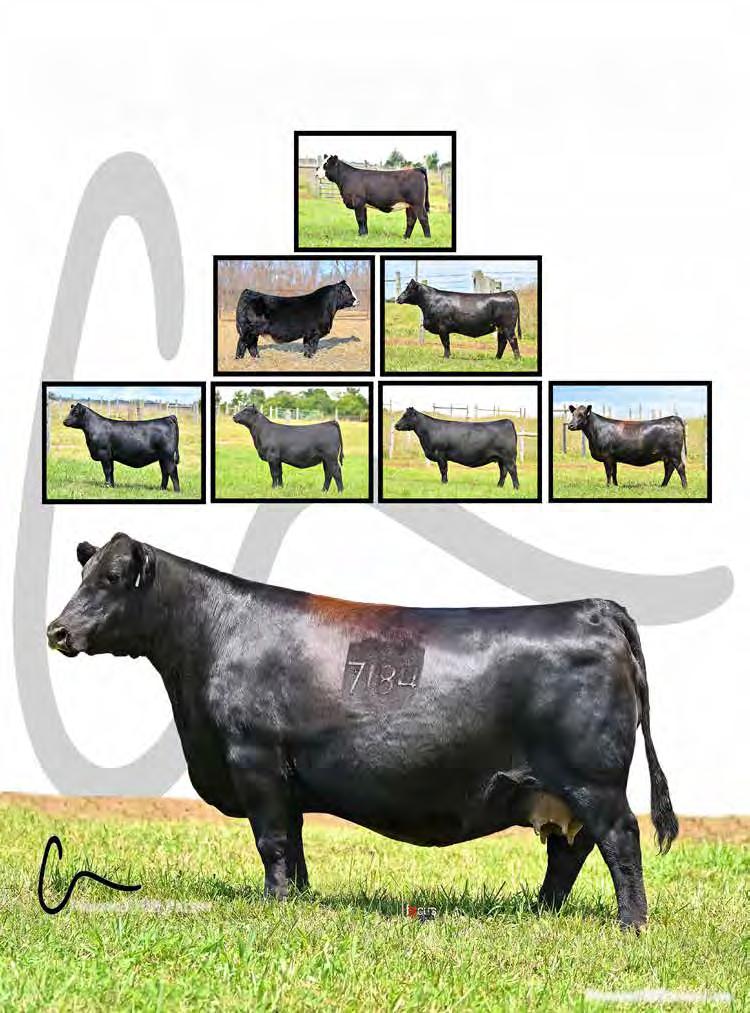


pages 18 - 21
CENTRAL KENTUCKY ANGUS ASSOCIATION
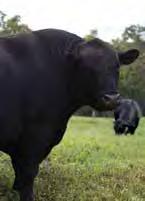
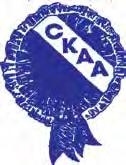
61ST ANNUAL FALL SALE
Saturday, October 7, 2023 • 1PM EDT
CENTRAL KY ANGUS SALES PAVILION
4 Miles NE of Danville just off of Highway 34 on Chenault Bridge Road and then Fork Church Road
GPS address: 2286 Fork Church Road, Lancaster, KY 40444
SELLING 160+ REGISTERED ANGUS
69 cows, 40 calves
34 bred heifers. Many to calve by sale date
5 open heifers
COLUMNISTS
07 Andy Bishop: President's Thoughts
08 Ryan Quarles
10 Dave Maples: Thoughts from Dave
22 Dr. Michelle Arnold: The BVD Virus in Cow-Calf Operations: Part 1: What Does It Look Like and Where Did It Come From?
30 Chris Teutsch: Annual Ryegrass: Friend or Fiend?
72 Jeff Lehmkuhler: Future of Beef Production May Be Up in the Air
FEATURE STORIES
24The Kentucky Cattlemen’s Association Has a New Agriculture Industry Partner in the Kentucky Association of Meat Processors
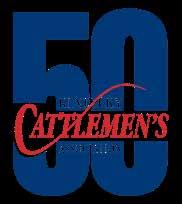
34A Decade of Herd Development at Eden Shale
39Sow Success at the 2023 Fall Kentucky Beginning Grazing School
40Beef Bash 2023 Will Set a Bright Vision for the Future
44Analytical Conservationist
46United States Cattle Inventory Down 3% 48Value-added Feeder Calf Sales Can Increase Profits 62Don't Miss Opportunities in this High Market
12 bulls, current BSEs. All DNA tested.
This sale will feature large consignments from Belleview Farms at Somerset, KY, Cardinal Hill Farms at Glasgow, KY, D&D Longview Angus, Columbia, KY, and Roy Roberts Farms, Nancy, KY. This is the one and only sale that CKAA will sponsor this fall and it will take the place of the September Ladies Day Sale and the November registered bull and commercial female sale
TopShelf-Auctions.com or call Dan Wells (740) 505-3843

Watch October issue of COW COUNTRY for more details
235th overall sale sponsored by CENTRAL KENTUCKY ANGUS ASSOCIATION
Sale Day Phone: (859) 238-3195 Or (859) 583-0364
Auctioneer: Alex Popplewell (270) 566-8822
Sale Manager: Dievert Sales Service • Tim Dievert
478 Dry Fork Road • Danville, KY 40422 tdievert@dievertsales.com
Online catalogs available at www.dievertsales.com after 9-20-23

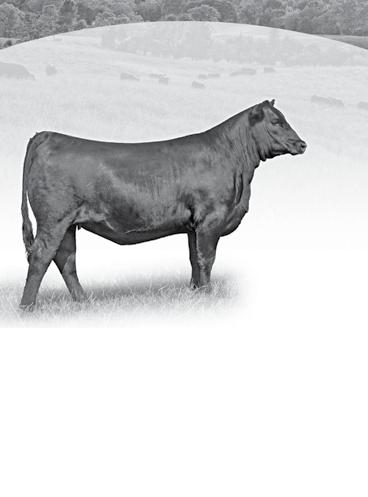
Tim Dievert 478 Dry Fork Rd. Danville, KY 40422 859/238-3195 tdievert@dievertsales.com www.dievertsales.com CKAA 58 WINTER SALE SATURDAY, JANUARY 25 2:00PM CKAA Sales Pavilion • Danville, KY See ad on page 53 4 • Cow Country • September
12County
42An
52Kentucky
55Membership 58Kentucky
60Kentucky Beef
65 Kentucky Angus News 68News Releases 70Calendar of Events 71Advertisers Index 71Classifieds KCA
-
News 28NCBA Legislative Update
INFORMATION System
Junior Cattlemen's Association
Beef Council
Network
history 2010
2023
MCF DONORS OF DISTINCTION RITA n FANNY n EVA n BLACKCAP 20600628 FALL YEARLING SELLING 1/2 INTEREST LOT 1 Maplecrest Rita 2256 FEMALE PRODUCTION SALE Saturday n September 23, 2023 n 6 PM At the farm near Hillsboro, Ohio 20 th Annual Contact us today for your free sale book. John & Joanie Grimes n Lindsey & Adam Hall n 2594 State Route 73 n Hillsboro, Ohio 45133 MaplecrestAngus@gmail.com n Joanie Grimes: (937) 763-1198 n John Grimes: (937) 763-6000 Adam Hall: (740) 336-8142 n Lindsey Hall: (937) 763-8115 www.MaplecrestFarms.com Watch the sale and bid live online. MCF FS 3.625x4.937 bw-Cow Country News.indd 1 8/9/23 2:52 PM On the
cover:
Whispering Hills Bulls, photo by Todd Brown
The Basketball Tournament is an open-application, single-elimination tournament played each summer with a $1 million prize. You will often see teams put together that contain alumni from major collegiate basketball programs. This was the first year that former Louisville players had a team. They played three games at the historic Freedom Hall last week with a roster littered with players from my collegiate experience. Despite tip-off past our 8:00 pm bedtime, Cassie and I bought tickets and arrived early to walk around the arena. The nostalgia of seeing Peyton Siva and Russ Smith in the backcourt together again was too much to pass up. We had a lot of memories in that building before they moved downtown during my Junior year. While they may still beat the most recent iterations of Louisville basketball, to no surprise, a bunch of 33-year-olds with limited NBA careers weren’t as crisp as they were in 2013. They still made the same boneheaded plays they did back then that frustrated us so often before eking out a more stressful win than it should have been. Like old times, Cassie even got her cup of Ehrler’s ice cream just after halftime. It was great to have a genuinely nostalgic experience that was so important to us over a decade ago.
It is wonderful to look back on fond memories, even if just for a night. We both spent the evening grinning ear to ear despite the game being a far cry from the classic Big East games watched regularly by 20,000-person crowds. Even if you don’t have the same affinity for the glory days of one of the historic basketball programs in Kentucky, few won’t get at least a little bit nostalgic about something when walking back through the core memories of their youth. Agriculture is riddled with nostalgic moments when we look back through the years. Whether it is the group of cows that started their cow herd or the 4020 John Deere they grew up driving, farmers get really nostalgic in a hurry about the “good ‘ol days” when you bring up how they used to do it.
My dad always does the same thing when it comes to genetics. I continually hear about Oak Hollow Troubadour 1118, Oak Hollow Cliolier 1402, and Gorthy of Graham 29470. In fact, he is so nostalgic about those animals he continues to justify putting in a few units of the two bulls any time we synch up a few heifers because the daughters were just so good. Viewing those animals through the lens of time, it is near impossible to find bulls used back then that even come close to what they had to offer. Even today, the cow 1402 is breed average for $C and was born in 1994. Hindsight is

20/20, but based on modern selection tools, those were some of the best animals in the entire industry. Their calves perform to this day. From birth to weaning, they are incredibly competitive with our modern genetics, structurally correct, and a uniform sire group of calves. However, as a few of them approach yearling, the dated genetics are showing themselves just a little bit. The early maturity pattern is just a little too early on those heifer calves, and it is certainly no fault of their bigger framed mothers (and a large part of the reason we made those matings). While they look like they should make productive and broody 1200 lb. females, a whole pen of their steer mates would probably leave some carcass weight on the table come time for harvest.
That is the problem with getting too nostalgic. We may remember things as how they were, but we often forget how much progress has been made. No matter how happy I was to be sitting on the lower level of Freedom Hall again, it was undoubtedly not the KFC Yum! Center downtown. The concourse was not the same bright and shining engineering spectacle, and the acoustics are certainly more suited for a livestock show than a concert. The same can be said of that world-famous John Deere 4020. You may take a day in the field with it, but if you have an 80-hour week, you are probably taking the new technology. The same is true of our genetics. I am glad I have a few of those daughters in the herd, and we can use complementary mating to get something interesting, even if their EPDs wouldn’t typically have them retained in our herd. However, I am glad I have three of them and not thirty. We can take from our nostalgic moments to remember what was so great about them. The John Deere 4020 and Gorthy of Graham 29470 daughters received near-universal praise for one main reason. They were reliable. While I think the reliability of some of John Deere’s newer models and some modern genetics can be fairly criticized, people will always take the progress of the newer models when all else is equal. That should be a cue to engineers and seedstock producers alike- the most important thing we can do for our customers is to ensure the product we sell them continues to show up year after year and produce above-average results. That is also how we can all be the most profitable.

Joe
Contact joe.lowe@icloud.com for an additional monthly newsletter KENNETH D. LOWE 270-202-7186 - JOE K. LOWE II 270-202-4399 10TH ANNUAL FALL BULL SALE - 5:00 PM CDT MONDAY, OCTOBER 30TH, 2023 - SMITHS GROVE, KENTUCKY YEARLING AND 18-MONTH-OLD BULLS FROM A FESCUE-BASED COW HERD FREE DELIVERY - FINANCING AVAILABLE - SIGHT UNSEEN GUARANTEE
K. Lowe II
EXECUTIVE COMMITTEE OFFICERS: REGIONAL DIRECTORS:
PRESIDENT
Andy Bishop 6135 High Grove Road Cox’s Creek, KY 40013 (502) 350-7609
PRESIDENT ELECT
Jeff Pettit
5745 US Highway 41 S
Sebree, KY 42455 (270) 836-2963
VICE PRESIDENT
Randy Warner 2717 Ratliff Road
Sharpsburg, KY 40374 (859) 771-5280
TREASURER
Ken Adams 90 E Horseshoe Ave. Upton, KY 42784 (270) 734-1443
PAST PRESIDENT
Cary King 250 Bright Leaf Drive
Harrodsburg, KY 40330 (859) 613-3734
KCA PROGRAM CHAIRMAN
Daniel Hayden 6333 Herbert Road Whitesville, KY 42378 (270) 570-2815
KBC CHAIRMAN
Joe Lowe PO Box 205 Smith’s Grove, KY 42171 (270) 202-4399
KBN CHAIRMAN*
Allan Bryant
BEEF SOLUTIONS CHAIRMAN*
Jeff Pettit
KCA PAST PRESIDENTS:
REGION
Bobby
VOLUME 36 • ISSUE 9
Beef Solutions Operations Manager
Kenny Allen
Graphic Designer
Todd Brown
KBC Director of Education
Bradon Burks
Membership and Communications Coordinator
Rachel Cain
Video Production Specialist Danny Coy
KBN Program Coordinator Jake Harrod
KBN Industry Coordinator Dan Miller
National Advertising Sales, LAN
Debby Nichols (859) 321-8770
Communications Manager Katie Pratt
Director of Kentucky Beef Network
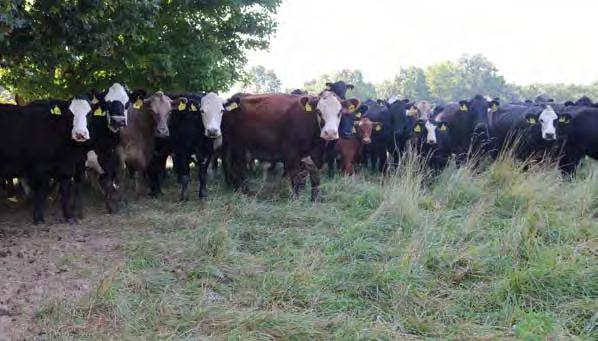
Becky Thompson
Staff Accountant Kelly Tucker
Director of Operations & Policy
Nikki Whitaker
COW COUNTRY is published monthly by THE KENTUCKY CATTLEMEN’S ASSOCIATION. The publisher reserves the right to refuse any material which he feels is unsuitable for the publication. Although the highest journalistic ethics will be maintained, the KENTUCKY CATTLEMEN’S ASSOCIATION limits its responsibilities for any errors, inaccuracies, or misprints in advertising or editorial copy. Advertisers and advertising agencies assume liability for all content of advertisements made against the publisher.
Gary Woodall...............................270-725-0819
Wayne Zoleman...........................270-315-7812
Mark Heimgartner........................270-875-2585
Jeremy Armstrong......................270-668-2056
Kenton Howard..................................................
Sara Roberson............................270-668-2428
REGION 2
Phyllis Gentry*............................502-331-1146
Thomas Bolton...................................................
Fred Thomas......................................................
Bradley Willcox............................270-862-4142
Robbie Hatfield............................270-230-6716
Chris Imbruligo...........................270-993-0543
Maggie Vaughn...........................270-590-8017
Mike Jones..................................270-670-7588
Corbin Cowles.............................270-991-2534
Glen Byrd.....................................270-991-1186
Isaac Thompson.........................270-789-8712
Kenneth Green............................270-589-7175
Andy Joe Moore..........................270-590-0841
Brian Manion...............................270-868-0253
Joe Mike Moore..........................270-670-7493
Amy Cecil....................................270-427-7207
REGION 3
Allan Bryant*...............................502-548-1379
Allen Phillips................................502-220-0948
Wanda Hawkins...........................502-321-5602
Phillip Douglas............................502-552-0688
Larry Bryant................................502-845-4615
Amanda Hall................................859-333-5001
Nicole Goecke.............................606-782-2263
Ben Tinsley.........................................................
Kevin Perkins..............................502-269-7189
Kyle Bush....................................859-588-4531
Michelle Simon...........................859-572-2600
REGION 4
Amy White*.................................859-227-2552
Brad Reynolds.............................859-200-1632
Derek Abney................................859-248-0200
Phillip Stamm.............................606-796-9175
Danielle Harmon.........................606-748-8059
Bruce Witt...................................859-585-8889
Jodi Purvis..................................606-336-3540
Mike Ravencraft..........................606-584-0310
Brandon Sears...................................................
Danny Callahan...........................859-388-0910
Jason Crowe...............................859-582-0761
REGION 5
Adam Chunglo*..........................859-613-2985
Brent Woodrum...........................859-397-1078
Tommy Spalding.........................270-402-9157
Dean Craft...................................606-634-0191
Brent Ware..................................606-305-8612
Rick Brewer.................................606-682-2352
Brent Williams.............................502-817-1511
Gary Ford....................................270-402-2194
Aaron Burke................................859-265-1172
Ryan Miller..................................502-827-5027
Phillip Reese................................606-787-1629
Jared Foley..................................270-585-1331
* Denotes member of Executive committee
6 • Cow Country • September
176 PASADENA DRIVE • SUITE 4 • LEXINGTON, KY 40503 • PHONE: (859) 278-0899 FAX: (859)
• WWW.KYCATTLE.ORG • INFO@KYCATTLE.ORG
260-2060
Jere Caldwell† - Boyle 2003 Mark Williams - Crittenden
Smith T. Powell† - Lincoln 2004 Paul Napier - Lincoln
Larry Lovell† - Union 2005 Eddie Young - Washington
John Masters† - Fleming 2006 Greg Ritter† - Barren
Seldon Hail† - Laurel 2007 Don Pemberton - Christian
Bob Vickery† - Wayne 2008 Billy Glenn Turpin - Madison 1988 Glenn Mackie - Bourbon 2009 Scotty Parsons - Christian 1989 Dale Lovell† - Muhlenberg 2010 Corinne Kephart - Shelby 1990 Steve Henshaw† - Union 2011 Greg Robey - Mercer 1991 Jerry Fraim - Grayson 2012 Mike Bach - Bath 1992 Glen Massengale† - Wayne 2013 Don Reynolds - Hart 1993 Dell King - Christian 2014 Steve Downs - Marion 1994 Kenneth Lowe - Warren 2015 Gary Woodall - Logan 1995 Dr. J.L.Cole - Monroe 2016 David Lemaster - Clark 1996 Harvey Mitchell - Mercer 2017 Chuck Crutcher - Hardin 1997 Jim Naive† - Spencer 2018 Bobby Foree - Henry 1998 Shelby Hughes - Logan 2019 Tim White - Fayette 1999 Hoppy Lovell - Barren 2020 Steve Dunning - Christian 2000 Charles Miller - Jessamine 2021 Chris Cooper - Madison 2001 Larry Clay - Perry 2022 Cary King - Mercer 2002 Jack Kimbrough† - Shelby †(Deceased)
1972-73
1974-77
1978-79
1980-82
1983-85
1986-87
Dave Maples Executive Vice President
1
Bell*.................................270-547-8547
Cook.................................270-275-1274
Holloway.................................................
Steely...............................270-339-3476
Buddy
Ashley
Leland
*ex officio
Carey Brown Chief Operating Officer
Eden Shale Herd, photo by Katie Pratt
President's Thoughts
Andy Bishop KCA President


As I write this article the Kentucky State Fair is just around the corner, which means summer break for students is coming to an end. I can still remember the nostalgia of school starting back, high school football season, and for most of us farm kids, tobacco harvest in the Bluegrass! The dog days of summer gave way to cool, foggy mornings and a crispness in the air that meant winter was approaching. Now that I am older, the trigger for those memories is the Cattle Industry Summer Business Meeting in August, then state fair and stockpiling tall fescue. I certainly don’t miss cutting tobacco nor bending over all day hanging burley in the barn but hate that my children will miss out on the opportunity for one of the biggest “character building” jobs in the Southeast. One thing was for certain, tobacco harvest separated the “men from the boys” and the “women from the girls!”
The Cattle Industry Summer Business Meeting was recently held in San Diego, U.S. producers came together to discuss issues facing the industry, submit resolutions for ag policy, and most importantly, network with each other. Being on the Checkoff side of things, I spent very little time on the policy side at these meetings. I am busy with the Checkoff committees who are gathered to listen contractors present their annual requests in hopes of obtaining funding to administer Checkoff programming for 2024. There are six Checkoff committees made up of 101 Cattlemen’s Beef Board members (producers) appointed by the U.S. Secretary of Agriculture and 101 producers, which represent the Federation of State Beef Councils from 43 states. Those committees are Consumer Trust, Domestic Marketing, International Marketing, Nutrition and Health, Safety and Product Innovation, and Stakeholder Engagement. Nine contractors to the Beef Checkoff submit authorization requests for funding to the Beef Board and present those requests to committee members at Summer Business Meeting. Committee members have time to ask questions, give feedback and then score the requests and submit comments to the Beef Promotion and Operating Committee (BPOC), who will ultimately decide how funds will be allocated for 2024. The BPOC is made up of 10 elected Beef Board members and 10 elected federation members, who interview with producer-led nominating committees. The budget set by the Cattlemen’s Beef Board for 2024 is roughly $36 million, which is down from previous years. The BPOC has the tough task in September of voting how the $49 million in requests for funding are whittled down to meet the $36 million budget. Keep in mind that once those funds are allocated, contractors still must administer the programs and then seek reimbursement after those programs have been reviewed by the Cattlemen’s Beef Board and the USDA. Many producers feel that contractors get a checkbook to spend at will which simply just isn’t the case. I look forward to highlighting the programming in future articles, but in the meantime, you can visit www.beefboard. org or drivingdemandforbeef.com to learn more about how your checkoff dollars are being utilized to increase beef demand.
Dave, Carey Brown, Cary King and Jeff Pettit also attended Summer Business Meeting and fortunately, were able to participate in some lengthy policy discussions in my absence. Cary King sits on the NCBA resolutions committee, which can be a hotseat at times when groups are discussing controversial topics within the industry. I am proud to see Cary continue to volunteer his time for the industry and see firsthand the importance of having Kentucky representation on as many national committees as possible to ensure our voice is heard. Topics at this year’s meetings were the fighting the OFF Act, Livestock Mandatory Price Reporting, prompt payment on cattle purchases, cell-cultured meat, trade, traceability and many more. These discussions are producer led and show that we can all have different opinions, but at the end of the day we are in this together and need to put our heads together to develop a solution that works for the good of the industry. Finishing the article on a bright note, Randy Blach from CattleFax gave his midyear report and projections for the industry for 2024. As you already know, cow numbers are down and are nearing 2013/2014 levels, which means prices are strong and getting stronger. Beef demand is holding strong thanks to the work of the Checkoff. Producers should be in a good position going into 2024 where fed cattle could reach $205/cwt plus. I recently watched a Superior sale where 415-pound calves brought $4 for fall delivery out west. These numbers just don’t seem realistic. Oddly enough, a good friend of mine was the contending bidder on those calves, so I asked him how he penciled in a breakeven on a $1,700 calf with 1,100 pounds of gain left. His plans were to graze those calves in Colorado for the fall then ship them to California to graze through the winter and spring and sell them in late spring weighing 935 pounds with a breakeven of $2,075 per head or $221/cwt. He would lock in a profit of nearly $300 per head using futures or Livestock Risk Protection, which seems unfathomable. I make this example to show the resiliency of the American cattleman and outside-thebox thinking which makes this industry work. Now where those calves end up pricewise as a fat steer and who feeds them is the next question, but I can assure that at $200,000 per semi load, those folks have sharp pencils and aren’t “riding the market.” Be smart folks, and take advantage of these strong calf prices, but don’t let it be another 2014/2015 situation, where we get complacent and forget to utilize the tools to protect our investments such as LRP and futures. Enjoy a few good years and always remember this, the moment a producer tells you that calves will NEVER be under $2 again, you better purchase insurance!
September • Cow Country • 7
Kentucky Cattlemen’s Association President 502-350-7609
Ryan Quarles Commissioner of Agriculture



As the weather begins to cool in September, I encourage all Kentuckians to come outside and celebrate Kentucky Agritourism Month at a Kentucky farm destination.
At a time when money is tight and gas is expensive, you and your family can have a great time at a Kentucky farm without breaking the bank. Plus, you can keep your entertainment and food dollars close to home while helping a Kentucky farmer earn a living.
If you’ve ever visited a pumpkin patch or toured a Kentucky horse farm, you’ve experienced agritourism. It is defined as “the act of visiting a working farm or any agricultural, horticultural, or agribusiness operation for the purpose of enjoyment, education, or active involvement in the activities of the farm or operation.” That’s a mouthful, so I just say, “Kentucky Farms Are Fun.”
Farm tourism is a terrific way to explore Kentucky while supporting our hardworking farm families. With our busy schedules and kids back in school, most of us are limited on the number of vacations or weekend getaways we can plan this time of year. A Kentucky farm tour can be a spontaneous day trip – a fun experience for the whole family or an impromptu adventure for you and your significant other.
There’s no shortage of things to do on Kentucky farms. Kentucky offers a veritable treasure trove of more than 500 agritourism destinations. Here are just a few: u-pick orchards, corn mazes, hay slides, hayrides, horse trail riding, hunting preserves, live music, wine tastings, breweries and distilleries, garden and nursery tours, wedding venues, farm stays and bed and breakfasts, retreats, educational events, fresh Kentucky Proud food, unique farm markets that sell numerous Kentucky Proud products, and many more activities and attractions. Festivals, concerts, and other special events are scheduled all month long in September and throughout the fall. You can find a list of Kentucky agritourism locations, broken down by category, at https://kyproud.com/programs/farms-are-fun/.
A few decades ago, many Kentucky family farms relied upon tobacco as a primary source of farm income. In the years of tobacco’s decline, many farm families began to look for ways to replace lost income. Agritourism became a welcome source. Now, agritourism venues are a key component of Kentucky’s economy, providing additional income to help supplement existing farm operations. Kentucky’s agritourism industry employs many people and contributes to our ag economy. All the while, they help educate people about the basics of how food gets from the farm gate to the dinner plate.
Today, many Kentuckians have no direct connection to farm life, even in rural areas. Agritourism gives people an opportunity to better understand the skill and hard work that go into producing the abundant food and fiber that we all enjoy.
The most recent Census of Agriculture in 2017 listed 651 Kentucky farms involved in “agritourism and recreational services.” Income increased by $10 million in five years, from just over $7 million in the 2012 census to more than $17 million in 2017.


It’ll be interesting to see the most recent agritourism numbers from the 2022 census when they are released next year.





Maternal Matters!
At Red Hill Farms, our maternal selection goals include cows that have longevity, breed regularly, calve easily and early in the breeding season, and wean a high percent of their body weight. In addition, we put extra emphasis on udders, feet and disposition. Profitability starts with the cow!
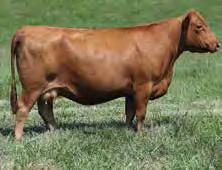
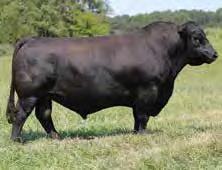


Bart, Sarah & Ty Jones • (615) 666-3098 466 Red Hill Road, Lafayette, TN 37083 mail@redhillfarms.net Gordon & Susan Jones • (270) 991-2663 Visit www.RedHillFarms.net for information about our sale and breeding program. REDHILL
231A
25 Red Angus Bulls 25 SimGenetics Bulls 5 Charolais, Angus & Cross-Ty Bulls 20 Red Angus Bred Heifers 20 SimGenetics Bred Heifers 25 Red Angus Bred Cows 50 Red Hill-Influenced Bred Commercial Heifers with Genomic-Enhanced Data MATURE COW HERD DISPERSAL Every Red Angus spring-calving cow born 2018 and before sells! 25 outstanding cows that have performed at the highest level to earn their keep! Selling IX BULLS & FEMALES OF FALL Saturday, OCTOBER 28, 2023 11 a.m. CDT • At the Farm Terminal Matters! The SimGenetics bulls at Red Hill are selected to add payweight in all phases of production –weaning, yearling and carcass. As a bonus, these bulls are selected for KY-31 fescue adaptability, slick hair, good feet and remarkably calm dispositions. These bulls are ideal for mating to British-based cows to produce calves with added hybrid vigor, feedlot demand and consumer acceptance. 231A, along with other Red Hill sires, have proven track records of adding value in all segments of the beef business!
672X X004
(#2847534)
Sells! 8 • Cow Country • September
REDHILL 176A AMBER 208C (#3521863)
She






September • Cow Country • 9 ALL AGES WELCOME SCHEDULE A GROUP VISIT CHOOSE YOUR LESSON PLAN CATERING IS AVAILABLE VISIT US TODAY! THE YARDS is an education center focusing on the science and practices of the beef industry. Educational opportunities provide a unique learning experience based on its location in the Blue Grass Regional Stockyards Marketplace. This environment fosters complex thinking, experiential learning, and life skill application. BBURKS@KYCATTLE.ORG (859) 382-4303 STONE GATE FARMS
trait genetics 1669 Mill Creek Rd. • Flemingsburg, KY 41041 Chris Cannon: 606-748-0407 • Caleb Cannon: 606-748-0044 Charles Cannon: 606-748-0747 www.stonegatefarms.com • stonegateangus@gmail.com @stonegatefarmsky ANNUAL FALL SALE MONDAY, OCTOBER 30 12:30 pm AT THE FARM SELLING 15 YEARLING BULLS 150 COMMERCIAL COWS FALL COW CALF PAIRS 2-5 YEAR OLDS SPRING BRED HEIFERS
optimum
Thoughts From Dave
Dave Maples Executive Vice President

I traveled from San Diego to Wooster, Ohio this month. By far the most exciting trip was to Wooster with the Kentucky Junior Cattlemen and the Tennessee Junior Cattlemen groups. I have to take my hat off to Bradon Burks and Jake Harrod in our office and the Tennessee staff for making this an outstanding trip. This was a FACT trip for high school age young people. In my opinion it was spot on. If we are going to continue to build a Cattlemen’s Association or the future beef industry, we are going to have to spend more time with this age group. There were 30 plus young men and women on this trip, and you would have been proud of them. I sure was. As I got to know them, I realized that our industry will be in good hands in the future. We just have to guide them and get them the tools they need to reach the next level.
Speaking of going to the next level, this trip really opened my eyes as to what the future of the beef industry will look like. For instance, one of the places they toured was Certified Angus Beef. CAB has changed the beef industry by making a better eating experience when you choose beef.
The junior cattlemen spent the entire day at CAB. There, they listened to educational talks, participated in hands-on meat cutting demonstrations, as well as cooking opportunities. To me, what really hit home was during the tasting demonstration. One of the five CAB chefs prepared a USDA select steak, a USDA choice, a CAB choice and a CAB prime steak. The steaks were all prepared the same way and cut into bite-size cubes which the group taste tested one at a time. With this one demonstration, it was easy to see why the industry promotes marbling in bull selection so much. There is a difference in taste. I wish you could have seen Jeremy Shryock’s son Drew and Ryan Miller’s son Landon. They came from the end of the bar to the center where they were passing out the samples and got all the extra samples, trimmings and even an extra steak to take back to the hotel. Between CAB, BQA and the cattle breeders, the enhanced eating experience and taste of beef has saved our industry.
The group also went to a feedlot, Eby Trailers, UPI for dinner and a stop at STgenetics. So, they got to see the full circle of the beef industry from bull selection to taste testing.
I had to come back to Lexington after the CAB visit, but I was at the office Saturday morning when the bus got back. I was so glad to see the young people were still excited. There were many friendships made and networks developed. I ask one of the young men from Tennessee what he enjoyed the most and his answer was STgenetics. I then ask him if the bull “Connealy Craftsman” was there, and he instantly showed me a video of the bull. The next thing I know, he is sharing videos of all the bulls and the facility. I am so proud that KCA, TCA and their Beef Councils can offer these kinds of opportunities for our youth.
While I am on genetics, I want to share with you two conversations that I had on the topic. One was with Scott Burks, an embryologist with Dr. Levi Holt. Scott rode with me to Wooster and back. I knew they did several embryo transplants, but I didn’t realize how many and for whom. Just seeing how many calls Scott had to take during our drive made me realize how many breeders are doing this and how many more people are getting involved with these new technologies. Scott is a busy man. Also, Dr. Gordon Jones has made two Saturday morning calls to me about genomic testing for commercial heifers. Dr. Jones can get way ahead of you when it comes to genetics, but I think the genomic testing of commercial heifers could be a game changer. We are talking about traits that you cannot see when you look at the animal. Just think if you can make a decision on what heifer to keep or cull early in the process how much that could benefit your herd.
Hampton Premium Meats was founded in 1975. 100% USDA inspected slaughter and processing of Beef, goat, sheep and swine.

Excellent vacuum packaging and labeling for resale. Smoke house available for any processed animals. Third party BRC certified.
Halal harvest on Mondays and Thursdays.
PAACO Animal Welfare audited for beef cattle.
Trucking available to pick animals up in Central Kentucky area one day each month to get animals to slaughter. Call for scheduling as we will have to coordinate a load.
Immediate processing dates available.
Wholesale accounts welcome.


(270) 847-0634 Chris (call or text)
(270) 885-8474 Office
orders@hamptonpremiummeats.com
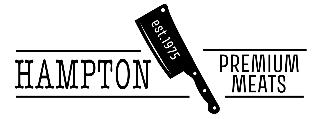
10 • Cow Country • September

During their June meeting, the Estill County Cattlemen’s Association awarded their Eric Baker Scholarship to Abby Smith. The Estill County Cattlemen’s Association established this $500 onetime scholarship after the sudden loss of Eric Baker in September 2021. Baker served as the Cooperative Extension agent for agriculture and natural resources in Estill County for 22 years. He was an active member of the Estill County Cattlemen’s Association and a prominent fixture for the agriculture community of Estill County.
Smith is the second recipient of the Eric Baker Scholarship. She is a 2023 graduate of Estill County High School and will be attending Western Kentucky University this fall and majoring in animal science. Smith hopes to pursue a career in veterinary medicine.

“I want to say a huge thank you to Danny Callahan and everyone in the Estill County Cattlemen’s Association for granting me this scholarship,” Smith said. “Eric Baker was a shining light in our community, and it is an honor to receive his scholarship. His willingness to lend a hand and never-ending kindness are qualities that I hope to carry with me in my future.”
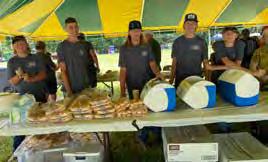
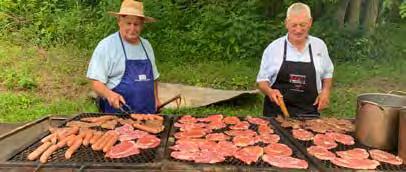
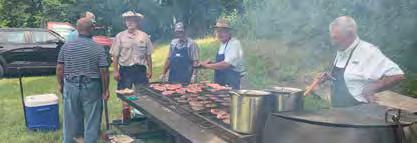
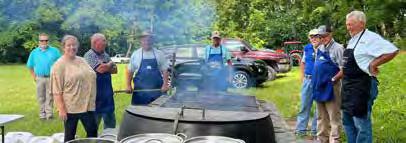
Recently, we have been busy in Franklin County, especially for our younger members. This year we have started the Franklin County Junior Cattleman’s and they have been quite active already. Crystal Harrod, the groups advisor, has been monumental to the group’s continued growth and vigorous work ethic. Crystal has been paramount to the groups founding and we in Franklin County are excited to where she will lead this group and how she will help continue

growing the future cattleman of Franklin County. The images show the Junior Cattleman have been a great help this year. At the dairy show and fair, they helped to run the shows, work booths and all around were amazing to work with. At the Frankfort Farm City Field Day held at Harrod Farms the juniors helped with setup, served food and were advocates for the beef industry to the public.


 FRANKLIN COUNTY NEWS submitted by Jake Harrod
FRANKLIN COUNTY NEWS submitted by Jake Harrod
12 • Cow Country • September
photos by Crystal Harrod
ESTILL COUNTY NEWS submitted by Danny Callahan
On July 3, the Hart County Cattlemen hosted their sixth annual Farm to Table Dinner at the Hart County Fairgrounds with around 270 in attendance. A delicious meal was served consisting of beef brisket, pork tenderloin, squash and zucchini medley, potatoes, corn on the cob, rolls, broccoli salad, slaw, tomatoes, various strawberry deserts, as well as ice cream. A large portion of the meal featured were item raised or grown in Hart County. Our speaker this year was Greg Peterson of the Peterson Farm Brothers. He spoke about their social media platform and how they use that and their parodies for promoting agriculture. A big thank you goes out to our sponsors for helping to support this event.



A $500 Mason County Cattlemen’s scholarship was awarded to Colby Doyle. Doyle received his scholarship from Ronnie Lowe, county president.

Doyle is the son of Chad and Sandi Doyle of the “Slip-up” area of Mason County. His love of farming began at his grandfather’s knee while watching and learning a love of handling and working with cattle. Doyle began showing cattle when he was 6 and continues to do so.
Working with cattle has taught him many life lessons. In his application he wrote “Probably the most important lesson I learned is life doesn’t always happen when and how you want it to. Cattle don’t care how tired you are or what your plans are. There are no days off. Raising cattle isn’t for everyone but those that do it are truly blessed.”
Doyle graduated from Mason County High School this spring and will attend Morehead State University in the fall. He wants to remain active in the family farm while attending the university and beyond. His desire is to improve his education so that he can be a better cattle producer and to better educate others on the values and challenges facing agriculture.
Charolais Breeder Since
Charolais Breeder Since 1962
Bulls Available
Bulls Available
Ø
Ø Bull calves out of HCR Answer HCR SPIRIT 4007.
Ø
Ø Bull calves out of HCR Answer 2042 and HCR SPIRIT 4007.
Ø Bred for calving ease and growth.
Ø Bulls for both purebred and commercial
Ø Bred for calving ease and growth.
& HEIFERS AVAILABLE
Ø Yearlings and two-year-olds available.
Ø Bulls for both purebred and commercial breeders.
Ø Bred heifers to calve in fall available.
Ø Yearlings and two-year-olds available.
Ø Bred heifers to calve in fall available.
HART COUNTY NEWS submitted by Adam Estes
September • Cow Country • 13 CHAROLAIS BULLS FOR PUREBRED BREEDERS AND COMMERCIAL BREEDERS John Allison 545 Eminence Road New Castle, KY 40050 (502) 220-3170 Allison Charolais Charolais Breeder Since 1962 • Bulls Available
MASON COUNTY NEWS submitted by Annette Walters
Bull calves out of HCR Answer 2042
HCR SPIRIT
and
4007.
Bred for
Bulls for
purebred
Yearlings
Bred
John Allison, Owner 545 Eminence Road New Castle, KY 40050 502-220-3170 David Carter, Farm Manager 502-706-0075 CHAROLAIS
Allison
Allison Charolais
calving ease and growth. Ø
both
and commercial breeders. Ø
and two-year-olds available. Ø
heifers to calve in fall available.
BULLS
John
, Owner
•
John Allison, Owner 545 Eminence Road New Castle, KY 40050 502-220-3170 David Carter, Allison Charolais
•
John Allison, Owner 545 Eminence Road New Castle, KY 40050 502-220-3170 David Carter, Farm Manager 502-706-0075
The Metcalfe County Cattlemen met on June 26 at the Metcalfe County Extension office.
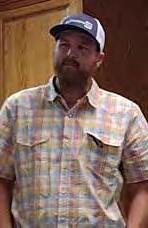
President Tom Hughes welcomed everyone to open the meeting.
ProSolutions from Hiseville was the sponsor for the night. Daniel Crain was on hand to explain Pro Solutions’ services and how they could help in your operation.
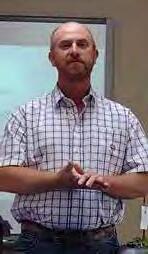
Dr. Michelle Arnold, DVM with the University of Kentucky, presented a very informative PowerPoint on pink eye control in beef cattle.

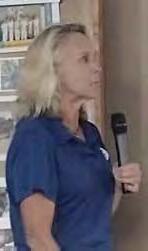
Rib-eye steak sandwiches with sides were prepared by the cooking crew, and everyone seemed to enjoy their cooking skills.
Don't forget to go to join our Facebook page at https://tinyurl. com/bdhr5282.
Shelby County Cattlemen’s Association awarded Riley Martin a $1,500 scholarship. Martin will be attending South Dakota State University in Brookings, South Dakota. She is going for a major in animal science and a minor in precision ag.
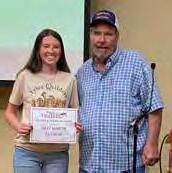
Shelby County Cattlemen’s awarded some of our younger members a $50 check for showing their beef or dairy cow at our local county fair.

 METCALFE COUNTY NEWS submitted by Moe Hensley
Dr. Michelle Arnold Tom Hughes, President
Daniel Crain, Pro Solutions-Hiseville
METCALFE COUNTY NEWS submitted by Moe Hensley
Dr. Michelle Arnold Tom Hughes, President
Daniel Crain, Pro Solutions-Hiseville
14 • Cow Country • September
SHELBY COUNTY NEWS submitted by Tanya Wilson
The Twin Lakes Association held its summer Field Day on July 13 at the farm of Steve and Carol Peddicord in Albany. A hot, dry day welcomed the crowd of about 60 people to enjoy wagon tours, guest speakers and a ribeye steak meal.

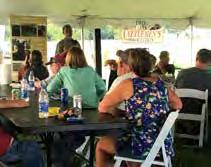
The wagon tours kicked off the program with the first stop being an information talk from Rachel Walker of Corteva Agriscience. Walker used the stop to help identify over 20 common pasture weeds found in this area, and explained different control methods along with proper timing.
A second stop included a weed application test field that showed the effects of using Grazon compared to no treatment. The Grazon application was showing strong results in controlling flowering nettle populations in the spring-seeded orchardgrass hayfield.
Next, a visit was made to a paddock that was being used to breed open heifers to calving ease Balancer bulls. Raising replacement heifers has been the primary enterprise at Springhaven Farms for the last several years. Steve Peddicord, farm manager, explained to the group the protocols that must be followed to raise replacements that are eventually marketed through the West Kentucky Bred Heifer sale in Guthrie.
BARREN COUNTY NEWS


submitted
by James W. Bailey
The Barren County Cattlemen’s Association meeting was Thursday, Aug. 10 at the Barren County High School Trojan Academy. During the meeting, Teri Atkins, CPC Feeds representative, presented an overview of Feeds, Commodity and Market update. She announced that the CPC Fall Field Day will be Sept. 7 at Fountain Run. A delicious steak dinner was sponsored by CPC Feeds. Pictured from left to right: Hadley Celsor and Teri Atkins of CPC Feeds and Joe Moore, Barren County Cattlemen’s Association president. U.S. Congressman Brett Guthrie brought the Barren County Cattlemen Association members greetings and discussed the world beef market during the association’s Aug. 10 meeting.
Following the wagon tours, the association offered a full ribeye steak meal to those in attendance. Steaks were donated by member Nathan Groce of Albany. Groce Farms sells over 60 custom beefs during the course of the year. The program concluded with the featured guest speaker Gale Rippey of Galax, Virginia. Rippey received the national commercial producer of the year in 2019 by the American Gelbvieh Association. He spoke to the group about the importance of using crossbreeding in the commercial operation and the benefits it brings. He also mentioned the importance of all producers finding the niche in the cattle business they are comfortable with and trying to maximize the results.
Agency reports were given by Carissa Truman of FSA, Danny Hughes of NRCS and Colby Guffey of UK Cooperative Extension Service. The Clinton Soil Conservation District also had a display updating the available local cost share programs, plus some of the equipment available for rent was on display.
The TLCA would like to especially thank our local sponsors: People’s Bank and Trust of Albany, Groce Farms, Neal Realty, Neli Conner of Conner Farms (fantastic sweet corn donated), Hunter Shearer BBQ and everyone that helped to make it a very successful day.
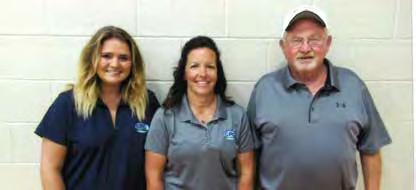
This two-row forage head is a real treasure. Minimal

 TWIN LAKES NEWS submitted by Steve Peddicord
Gale Rippey of Galax Virginia was the featured speaker on the program. Rippey is a former American Gelbvieh Association National Commercial Producer of the Year.
Steve Peddicord, manager of Springhaven Farm in Albany, spoke to the group about the protocols they use to develop bred replacement heifers.
TWIN LAKES NEWS submitted by Steve Peddicord
Gale Rippey of Galax Virginia was the featured speaker on the program. Rippey is a former American Gelbvieh Association National Commercial Producer of the Year.
Steve Peddicord, manager of Springhaven Farm in Albany, spoke to the group about the protocols they use to develop bred replacement heifers.
September • Cow Country • 15 Call Charlie at (859) 608-9745 redbarnandassociates.com GOLDEN OPPORTUNITY
Investment and huge returns. High performance and low maintenance. Stake your Claim!
OLDHAM COUNTY NEWS
 submitted by Traci Johnson
submitted by Traci Johnson
Wes and Christy Husband of Caywoodland
Angus hosted Oldham County Cattlemen’s summer meeting. Wes, Christy and their four children run the fourth-generation farm that recently turned 100 years old. The Husbands direct market their beef and pork alongside a sizable CSA operation. They recently started a roadside stand and use social media to reach more customers. What started as a tobacco and dairy farm has made a successful transition to selling direct to consumers locally and into metro Louisville. Wes and Christy serve in many roles outside of farming and jobs off the farm including extension, ag development council and farm bureau. The Husbands were featured farmer panelists for extension’s recent Raising the Steaks and Chops program. Thanks to J Davy Farm Products and Sherwood Acres for donating ground beef and bratwursts for the meal.



www.uproducers.com/vacc-60 Presented by: Interested in raising healthy, more profitable cattle? OUR VACC-60 PROGRAM CAN HELP!
16 • Cow Country • September
Selling 225 Spring Calving Bred Heifers
Saturday, November 18, 2023
12:00 Noon Central Time
Kentucky - Tennessee Livestock Market Guthrie, Kentucky
All heifers qualify for both Kentucky and Tennessee Cost Share Programs

See these heifers at: www.kyheifersale.com
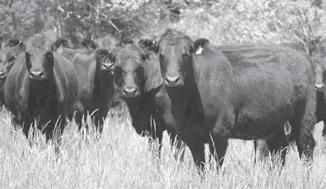
For more information contact:
Kevin Laurent, University of Kentucky (270) 625-0994
Mark Barnett, KY-TN Livestock Market (931) 624-7176

Tom Barnett, KY-TN Livestock Market (931) 624-7376
Livestock Risk Protection (LRP)

We s t Ke n t u ck y S e l e c t B r e d H e i f e r S a l e
All heifers are guaranteed bred to bulls with known EPDs and have met stringent requirements for health, quality and pelvic measurements.
It’s better too have it and not need it... than to need it and not have it!
JANUARY 2012
KCA inducts first class of Hall of Fame
Inductees: Dell King, Earl Bill Goodman, Lloyd Gray, Gene Barber, Seldon Hail
JUNE 2011
KBN Ultrasound Program
Funded by a grant from the Kentucky Agriculture Development Board, the KBN Ultrasound Program is designed for Kentucky beef famers who have a desire to assess the quality of their feeder calves and to provide those farmers with fast, beneficial data to make management and marketing decisions.

MAY 2013
Eden Shale Farm

In June 2012, the University Of Kentucky College Of Agriculture suspended operations of the Eden Shale Research Farm due to budget constraints. UK later contacted the Kentucky Beef Network with the opportunity to manage the farm. The opportunity was discussed by Kentucky leadership and an open forum was held in October of 2012 to discuss the opportunity. A majority vote led KBN to pursue the farm and the official agreement will be finalized within the next few days. University of Kentucky College of Agriculture has given KBN a wonderful opportunity to continue daily operations and management decisions for the Eden Shale Research said KBN Chairman Bobby Foree. This opportunity will allow KBN to continue its mission of helping Kentucky farmers increase farm revenue with innovative management practices and concepts through demonstrations put in place on the farm.
NOVEMBER 2010
Eastern Livestock
“More than 280 of Eastern’s alleged victims live here in Kentucky,” said State Attorney General Jack Conway. “These are hardworking families who have lost millions of dollars after receiving cold checks from Eastern Livestock. The impact has been particularly painful on our smaller farmers, some of whom have lost tens of thousands of dollars. This money was needed to pay for farm equipment, mortgages, bills, taxes and even put food on the table. Kentucky farm families are hurting.”
18 • Cow Country • September
2012 2010
2013
2011
JANUARY 2014
Beef Efficiency Conference debuts at KCA Convention
University of Kentucky College of Agriculture, Food and Beef Integrated Resource Management group teamed up with the Kentucky Beef Network, with support from the Kentucky Cattlemen's Association and the Kentucky Agricultural Development Fund, to offer a half-day Beef Conference Jan. 16 at the Lexington Convention Center.
FEBRUARY 2016
AUGUST 2014
Referendum sought on beef assessment
The Kentucky Cattlemen's Association has asked the Kentucky State Board of Agriculture for approval to conduct a statewide referendum of Kentucky beef cattle producers on a proposed state assessment of $1 per head of cattle marketed in the state. The request is on the agenda for the meeting Thursday in Louisville. If the board approves the request, the Kentucky Department of Agriculture will be required by state law to conduct the referendum. In a letter dated Aug 11, KCA Executive Vice President Dave Maples wrote that the assessment would be used “to promote and stimulate using research, market development, and education, the use and sale domestic and foreign of bovine animal products. If approved by producers, the assessment would become effective April 1, 2015.
SEPTEMBER 2014
Kentucky cattlemen will vote on referendum
A referendum on whether Kentucky cattle producers will be assessed an additional $1 per head on cattle taken to market will soon be put to vote. Adult cattle owners will have the opportunity to vote Nov. 20 at local extension offices. In 1976, the Kentucky General Assembly created legislation that allowed for promotion of the beef cattle industry through a 10 cent per head checkoff, which was 10 years prior to the creation of the Federal Beef Promotion and Research Act. "We went to a dollar in 1988, and it hasn't been increased in 27 years," Maples said. "That dollar comes to our office and 50 cents of it stays here in the state. We send the other 50 cents to the national program." The Kentucky Beef Council uses that money to help fund research and the promotion of beef products, University of Kentucky Beef Specialist Jeff Lehmkuhler said. "The dollar today doesn't buy the same that the dollar did 30 years ago," he said. If the referendum passes, the additional funds will stay in the Commonwealth, Maples said. "Kentucky producers will have oversight of that dollar," he said. Feedback concerning the referendum has been mostly positive, Maples said. "Who else is going to promote your product if you don't?" he asked. "It's a way for our industry to step up and do its part."
DECEMBER 2014
Extra $1 cattle assessment OK’d
Beef cattle producers in Kentucky have voted to assess themselves an additional $1 per head on cattle marketed in the state. The Agriculture Department said the final tally in last month’s statewide referendum was 1,816-1,423. The assessment takes effect April 1. Dave Maples, executive vice president of the Kentucky Cattlemen's Association, said the assessment would be used to promote the cattle industry in Kentucky.
Blue Grass Stockyards burns Gov. Matt Bevin, Agriculture Commissioner Ryan Quarles and Lexington Mayor Jim Gray said Monday that the state and the city are ready to assist in rebuilding the business, which was destroyed by a three-alarm fire Saturday afternoon.

"The Kentucky Department of Agriculture is lending a helping hand and is ready to assist in any way possible to help Blue Grass Stockyards get back on their feet," Quarles said. "For me, some of my earliest childhood memories are sitting in the sale ring. My dad used to work here when he was a college student, so this is personal for me.
"But it's important to note Blue Grass Stockyards is one of the most prominent livestock facilities not just in Kentucky but in the eastern United States. And, with Kentucky being the number one cattle producing state east of the Mississippi, it's important that we assist with what's next.
SEPTEMBER 2017
The YARDS opens at Blue Grass Stockyards
The Kentucky Cattlemen's Foundation was thrilled with the opportunity to open an educational facility, The Yards, at the new Blue Grass Stockyards location. Owners of the stockyards donated the classroom space and sponsors like Farm Credit Services and Tarter Farm and Ranch Equipment helped to equip the classroom. The space is still being finished for classrooms, but will feature a wall including stockyards across the state, state of the art equipment and an opportunity for children and adults to learn more about the industry.

September • Cow Country • 19 2016
2017
2014 2015
MARCH 2018
The next time you stroll through meat department looking for a pound of ground beef, you can buy local. The Kentucky Association, in conjunction with the Kentucky Department of Agriculture and the Gov- Office of Agricultural Policy, partnered with The Chop Shop in Wolfe County and Creation Gardens of Louisville to produce an all-Kentucky hamburger that is now available in 85 Kroger stores across the state.
The product, which is 80 percent lean and 20 percent fat, is made from cattle raised in Kentucky. Most of the cattle raised in Kentucky are usually sold and shipped out of state to large feedlots and processors, who then ship the meat back here for sale. Agriculture Commissioner Ryan Quarles said Tuesday that this new product will keep the entire cycle in state.
The idea isn’t new; the Kentucky beef industry has been working on this for 18 years. But it required special certifications to meet the food safety standards of major retailers.
The hope is that demand will take off and the state can expand production, Quarles said. Right now, the KCA subsidiary Beef Solutions is producing about 3,000 pounds of ground beef a month from slaughtered cattle purchased from Kentucky farmers. As demand increases, the purchases are expected to give the farmers another market, Maples said.
JULY 2019
KCA Develops 2020-2025 Long Range Plan

A thirteen member planning committee made up of cattle producers; as well as industry, food and retail, and education sectors; finished a three month course to develop a long range plan for the Kentucky Cattlemen’s Association in April. During the planning process, the committee assessed the challenges and opportunities facing the Kentucky beef industry and evaluated the organization’s own capabilities crafting a roadmap that will focus and align its resources over the next five years. The plan, which was approved by the KCA Board of Directors in June, lays out four core strategies that will create benchmarks the Association hopes to reach. Those strategies are: Cultivate value-added marketing opportunities; Strengthen research, demonstration and outreach; Improve KCA engagement, collaboration and advocacy; Develop and leverage organizational infrastructure and capabilities
Kentucky Cattlemen's Association Convention goes virtual for 2021

The Kentucky Cattlemen's Association Convention is one of the largest gatherings of cattle producers in Kentucky each year and is tasked with educating and preparing for the year ahead. Unfortunately, the current pandemic has presented many challenges that make bringing people together difficult. After thoughtful discussions amongst attendees and the convention center, and with the health and safety of our attendees in mind, KCA has made the difficult decision to make the 2021 Convention a virtual event.
"While we're disappointed that we had to cancel our in-person Convention, we are working to make the KCA Virtual Convention a great one! We continue to be so thankful for the strength, flexibility, and support the KCA community has exhibited during this pandemic."

20 • Cow Country • September 2020 2018 2019 2021
JANUARY 2021
JULY
The Kentucky Cattlemen’s Foundation, with support from members of the Livestock Coalition (KLC), have proposed the construction of a Livestock Innovation Center at the University of Kentucky C. Oran Little Research Farm to educate and train those currently involved in livestock agriculture and to encourage the involvement of others.
This space will be a central coordinating point and key resource for the livestock industry in Kentucky; its construction will be an asset for livestock owners across the Eastern United States and will elevate the image of Kentucky livestock worldwide.


The facility will also include a Culinary Training Center that will provide value-added and culinary development of Kentucky’s food processing, manufacturing, and retail industry.

Growth of the Association:
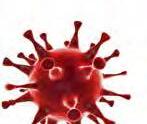
2010: 7,970 Members
2011: 8,737 Members
2012: 8,808 Members
2013: 9,292 Members
2014: 9,678 Members
2015: 10,041 Members

2016: 10,473 Members
2017: 10,671 Members
2018: 10,861 Members
2019: 10,733 Members
2020: 10,738 Members
2021: 10,115 Members
2022: 10,920 Members
2023: 11,114 Members
Who knows what could happen next?
September • Cow Country • 21
2022 2023
KCA presents Livestock Innovation Center to Joint Ag Committee in Frankfort
2022
The BVD Virus in Cow-Calf Operations: Part 1 What Does It Look Like and Where Did It Come From?
Michelle Arnold, DVM (Ruminant Extension Veterinarian, UKVDL)

“BVD” or “Bovine Viral Diarrhea” virus is one of the most common and costliest viruses affecting Kentucky cow-calf herds and backgrounding operations. Control of the BVD virus is best accomplished through implementation of three equally important practices: 1) surveillance testing to detect and remove infected cattle 2) vaccination to increase herd immunity and 3) implementation of biosecurity measures to reduce virus entry into the herd. But how would a producer know that BVD virus is circulating in his or her herd? This article, the first in a two-part series, is written to help understand how BVD virus enters a beef herd and how to recognize its effects and targets for control. Part 2 will address diagnostic testing strategies, how to correctly interpret results and how to implement BVD virus measures.
One of the initial problems with this virus is its name. Although BVD stands for “Bovine Viral Diarrhea”, rarely does an animal show any symptoms of diarrhea. Instead, cow-calf producers may observe one or more of the following disease manifestations in the herd:
1. Poor reproductive performance despite females in good body condition and fertile bulls.
a. More open cows-Producers may find a decrease in overall pregnancy rate, including a reduced percentage confirmed pregnant after the first service. This infertility and “delayed breeding” are often blamed on the AI technician, a dud bull, hot weather, or fescue when it is actually the BVD virus causing failure to conceive and early embryonic death.
b. Fewer live calves- BVD virus infection during pregnancy may result in abortions, mummies, stillbirths, neonatal deaths and weak newborns that die shortly after birth.
2. Physical abnormalities including “dummy calves” that cannot nurse, eye defects and cleft palates in newborns if dams are infected with the virus during mid-pregnancy.
3. An increased number of calf death losses preweaning due to pneumonia or scours.
It is important to realize that BVD virus in a herd may not have easily recognizable “classic signs,” such as an increased number of abortions or birth defects. It may simply look like fewer mature cows pregnant at pregnancy check, finding cows open that should be calving, or more disease and death loss in preweaned calves than usual.
There are two types of BVD virus infection described in cattle; 1) “acute” or “transient” infection and 2) “persistent” infection (PI). An acute BVD viral infection usually lasts 10 days to two weeks, and symptoms may range from severe to unnoticed, depending on the age of the affected animal and its level of immunity. In an adult unvaccinated (or poorly vaccinated) animal, the virus typically does not cause outward signs of sickness. However, the virus attacks reproductive tissues (ovaries of females, testes in males) resulting in infertility. Bulls may experience prolonged testicular infections. In pregnant cattle, the virus crosses the placenta to the developing embryo or fetus, causing various types of reproductive wastage or malformations, depending on the stage of fetal development when infection occurred.
Acute BVD virus infection in a susceptible calf may result in disease manifestations ranging from mild to severe disease and death. The BVD virus first attacks the immune system where it destroys the production of diseasefighting white blood cells, causing severe immunosuppression. Secondly, it can work synergistically with other viruses to make them more aggressive and deadly. This combination attack results in increased disease and mortality risk in pre-weaned calves exposed to the virus and a substantial risk of respiratory disease and death loss in calves post-weaning.
As mentioned previously, the outcome of acute BVD infection in the cow herd may be observed by a producer as infertility, delayed breeding, abortions, malformed calves and neonatal death loss. Acute BVD virus infections in pre-weaned calves are recognized by the increased amount of sickness and death loss. What cannot be observed is the second type of BVD infection, the development and birth of persistently infected (PI) calves. If an unvaccinated pregnant cow or heifer is infected with the BVD virus between 42-125 days of gestation, the virus crosses the placenta and infects the fetus during a critical stage in its immune system development. The virus basically incorporates itself into the developing fetus, so the immune system does not recognize the virus as a foreign invader. When this calf is born, it is “persistently infected” with the BVD virus (known as a “PI” calf) and is a lifetime “carrier” and “shedder” of massive amounts of virus particles from all its bodily fluids including saliva, nasal discharge, feces and urine. Those PI calves that survive past sexual maturity will also shed virus particles in milk, semen, uterine secretions and aborted
membranes. A PI cow will always have a PI calf. Although, less than 10% of PI calves come from PI positive dams. One PI calf born on a cow-calf operation usually means there will be additional disease problems within that calf crop. Any fetus infected with BVD later in gestation (150 days or more) while in the uterus will not become a PI but still will not be “normal”. The virus commandeers certain cell types to produce more virus particles that would normally be used for critical fetal development. This results in destruction of endocrine tissue and may destroy 20%-80% of the thymus gland, an important driver of immune function in young calves. These calves will have increased respiratory disease, poor growth and performance, and if they reach sexual maturity, more reproductive issues. Therefore, the reason pre-weaned calves in the same field with a PI calf typically exhibit more sickness and death loss (scours, “summer pneumonias”) is two-fold; 1) due to ongoing immune system suppression from constant BVD virus exposure coming from the PI calf and 2) due to a damaged immune system from BVD virus infection while in utero.
The key to transmission of the BVD virus within and between herds as well as virus persistence year after year is the PI animal. Ingestion or inhalation of the virus by direct contact with body fluids or aerosols from PI cattle are the main and most important source for BVD virus transmission. In addition, any virus deposited in watering troughs, feed troughs, round bales of hay, cattle trailers− virtually everywhere the PI animal goes-can be picked up by the other cattle in the herd, either by mouth or nose. Importantly, a PI calf shedding virus in the pasture during breeding season will expose many (if not all) of the cows/ heifers to the virus during the highest risk time for development of the next generation of PI calves that will be born during next year’s calving season. Acutely infected cattle shed virus particles too but at a significantly lower rate and shorter length of time. A normal calf infected with the BVD virus sheds approximately 10,000 virus particles per day and recovers in 10-14 days. In comparison, a PI calf sheds 10 MILLION virus particles every day of its life. This is why detection and removal of PI animals is crucial to BVD virus control.
Once a producer receives the diagnosis of BVD virus infection in the herd, the first question asked is how did it get here? Research has proven that the number one cause of BVD virus entering a herd is through the purchase
22 • Cow Country • September
of pregnant females, especially first calf heifers, without properly testing for the virus. The testing strategy must include testing every purchased pregnant female for BVD and also testing her newborn calf for “PI” status. It is not enough to test the dam and ignore her unborn calf because it may not have the same BVD status as its dam and cannot be BVD tested until it is born! It is recommended to calve out purchased pregnant females away from the home herd and test their calves for BVD virus as soon as possible. In addition, don’t allow these cow-calf pairs to have contact with the home herd until each new cow and her calf has a BVD negative test result. Although a pregnant cow tests negative for BVD, always bear in mind she can still be carrying a persistently infected (“PI”) calf that will test positive. Over 90% of PI calves are born from BVD negative dams.
All newly purchased cattle, regardless of age or pregnancy status, should be tested for BVD-PI, vaccinated appropriately, and isolated away from the home herd at least two weeks. Other possible sources of the BVD virus in a cow-calf herd include introduction of new breeding bulls, a calf purchased from a sale to graft on a cow, or feeder calves purchased at auction and brought home to the farm. Even show cattle that are vaccinated and have tested negative for BVD-PI may become acutely infected with the virus and can bring the virus back when they return from fairs and exhibitions. This is why

quarantine for all animals arriving to the farm away from the home herd for at least two weeks with no nose-to-nose contact or shared water sources is crucial to preventing virus spread. In the same manner, herds with fence line contact with feeder calves or other cattle frequently traded may result in exposure to the BVD virus if allowed to touch noses or share water. There are other minor sources of transmission including fomites (needles, OB sleeves, nose tongs) and vectors including stable flies and horse flies. Other species including sheep, pigs, alpacas, deer and goats are also considered capable of carrying the virus to cattle. Although vaccination is a key component in BVD virus control, just vaccinating the herd annually without practicing excellent biosecurity and surveillance for PIs will not keep this virus from gaining entry to the farm. Vaccines against BVD virus (including those with Fetal Protection claims or “FP” vaccines) will reduce the chance of fetal infection and PI development, but this is a very high bar for any BVD vaccine to achieve. The question of whether to use modified live or killed vaccine is not an easy one to answer. Many popular beef magazines offer articles concerning what types of vaccines work “the best” or are “safest” according to the latest research. The truth is, there are tradeoffs when it comes to vaccine selection. Modified live vaccines (MLVs) offer better and more effective pregnancy protection but the IBR portion of the vaccine can impact
conception rates if given too close to breeding season. If using timed artificial insemination (AI), experts recommend administering MLV vaccines at least 45 days pre-breeding in order to allow two estrus cycles prior to insemination. In addition, MLV vaccines can cause abortions if given to pregnant cattle without strict adherence to label directions. Killed vaccines, on the other hand, are safer but are not nearly as good at preventing fetal BVD infection. A herd with excellent biosecurity and at very low risk can probably err on the side of safety and use killed vaccine. However, herds that purchase animals including replacement females and/or bulls, herds in close proximity to stocker cattle or unvaccinated neighboring cattle, show cattle herds, herds with frequent deer contact, or any other probable exposure should err on the side of efficacy and choose modified live. If breeding occurs year-round so MLVs are not an option, an alternative is to administer two doses of MLV vaccine to open heifers (at weaning and a second dose six weeks prior to breeding) with annual revaccination using a killed vaccine. This combination stimulates excellent protection without the risk of MLVs. Although, this protective response will diminish after several years. Finally, and perhaps most importantly, cattle herds are unique entities with different risks for disease on every farm, so work with a veterinarian to choose the right vaccines for the herd.
September • Cow Country • 23
The Kentucky Cattlemen’s Association Has a New Agriculture Industry Partner in the Kentucky Association of Meat Processors
The Kentucky Association of Meat Processors was formed with funding from the Kentucky Agricultural Development Board and joined the American Association of Meat Processors as a state affiliate in June.
“KAMP hopes to work alongside KCA to strengthen the agriculture industry for the state,” said Jennifer Hardin, executive secretary. “Producers and processors must work together to ensure that initiatives of the industry are first and foremost. We are grateful to operate in a state with such a strong commodity group supporting the cattle industry.” The association’s goals are to be an educational resource and unified voice for the Kentucky meat processing industry while providing networking opportunities for its members.

“Our members are located across the state and face different community issues,” said Chris
Milam, association president “The association will give meat processors from across Kentucky the opportunity to learn about federal legislation, collaborate on inspection programs, share their experiences and issues, ask questions and learn from
The group’s growing membership currently includes around 40 processors and 10 suppliers. The processing operations process several animals including beef, pork, goat and sheep. They include both custom operations, which process meats for personal use, and USDAinspected facilities, which produce products for resale. Most are small-to-medium-size, family-owned businesses.
The association plans to work with KCA members on advocating for agriculture, providing processing support for beef producers and keeping producers aware of issues in beef processing, should they occur.

KCA members can find out more about KAMP online at kymeatprocessors.org or on Facebook @ kentuckyassociationofmeatprocessors.

THE UNEXPECTED
OUTSMART
With a Pasture, Rangeland and Forage Insurance Policy Farm Credit Mid-America is an equal opportunity provider. Being a forage or livestock producer, your success depends on the weather cooperating. Reduce your risk when the average rainfall affects your forage and production with a Pasture, Rangeland & Forage Insurance Policy. Visit us online at FCMA.COM/CROP-INSURANCE today to learn more about your options.
OUT WORK• OUT LAST
Makes bull buying more affordable.
Bulls that help your bottom line.
Difference.
Town Creek Farm bulls hold up, out-work, out-last and out-perform their peers. Fewer bulls to replace. Thirty-years of proven maternal performance bulls.
√ Select your bulls from proven Brangus (selection of 1st gen 3/8-5/8 bulls) Ultrablacks, Vigor Max™ (Brahman x Angus half-blood), 3/4 Blood and Brahman Bulls.
√ Opportunity to buy bulls from a program that culls EVERY open female and EVERY female that doesn’t bring a calf to weaning pens.
√ Cattle fit the commercial world, based on good cows behind our bull offering.
√ Maternal bulls develop superior replacement heifers that are fertile, long- lasting and have good udders.
√ Offering full two-year-old bulls.
√ Large selection of calving ease bulls for use on heifers.
√ User-Friendly bulls.
√ Bulls are hard, ripped and toned; ready for breeding pastures.
√ Managed to be disease-free. ALL bulls are out of Johnes-free cows.
√ Environmentally adapted and acclimated bulls that withstand heat and humidity.
√ Longevity – of breeding bulls and of their daughters.

√ Fertility is our top priority. All other traits follow fertility.
√ Genetics developed and proven for more than 30 years.
√ Your source of maternal bulls.
Town Creek Farm Sale
Discover the
Go to www.TownCreekFarm.com to request a sale catalog. TOWN CREEK FARM Milton Sundbeck, Owner 32476 Hwy. 50 East, West Point, Mississippi 39773-5207 Joy Reznicek Sundbeck (205)399-0221 Joy@TownCreekFarm.com Cody Glenn (601)508-8689 Cody@TownCreekFarm.com
THESE COMMERCIAL BRANGUS HEIFERS SELL.
at the ranch near West Point, Mississippi 150 Brangus, VigorMax™ Half-Blood Bulls, and Ultrablack & Plus First Gen Brangus Bulls 225 Commercial Brangus Bred Heifers
Saturday, October 21, 2023 • 12 noon
30th Anniversary
4626J SELLS –VIGORMAX™ BULL
4861J16 SELLS –BRANGUS BULL
419J7 SELLS. FIRST GENERATION 5/8-3/8 BRANGUS BULL
1893J7 SELLS –BRANGUS BULL
The Duration of Cattle Growing Programs Should Be Driven by Goals of the Operation
Kenny Burdine University of Kentucky
Cattle growing programs are a key component of the beef cattle sector. Each year a large number of calves are placed into pasture-based and feed-based programs to be grown for a period of time before being placed on full feed for finishing. I always enjoy working with farmers that have these types of operations because they can be so widely different in how they operate. On occasions when I am able to work with someone who is fairly new to a system like this, they will often ask questions about how long they should keep cattle. As I probe a little deeper, they are often asking how to balance the benefit of adding more pounds per head by keeping cattle longer compared to turning cattle over more often and running more total head each year.
There is not an answer to this question that applies to all situations because every operation is different. As I often to do when discussing something like this, I will start by simplifying the world and considering two very different types of growing programs. For the sake of illustration, let’s say that operation No. 1 pays a premium to buy preconditioned calves that they perceive as being lower risk and feeds them over a period of four to six months before reselling them as heavy feeders. Conversely, operation No. 2 buys calves that need some attention because they can usually get those calves at an attractive price, and they just expect to deal with some issues early in the program.
Operation No. 2 feeds the cattle for about 60 days before reselling them. I laid out these two examples to make the point that while both are growing operations, they are focused on making money in different ways. Operation No. 1 is probably attempting to buy high quality calves and sell high quality feeders. Operation No. 1 is likely focused on adding
weight efficiently, so they want to add as many pounds as reasonable on a per head basis. They also know that there are some upfront costs like transportation, health, commission, etc. that will be incurred regardless of how long they keep the calves. By keeping the calves longer, they spread these front-loaded costs over more pounds of gain and strive for high returns per head.
Operation No. 2 is primarily in the business of upgrading cattle. They are very likely buying calves that operation No. 1 isn’t interested in, but they are getting them cheaper for that reason. These calves may have been a bit mismanaged, and these producers see an opportunity to add value because of that. They are also likely packaging and reselling them in larger, more uniform groups. Certainly operator No. 2 wants the calves to gain weight while they have them, but they sell them sooner because they know they are primarily adding value through upgrading. So, they prefer to turn those calves quicker and find another group to add value to.
Admittedly, this is an overly simple illustration of an economic concept. But I do think it is an important one. The truth is that the industry needs operations that fit into both of these categories as they both provide a valuable function. And there is an entire spectrum of operation types that are needed in the cattle sector. There are also farmers that may alter their strategy based on the market conditions at a given time. The key point is that a producer needs to have defined goals for their operation and work a program that is right for them. Just because someone else has been successful doing something a certain way, that doesn’t mean that is the only way success can be had.
26 • Cow Country • September
$260--------------------------------------------------------------------------------------------------------$240 --------------------------------------------------------------------------------------------------------$220 --------------------------------------------------------------------------------------------------------$200 --------------------------------------------------------------------------------------------------------$180 --------------------------------------------------------------------------------------------------------$160 --------------------------------------------------------------------------------------------------------$140 --------------------------------------------------------------------------------------------------------$120 --------------------------------------------------------------------------------------------------------$100 --------------------------------------------------------------------------------------------------------JAN FEB MAR APR MAY JUN JUL AUG SEP OCT NOV DEC 550 LB MEDIUM/LARGE FRAME #1-2 STEERS KY Auction Prices ($ per cwt) ■ 2010-2020 ■ 2022 ■ 2023 $220 --------------------------------------------------------------------------------------------------------$200 --------------------------------------------------------------------------------------------------------$180 --------------------------------------------------------------------------------------------------------$160 --------------------------------------------------------------------------------------------------------$140 --------------------------------------------------------------------------------------------------------$120 --------------------------------------------------------------------------------------------------------$100 --------------------------------------------------------------------------------------------------------JAN FEB MAR APR MAY JUN JUL AUG SEP OCT NOV DEC 850 LB MEDIUM/LARGE FRAME #1-2 STEERS KY Auction Prices ($ per cwt) ■ 2010-2020 ■ 2022 ■ 2023
SOUTHEAST ELITE
G E L B V I E H G E N E T I C S S A L E
OCTOBER 28, 2023
BLUEGRASS STOCKYARDS
LEXINGTON, KY 1 PM EASTERN
SELLING 80 ELITE
YOUNG COW/ CALF PAIRS AND BRED HEIFERS!
S I R E S I N C L U D E :
CAROLINA LEVERAGE

DEFINITELY INQUIRE IF YOU’RE LOOKING FOR QUALITY FEMALES THAT WILL TAKE YOUR PROGRAM TO THE NEXT LEVEL.
Young cow/calf pairs with Black Impact influence
FRONTRUNNER
REBEL YELL
STOCK OPTIONS
WIDE TRACK
HIGH DEFINITION 25Y
Fancy, stout, bred Leverage daughters like this one sell!
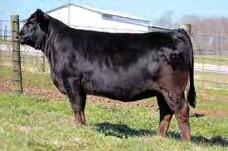
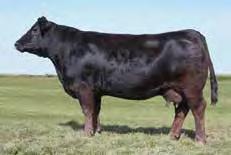

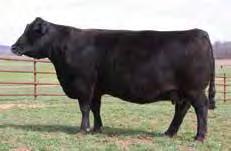
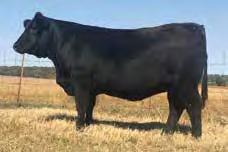

Proven females like this powerful female sell!
GRANITE YALE

MR. IMPACT Z204

HOLE IN ONE 93D
KAT NAPPER D26
JETSETTER E30
Beautiful, bred Rebel Yell daughters like this one sell!
Stylish fall cow/calf pairs like this one being offered!
Several, elite, bred Frontrunner daughters included in this offering.
SLAUGHTER SALE MANAGEMENT DAVID SLAUGHTER 162 HASTING LANE, FREDONIA, KY 270.965.9909 | CELL: 270.556.4259 | HMSLGHTR@AOL.COM FOR SALE INFORMATION:
NCBA CHAMPIONS INTRODUCTION OF PRESERVING FAMILY FARMS ACT

WASHINGTON (July 26, 2023) - The National Cattlemen’s Beef Association (NCBA) announced support for the Preserving Family Farms Act of 2023 that was introduced by U.S. Representatives Jimmy Panetta (CA) and Mike Kelly (PA). This bipartisan legislation would expand IRS Code Section 2032A to allow cattle producers to take advantage of the Special Use Valuation and protect family-owned businesses from the devastating impact of the federal estate tax, commonly referred to as the Death Tax. “America’s cattle producers deserve certainty in the tax code, especially when it comes to succession planning. NCBA is committed to fighting for common sense tax solutions, including the expansion of IRS Code Section 2032A Special Use Valuation, to allow more producers to secure greater relief from the estate tax and preserve family-owned cattle operations for generations to come," said NCBA President Todd Wilkinson. "We applaud Representatives Panetta and Kelly for their leadership and dedication to protecting future generations of agricultural producers through the introduction of the Preserving Family Farms Act of 2023.”
Background
In the Tax Reform Act of 1976, Congress recognized the disproportionate burden of the Death Tax on agricultural producers and created Section 2032A as a way to help farmers keep their farms. However, the benefits of Special Use Valuations have been stymied over the years as the cap on deductions has failed to keep pace with the rising value of farmland.
While the current 2032A reduction is 55 percent higher than the value established two decades ago, USDA estimates that cropland values have increased by 223 percent. Agricultural land values – including on-farm buildings – have also risen dramatically, increasing by 241 percent during this same period. Due to the rapid inflation of farmland values, the 2032A deduction is no longer aligned with the needs of modern agriculture – nor does it accomplish Congress’ intended goal of providing meaningful protection to those producers who are most vulnerable to the estate tax.
NCBA PRESIDENT HITS BACK AT ANIMAL RIGHTS ACTIVISTS AND POLICYMAKERS ATTACKING THE BEEF CHECKOFF
WASHINGTON (July 26, 2023) – Today, National Cattlemen’s Beef Association President Todd Wilkinson, a South Dakota cattle producer, responded to attacks on the Beef Checkoff and NCBA from animal rights activists and their allies in Congress:
“As a cattle producer, I know what it means to work hard for every dollar, and I am proud to invest my money in the Beef Checkoff. It’s extremely disappointing to see members of Congress, who have historically been allies to agriculture, turn on the cattle industry and attack our producer-led checkoff.
“I am especially disappointed in Rep. Victoria Spartz who claimed in a recent interview that she paid into , which does not exist at the federal level. I’d encourage people to understand the truth about how Checkoff programs operate by visiting their websites, or better yet, by getting involved in the Checkoff programs themselves rather than spreading misinformation that furthers the goals of anti-agriculture activists.
“The Beef Checkoff was created by cattle producers, voted on by producers, and is directed by producers. It’s a program that delivers a $11.91 return on investment and strengthens demand for our high-quality beef. The Checkoff is also extremely transparent and if anyone wants to know where Beef Checkoff dollars go, all you have to do is visit the Cattlemen’s Beef Board website.
“Groups like Farm Action also have no business claiming to represent America’s farmers and ranchers. Their leaders, including Angela Huffman and Joe Maxwell, are career animal rights activists who have spent years attacking animal agriculture. In fact, the Animal Agriculture Alliance just added Farm Action, and other groups like the Organization for Competitive Markets to their Animal Rights Extremism list. Members of Congress should listen to the folks who are raising cattle and keeping our nation fed, not animal rights extremists hiding behind an organization that falsely claims to represent the interests of farmers and ranchers. Background View a factsheet with more information about the Beef Checkoff at https://tinyurl.com/2buvwewa.
NCBA WELCOMES HOUSE PASSAGE OF TWO ESA RESOLUTIONS
WASHINGTON (July 28, 2023) - Today, the National Cattlemen’s Beef Association welcomed the passage of two congressional resolutions that nullify the Biden administration’s Endangered Species Act listings of the lesser prairie chicken and northern long-eared bat. The U.S. Fish and Wildlife Service’s listing of these two species undermines on-the-ground, voluntary conservation work and hugely overextends the footprint of the federal government on cattle operations.
“The Biden administration’s listing of the lesser prairie chicken and northern long-eared bat create numerous challenges for cattle producers and fail to consider all of their critical conservation work,” said NCBA President Todd Wilkinson, a South Dakota cattle producer. “We appreciate Congress taking bipartisan, bicameral action to nullify these two listings and I thank the House for passing these two joint resolutions.”
S.J. Res. 9 would nullify the lesser prairie chicken listing. This listing is extremely concerning because it grants non-government third-parties the ability to review cattle producers’ grazing management plans. The lesser prairie chicken also only survives due to producers’ conservation investments, and this rule fails to consider how livestock production supports the birds’ habitat.
S.J. Res. 24 would nullify the northern long-eared bat listing. The northern long-eared bat is declining due to White Nose Syndrome, a naturally occurring disease that is not caused by human activity. This listing disrupts cattle producers’ ability to effectively manage their land.
Both resolutions have already passed the Senate and now go to the President for signature.
28 • Cow Country • September LEGISLATIVE UPDATE
Call Charlie for details! • 859-608-9745 • www.RedBarnandAssociates.com
•
TO
33rd Annual
ELITE BRED HEIFER SALE®


Presented by Bourbon County Livestock Improvement Association
WEBSITE: www.eliteheifer.com
Virtual Sale Available (Download Form on Website)
Monday, November 6, 2023

Sale 6:00 PM E.D.T.
Inspection 1:00-5:00 PM E.D.T
®
ü Approximately 300 heifers available - approximately 150 AI (Angus & Angus X, Charolais X, Simmental X, Red Angus)


ü All heifers calfhood vaccinated
ü All heifers have tested negative for BVD, PI
ü Sale lots will be grouped to calve in 45 days
ü Lots can be viewed online at www.eliteheifer.com
ü Heifers bred to calving ease bulls with EPD’s available, some bred AI
ü Heifers have met minimum pelvic measurement requirements
ü Heifers have met target weight requirements for their breed types
ü Fall health work completed (Bovi Shield Gold 5 FPL5 & Pour-on wormer, 45 days before sale)
ü All heifers meet Large or Medium frame
ü No shorts, bad eyes, no horns, no rat tails (Inspected by Ky Dept of Ag)
ü All heifers are Source Verified AND Electronically Identified
ü FREE DELIVERY OF 10 OR MORE HEAD, UP TO 500 MILES
ü Heifers owned and managed under Elite Heifer guidelines since 12/1/2022
ü All heifers guaranteed pregnant 60 days post sale. Heifers may be palpated by a licensed veterinarian up to 60 days post sale and buyer be refunded $5.00/head for heifers palpated
ü Heifers are qualified for CAIP Program
Sponsored by: Sale Location:
Sponsored by: Southern States – Paris Paris Stockyards Central KY Ag Credit Purina US 68 North Farm Credit Mid-America Select Sires Peoples Exchange Bank Zoetis Traditional Bank FOR MORE INFORMATION: Bourbon County Extension Office – 859-987-1895 or Toll Free 1-888-317-2555
SALE DAY PHONE: 859-987-1977
September • Cow Country • 29
REQUEST A CATALOG CALL
®Registered in U.S. Patent and Trademark Office ISAACS
MATT
HEAD • 40 BULLS
35 FALL CALVING HEIFERS 40 SPRING CALVING HEIFERS • 20 OPEN HEIFERS
(270)774-5486 OR (270) 528-5486 135
Annual Ryegrass: Friend or Fiend?

 Chris Teutsch UK Research and Education Center, Princeton
Chris Teutsch UK Research and Education Center, Princeton
1 Ploidy refers to the number of chromosome sets within a cell.
2 E, early, M, medium or L, late.
3 H, high, M, medium or L, low.
Lately, my row crop friends have been beating up on annual ryegrass pretty hard…with good reason in some cases. It can be a bad weed in wheat fields, and with the advent of glyphosate resistant ecotypes, it can even be hard to kill in row crops like corn and soybeans. It can also be a contaminant in tall fescue seed. If you look at a tall fescue seed tag and it says “Other Crop” and has a value for it, that is most likely annual ryegrass. Even with all of this negativity, annual ryegrass is still my favorite cool-season annual grass, hands down!
Annual ryegrass is a cool-season annual bunchgrass that can be planted in late summer or fall. It can be interseeded into weak coolseason grass stands, double cropped with warm-season annuals, or used as a cover crop. Planted early enough in the fall, it can provide some fall grazing, but the largest proportion of growth will come the following spring.
Annual ryegrass is both highly digestible and extremely palatable making it a desirable species for both grazing and conserved forage. Selecting an Annual Ryegrass Variety Annual ryegrass type. Annual ryegrass is grouped into two main types, Italian and Westerwold. The Westerwold type will produce seed regardless of planting date.
1 NE indicates that the variety was not entered in the UK Annual Ryegrass Variety Trial in that year.

2 Standard deviation is a measure of how much the yield varies between years. In this case, varieties with a lower standard deviation possess a more stable yield form year to year than varieties with a higher standard deviation.
Italian ryegrass, requires a cold period to induce seedhead formation. In reality, annual ryegrass varieties are a continuum between these two types and when planted in the fall behave as a winter annual.
Climatic adaptation. Annual ryegrass varieties exhibit a wide range of winter hardiness. In Kentucky and other transition zone states, cold
tolerance as indicated by winter survival and subsequent yield is an important consideration in variety selection. Always choose varieties that have been tested in Kentucky. Varieties that have performed consistently well in Kentucky are listed in Table 1.
Disease resistance. Crown rust (Puccinia coronata Corda) is a major disease impacting
30 • Cow Country • September
Variety Seed Company Type Ploidy1 Relative Maturity2 Rust Resistance3 Barmultra IIBarenbrug USA ItalianTetraploid CenturionMountain View SeedsWesterworldDiploid M H MarshallThe Wax CompanyWesterworldDiploid L M TetraPrimeMountain View SeedsItalianTetraploid L M WinterhawkOregro Seeds WesterworldDiploid M H
Table 1: Annual ryegrass varieties with proven performance in Kentucky
Year Barmultra II CenturionMarshallTetraPrimeWinterhawk ton DM per acre 2010-11 5.03 NE 4.66 NE 3.93 2011-12 NE1 NE 3.19 NE 3.72 2012-13 3.43 4.53 4.66 4.72 4.29 2013-14 3.15 NE 3.33 NE NE 2014-15 NE 3.74 2.84 2.72 3.39 2015-16 6.36 NE 5.08 5.27 NE 2016-17 NE 3.44 3.43 3.11 NE 2017-18 NE 3.00 2.54 2.54 2.89 SD2 1.50 0.64 0.95 1.24 0.53 Median 4.23 3.59 3.38 3.11 3.72 Average 4.49 3.68 3.72 3.67 3.64
Table 2: Yield of proven annual ryegrass varieties in trials held at the University of Kentucky Research Farm, Lexington, KY
Figure 1: Annual ryegrass produces forage that is both high quality and palatable.
Figure 2: In early spring, annual ryegrass is a wall of highly digestible forage that can be grazed or conserved as baleage. In this photo, research plots are being harvested for yield and nutritive value
2003-04264513.4720.72305218.5670.66
2004-05224020.7760.76254820.3730.73 2005-06----------
2006-07203822.2780.78325414.8650.64
2007-08244215.0740.74335513.4640.63
2008-09325010.9650.64385913.1580.57
Table 4: Seeding rates for annual ryegrass grown in pure stands and in mixtures with small grains, brassicas, and winter annual legumes
1 ADF, acid detergent fiber, NDF, neutral detergent fiber, CP, crude protein, TDN, total digestible nutrients, and NEL, net energy for lactation. 2 CV, coefficient of variation, is a measure of variability. In this case, variability in forage quality was likely caused by differing stages maturity at harvest between years.
annual ryegrass grown in the southeastern U.S. This disease can significantly decrease forage yields and is best controlled by selecting varieties that are rust resistant.
Yield. Choose a high-yielding variety and manage for optimal forage quality. Although expected yield for annual ryegrass depends on many factors, including rainfall and fertilization, University of Kentucky data shows that with good management yields are normally 3 - 4 tons per acre (Figure 2 and Table 2). Use an improved variety that backs production claims with yield data from independent replicated trials. Although catchy names and producer testimonials help to sell seed, they are not always an accurate representation of actual performance. Varietal selection should be based on at least three years of data from the University of Kentucky’s variety testing program.
Forage quality. There are many definitions for forage quality. Probably the single best definition is “the ability of a forage to produce a desired animal response.” The ability of forage to produce this response is impacted by a number of factors including plant species, temperature, fertilization, time of day harvested and stage of maturity at harvest. Of these factors, stage of maturity at harvest is the single most important factor impacting forage quality. As forage plants mature forage quality decreases. Research conducted at Virginia Tech’s Southern Piedmont AREC located near Blackstone, Virginia, indicates that annual ryegrass harvested at the early boot to head stage can have crude protein concentrations ranging from 10% to 20% and energy values of 60% to 75% (Table 3).
Ploidy. This term refers to the number of chromosome sets within a cell. Diploid and tetraploid cultivars of annual ryegrass are commercially available. Tetraploids possess twice as many chromosome sets as diploids. They have wider leaf blades and appear to be more succulent. Recent data suggests that there is little difference in yield or nutritive value between diploids and tetraploids.
Selecting a cultivar adapted to the conditions in Kentucky is more important than ploidy level.
Seed quality. Buy high quality seed of a known variety. Seed should be free of weeds and possess a high germination rate. Buying certified or proprietary seed will ensure that you are getting the genetics you are paying for. Order seed early to ensure availability and timely planting.
Establishment
Annual ryegrass has high seedling vigor, making it well-adapted to either conventional, minimum-tillage, no-tillage establishment or even aerial seeded into standing row crops. Aerial seedings are NOT ideal since they do NOT achieve good soil to seed contact that ensures uniform and timely germination and emergence. Seeding rates are shown in Table 4. Pure stands should be planted at a rate of 20 - 30 pounds per acre. In mixtures with small grains or other winter annual legumes or forbs, seeding rate should be reduced to 10 - 15 pounds per acre. Seeding depth should be ¼ - ½ inch. Annual ryegrass can be planted from late summer (mid-August) to late fall (early-November). However, plantings after mid-September produce little fall growth, are more susceptible to winter injury and may not be as productive the following spring. If fall grazing is desired, seeding after the first good rain in August is a good general rule.
Sod suppression is important when no-till seeding into an existing sod. This may be accomplished by close grazing, mowing or light tillage prior to establishment. A burn down herbicide such as paraquat at or prior to establishment can also be used to suppress sods. However, fall application of paraquat to tall fescue is not recommend since it can seriously injure or even kill tall fescue sods. When overseeding annual ryegrass into an established sod, seeding just prior to a rain event can improve the chances of successful establishment. Annual ryegrass can also be broadcast or drilled into a conventionally
prepared seedbed. Broadcasting seed onto completely or partially tilled seedbed followed by cultipacking produces excellent stands in most years. Aerial seeding into standing row crops is possible, but success is highly dependent on adequate and timely moisture since seed to soil contact is limited at best. In some cases, drilling cool-season annuals such as annual ryegrass into drought stressed sods can be cost effective. In this situation, sods are normally in very poor condition and there are simply not enough remaining plants to actively compete with the coolseason annuals. However, interseeding cool-season annuals into a dormant sod that was well managed prior to the drought does not work as well as expected in many cases. This is because the ground is dry. When the rain finally comes, the seed not only starts to germinate and grow but so does the dormant sod. An established tall fescue sod has an extensive root system that competes well for limited moisture. On the other hand, newly established seedlings have a very small root system and are at a serious disadvantage when competing for water, sunlight and nutrients, when compared to an established tall fescue sod.
Fertilization
Annual ryegrass is moderately tolerant to low soil pH, but is most productive on sites with a pH of 6.0 or above. At seeding, apply phosphorus, potassium and lime according to soil test results. If major changes in soil pH are needed, lime should be applied six months prior to seeding. Annual ryegrass is highly responsive to nitrogen (N) fertilization. If seedings are made before mid-September and fall grazing is desired, apply 40 to 60 pounds of N per acre at seeding. If planting takes place after Oct. 1, apply 20 to 40 pounds of N per acre at seeding. In late winter or early spring, apply 50 to 75 pounds of N per acre to stimulate early growth. If regrowth is desired, an additional 40 to 60 pounds of N per acre
September • Cow Country • 31
FIRST HARVEST SECOND HARVEST YearADF1 NDFCPTDNNELADFNDFCPTDNNEL % Mcal/lb % Mcal/lb
Table 3: Nutritive value of annual ryegrass varieties in trials held at Virginia Tech’s Southern Piedmont Agricultural Research and Extension Center, Blackstone, VA from 2002 to 2010
2002-03335410.5640.63386511.9580.57
2009-10264311.8720.71346015.2630.62 CV(%)2 1913327814102089 SD 56550.0656350.06 Average264515720.71335615640.63
Mixture Seeding Rate An. ryegrass alone 20 to 30 lb/A An. ryegrass + oats 15lb/A + 50 lb/A An. ryegrass + wheat 15lb/A + 90 lb/A An. ryegrass + rye 15lb/A + 85 lb/A An. ryegrass + barley 15lb/A + 70 lb/A An. ryegrass + tritcate 15lb/A + 70 lb/A An. ryegrass + kale/rapeseed/turnips 15lb/A + 2 lb/A An. ryegrass + swede 15lb/A + 1 lb/A An. ryegrass + crimson clover15lb/A + 10 lb/A An. ryegrass + Austrian winter pea15lb/A + 25 lb/A An. ryegrass + hairy vetch15lb/A + 10 lb/A CONTINUED ON PAGE 30
CONTINUED FROM PAGE 29
can be applied after grazing or cutting in early April and May. Do not apply N after early May.
If a legume is used in a mixture with ryegrass, apply the 20 to 60 pounds of N per acre at seeding and 30 to 40 pounds of N per acre in late winter or early spring if the legume makes up 30% to 40% of the stand. As long as the legume continues to provide 30% to 40% of the available forage, no further N applications will be necessary. Note: Fertilization is only profitable if the forage produced is utilized.
Grazing
Under good growing conditions, annual ryegrass can produce grazable forage in as little as 45 to 60 days after establishment. New seedings should be allowed to reach a height of 8 to 10 inches before grazing. Plantings made in late summer or early fall can produce significant growth and should be grazed to 3 to 4 inches to prevent matting during the winter months. In the spring, grazing should be started when plants are 6 inches tall. Starting to graze early will help to stagger the growth stage of ryegrass pastures, establishing a grazing wedge. Animals should be rotated to a new pasture when ryegrass has been grazed to height of 3 to 4 inches in the early spring. Once the warmer sunny days of April arrive (and a good grazing wedge has been established),
ryegrass can be grazed as short as 2 to 3 inches with minimal effect on the system. Pastures should be allowed to regrow to a height of 6 to 8 inches before grazing again. During peak growth in the spring, rest periods between grazing events can be as little as 7 to 14 days. If stocking rate is not sufficiently high, some paddocks should be removed from the rotation and be harvested as conserved forage.
Hay and Silage
Although annual ryegrass is widely used for grazing, it can be used for dry hay, baleage, and silage. Harvest for hay and silage should be delayed until it has reached the boot to early head stage. This will provide enough yield to justify harvest while maintaining forage quality suitable for higher producing animals such as stocker calves or dairy cows. Producers conserving forage for beef cows may want to consider delaying harvest until seedheads have fully emerged. Although forage quality will be lower, it is suitable for brood cows and yields will be increased by 10% to 20%. Since annual ryegrass matures in early spring, curing it as dry hay can be difficult. In most cases, conserving annual ryegrass as baleage or silage is often a better choice. Moisture levels often exceed 80% in early spring; therefore, it is important to wilt annual ryegrass prior to ensiling. It should be wilted to a moisture concentration of 50% to 60% for baleage and 60% to 65% for silage. For more information on making
high quality baleage, see AGR-235, Baleage: Frequently Asked Questions.
Cautions
Hay fires. Barn fires can occur when forage is baled before it is sufficiently dry. Since it is difficult to cure annual ryegrass in early spring, it is critical that producers check moisture levels prior to baling. In many cases, annual ryegrass may feel dry enough to bale (and may even read dry on a hay moisture probe) but may not be sufficiently dry (<18%). Ensure that annual ryegrass hay is dry enough for baling by performing a moisture test that physically dries down the forage. To learn more about determining the moisture of forage crops and preventing barn fires read the following publications
Determining Forage Moisture Concentration Using a Microwave Oven at https://tinyurl. com/4fxswutk and Hay Fire Prevention and Control, VCE Publication 442-105 at https:// tinyurl.com/nha2nkff.
Summary
Annual ryegrass is well adapted to Kentucky and other transition zone states. When properly managed, it can supply forage for late fall and early spring grazing. So, is it a friend or fiend? I’ll let you decide, but in my opinion, it is definitely a friend of Kentucky’s forage and livestock producers! For more information on forage management, contact your local extension office or visit the Kentucky Forages website at http://forages. ca.uky.edu/.
FEATURED EVENTS
More information at https://forages.ca.uky.edu/Events
Kentucky Fall Grazing School
Versailles • September 27-28
Kentucky Fall Grazing Conference
Hardin County Extension Office and Fayette County Extension Office
October 31 and November 1
Kentucky Fencing Schools
Georgetown and Princeton
November 7 and 9
FEATURED PUBLICATION
This month’s featured publication is: “Ryegrass for Forage” by Don Ball and Garry Lacefield. It can be accessed by visiting Oregon Ryegrass Growers Commission webpage, https://www.ryegrass.com/ index.html
FEATURED VIDEO
This month’s featured video is The Power of Soil Life: Little Things Matter-Ray Archuleta. This presentation was given as part of the 2022 Fall Grazing Conferences titled "Profitable Grazing Systems from the Soil Up" held October 26-27 in Leitchfield and Winchester, respectively. https://youtu.be/WW6-RmmcA0o
FENCING TIP
Use high quality temporary fencing. Temporary fencing comes in a number of styles including polywire, electric tape, electric braid and polyrope. Electric tape should be used where high visibility is needed. Polywire is most commonly used by graziers since longer runs can be held on reels. When selecting polywire products, choose products that contain more strands of wire, and for longer runs, choose products that contain wire made of mixed metals. Polywire containing mixed metals are about 40 times more conductive.
FORAGE MANAGEMENT TIPS
• Soil sample and apply any needed lime and fertilizer.
• Plant annual and perennial cool-season grasses and legumes. Consider incorporating novel endophyte tall fescue into your grazing system.
• Harvest late summer hay as needed. Do not harvest alfalfa after mid-September.
• Do NOT overgraze perennial pastures in late summer and fall. Pasture plants accumulate energy reserves in the fall that are used to overwinter and regrow in the spring.
• Feed hay and allow cool-season pastures to stockpile for winter grazing.
• Rest native warm-season pastures until after frost to enhance winter survival and subsequent productivity.
32 • Cow Country • September

A Decade of Herd Development at Eden Shale
Katie Pratt KCA Communications Manager
OWENTON, KY −A lot has changed since the Kentucky Beef Network’s cattle herd first came home to Eden Shale Farm a decade ago. During this time, farm manager Greg Cole and Dan Miller, industry coordinator with the Kentucky Beef Network, have developed a herd that not only serves as a model of a typical Kentucky cow-calf operation, but one that also is conditioned to withstand the farm’s challenging soil and steep terrain.
“Our goal is to show producers techniques and demonstrations that work on this farm, so they can use that information to make decisions in their own operation,” Cole said. “Developing our herd is one way we do that.”
The Kentucky Beef Network-managed Eden Shale Farm is located on 961 acres of steep terrain in Owen County. The farm is named after the Eden Shale soil type, which is found in 33 north-central Kentucky counties and known for its poor quality. The soil type has heavy clay, low organic matter and low water holding capacity.
Even with lower stocking rates of 4.5 acres to each cow-calf pair, not all cattle are able to

withstand the conditions at Eden Shale.
“A big, tall cow will not last on this steep terrain because it is tough on their feet, legs and hips,” Miller said. “A moderate-sized cow that is lower to the ground does much better.”


KBN’s initial herd consisted of cows and calves that the network purchased from several area stockyards in 2013. The original goal was to let the cattle graze the farm’s ample grass supply into the fall and sell them, but Cole and Miller decided to develop a commercial herd from some of them.
“We had a 47% cull rate the second year, but we expected that because of the type of cattle we had and what our initial goal was,” Miller said.
Over the next few years, the herd would continue to change as Cole and Miller looked for heifers and cows who were able to withstand the environment and also be productive mamas. As a result, KBN purchased bred heifers and cow-calf pairs in 2014 and yearling heifers to develop into cows in 2015 and 2016. Today, the network’s herd numbers fluctuate depending where the farm is at in its marketing cycle, but it usually averages around 100 head of

reproductive females.
“Since 2017, we’ve only used our own replacement heifers,” Cole said. “We really want to keep every heifer that we can.”
As Cole and Miller have developed a herd that is able to withstand the steep terrain, a mature cow’s weight at weaning has dropped from an average of 1,500 pounds the first year to an average of 1,275 pounds.
At the same time, weaning weights have increased by 100 pounds. Miller and Cole have accomplished this through genetics and artificial insemination.
Cole and Miller strive to have a herd comprised of 80% to 85% solid black or black and white face calves. They do this by breeding black and black and white heifers to Hereford bulls and red and white heifers to Angus bulls.
Heifer health, disposition and longevity are important considerations when selecting a bull for AI.
“We select for AI bulls that have strong maternal characteristics, such as calving ease,” Miller said.
Over the past decade, the cattle herd at Eden Shale has had a few longtime members and some with colorful personalities. Here are some of their stories as told by Dan Miller, KBN industry coordinator.
Tags 82 and 84 are the longest tenured cows at Eden Shale, having come to the farm in the initial herd in 2013
Tag 333 was the first calf born at Eden Shale and is still a productive member of the herd
Tag 539 will jump fences to eat in a fresh pasture by herself, and then jump back to where she is supposed to be. She does it without ever tearing the fence up. We have looked for where she is getting out at, and we can never find the spot.
After AI, the heifers and cows are divided into two groups that are each exposed to an additional three bulls to make sure breeding is successful. Heifers that aren’t bred successfully are culled.


As a result of their breeding program, Cole and Miller have tightened their herd’s calving window. Earlier this year, 90% of calves were born in the first 45 days of the calving season. This is a huge decline from the over 90 days it took to complete calving during the herd’s first few years.
“Like any other cow-calf operation, our farm budget comes from the sale of our calves. We try to focus on things we can control, and one of them was shortening the calving window,” Miller said. “We are after uniformity and consistency in our calf crop because it benefits us on the marketing end.”

Calves are weaned at six months of age, but most stay on the farm until they are around 18 months old.
“We background our steers a little longer than most because we have enough grass for them to graze on,” Miller said. The commercial cattle market is all about poundage so putting that extra weight on them helps us with marketing.”
Cole and Miller’s goal for the next decade is to continue to develop a productive, efficient herd that is even more acclimatized to the challenging soil and steep terrain present at Eden Shale.

More information about Eden Shale Farm is available at www.edenshalefarm.com. The farm will also host an open house Oct. 21.



September • Cow Country • 35
High quality Black Hereford Genetics being offered! Breeding Age Bulls, Open and Bred Heifers, Young Production Cows & Show Prospects Cattle are consigned by Triple T Farms and KBHA Members. Consigned Cattle have been pre approved by sales management to ensure quality. Online Bidding through DVAuction! Tim Tarter (606) 305-2289 • tripletblackherefords@gmail.com
We had a bottle calf named “Stormy” (Tag 815) that we raised and turned into a pretty good cow. She raised three calves at the farm before she came up open and we had to cull her.





36 • Cow Country • September Join us November 17th at 12:30 (CDT) for our First Fall Production Sale QUALITY VALUES QUALITY CATTLE QUALITY, KENTUCKY SELLING 50 FALL PAIRS, 12 EXCELLENT REPLACEMENTS, AND 12 YEARLING HERD SIRES Dr. David Woodall (270) 847-1010 Luke Woodall (270) 889-1138 WOODALLANGUS.COM



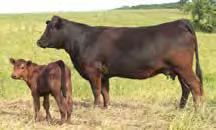
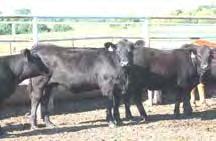

September • Cow Country • 37 For more information: 877-486-1160 www.seedstockplus.com email: john@ seedstockplus.com Seedstock Plus Fall Bull & Female Sale October 21, 2023 Joplin Regional Stockyards Carthage, MO ALL BLACK! Balancer, Gelbvieh & Angus bulls! Registered & Commercial Females! Red Reward Fall Edition Bull & Female Sale November 4, 2023 Wheeler Livestock Auction Osceola, MO ALL RED! Balancer & Gelbvieh bulls! Registered & Commercial Females! Featuring the dispersal of the Grand River Gelbvieh herd! DVAuction Bid & Buy at:

Moly’s founder, Jon Mollhagen, is a rancher through and through.

Before a career journey that led to tromping through South Africa, the bush of Australia, the subtropics of Brazil, and countless other countries, Jon was growing up on his family’s fifth-generation row crop and cow-calf operation in the Smoky Hills outside Lorraine, Kansas. Long days of working beside his father and fixing equipment instilled a set of very deep roots, planted firmly in the prairie soil.
After high school, Jon went on to pursue a degree at Colby County Community College in western Kansas. His time there was cut short when an opportunity for the 19-year-old to start up his own farming operation became available. A willing-to-work attitude allowed him to survive those days. He started a custom farming business, operating on wornout farm equipment and doing whatever it took to get by, eventually working himself up to 10,000 acres in the area. Very early on in his farming career, Jon found that it was much more viable and cost-effective to build his own equipment; it quickly became apparent that it was not possible for most people, especially those with fledgling farm operations like his, to purchase high-dollar machinery. It was this innovative spirit and determination that drove him to create the very first product sold by Moly Manufacturing, Inc., the Trans-Corral. This revolutionary corral was designed to be collapsable and portable; it could be pulled by a single pickup truck. The Trans-Corral quickly enjoyed much success, becoming a big-ticket item at many trade shows across the country.
After the initial success of the Trans-Corral, Jon found himself swamped with requests from his customers for a hydraulic squeeze shoot to pair with the corral. Taking these points, he set out to build the SILENCER chute, the product that put Moly Manufacturing on the map. The quiet, equalized pressure system was one-of-a-kind, also focusing on animal exit and operator safety. It was a brand new take on the squeeze shoot, and it soon gained immense popularity with cattle producers around the country, even internationally. The SILENCER became the flagship product of Moly Manufacturing, building it a reputation as the industry standard in livestock handling equipment.
In the years since the release of the SILENCER, Moly has continued to grow its following, as well as its product line. More recently, products such as the TurretGate and All-Purpose Corral have further improved cattle operations around the world. These releases have served to solidify Moly’s reputation, as well as propel the world of cattle production into a new era of innovation. When Jon sold his first Trans-Corral in 1987, he had no idea that his little corporation would grow to what it has become. It is his hope, as well as that of the entire company, that with the same level of hard work and dedication that has been shown over the years, we can build a better future for cattle production.
Sow Success at the 2023 Fall Kentucky Beginning Grazing School
Jordan Strickler University of Kentucky
VERSAILLES, KY -- The upcoming 2023 Fall Kentucky
Beginning Grazing School, hosted by the University of Kentucky Martin-Gatton College of Agriculture, Food and Environment, promises an immersive learning experience for livestock producers. This year's program has undergone significant updates to intensify its focus on the crucial role of soils in successful grazing management.
The Sept. 27-28 event occurs at the Woodford County Extension office and the UK C. Oran Little Research Farm in Versailles.

This year, the program aims to enhance profitability through a blend of hands-on activities and classroom instruction.
"While this school is geared toward those just starting out, the topics covered and discussions held will benefit producers at all stages," said Chris Teutsch, UK forage specialist.
The workshops kick off at 7:30 a.m. EDT and conclude at 5 p.m.
The curriculum for Sept. 27 features subjects such as soil fundamentals, rotational grazing techniques, optimizing nutritional balance on pasturelands, grazing arithmetic principles and a visit to a local grazing operation. Attendees will learn about portable and seasonal water systems, strategies for assessing pasture productivity, determining optimal stocking rates and practical demonstrations for setting up small paddocks.
Afternoon sessions at the farm explore electric fencing for grazing control, offset strategies, soil and hay sampling, effective forage plant cultivation and grazing management strategies. The day culminates in discussions surrounding appropriate forage species selections to create a holistic grazing system.
The second day features discussions on various fence types and associated costs, instructions designing grazing systems, dispelling common grazing myths impacting profitability and revitalizing rundown farms. Activities conclude with a return to the research farm, allowing participants to observe and dissect the previous day's hands-on grazing exercise. Attendees can calibrate a grain drill and experiment with a user-friendly GPS unit designed to enhance frost seeding precision.
Registration costs $60 per participant and ends Sept. 22. To register and purchase online, visit the UK Forage Website and navigate to the events section, or visit https://bit.ly/3qDPmFB.
To register by mail, send a $60 check payable to KFGC to the following address: UK Research and Education Center, 348 University Drive, Princeton, KY 42445. Please specify "2023 Fall Grazing School" in the check memo line.
The Woodford County Extension office is located at 184 Beasley Drive, Versailles, KY 40383. The UK C. Oran Little farm is located at 1051 Midway Rd., Versailles, KY 40383. Sponsors include the UK Martin-Gatton College of Agriculture, Food and Environment, KY Forage and Grassland Council, KY Beef Network and KY Agricultural Development Fund.
September • Cow Country • 39
Beef Bash 2023 Will Set a Bright Vision for the Future
Aimee Nielson University of Kentucky
LEXINGTON, KY– The University of Kentucky Martin-Gatton College of Agriculture, Food and Environment and the Kentucky Cattlemen’s Association will offer producers and the community a progressive look into the future Sept. 21 at the 2023 Beef Bash in central Kentucky.
Poised to be one of the largest Beef Bash events in recent years, this year’s theme “Vision of the Future” will spotlight the progress of Kentucky’s beef industry and illustrate ongoing efforts of the college and industry partners to enhance the state’s beef sector sustainability.
"Roy Burris started Beef Bash at the UK Research and Education Center in Princeton almost two decades ago,” said Les Anderson, beef specialist in the UK Department of Animal and Food Sciences. “His vision was to create an event to encourage fellowship among producers, the industry and the entities that serve the beef industry. The goal was to unite and empower the beef industry for the future.”
Beef Bash will occur 1-8 p.m. EDT at the C. Oran Little Research Center in Versailles. The event boasts a revamped format designed to emphasize the state’s beef industry’s progress. Attendees may


participate in rotations showcasing current UK and U.S. Department of Agriculture research, along with educational opportunities from UK and the Kentucky Beef Network. The UK Foods group will provide several demonstrations.




"We are excited to be a part of Beef Bash this year to showcase our partnerships with UK and the USDA Forage Research Center,” said Becky Thompson, director of the Kentucky Beef Network. Beef Bash 2023 will include updates about the future of the college and its work supporting this important Kentucky industry.
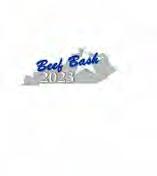

Educational components occur 2-4 p.m. and 6-8 p.m., offering flexibility for attendees to participate. From 4-5 p.m., participants may engage with vendors during the tradeshow. The Woodford County Cattleman’s Association will offer a meal beginning at 5 p.m. Pre-registration is available for $15, including a meal ticket.
To register for Beef Bash 2023, visit https://bit.ly/3P3oXdP. Organizers encourage high school students and 4-Hers, particularly those interested in the beef industry, to attend this year.
DATE: Thursday, September 21, 2023 BEEF BASH 2023 MAKE PLANS TO JOIN US! DATE: Thursday, September 21, 2023 WHERE: University of Kentucky C.Oran Little Research Center 1051 Midway Rd. Versailles, KY 40383 TIME: Registration starts at 1:30PM EST Programs start at 2:00 PM EST BEEF BASH 2023 For More Information Visit: https://www.facebook.com/KyBeefIRM/ VISIT WITH: COMMERCIAL EXHIBITORS EDUCATIONAL EXHIBITS & DEMONSTRATIONS UK PERSONNEL & ADMINISTRATORS KCA LEADERSHIP & STAFF MAKE PLANS TO JOIN US! Tickets are $15 and includes meal. To Pre-register, go to Eventbrite.com and search Beef Bash 2023
Thursday, November 2, 2023
7:00 PM
4:00 PM Dr. Paige Pratt of Neogen
Will discuss using DNA & genomic testing for improved selection.
6:00 PM Dinner sponsored by Neogen
All 300 Heifers are Cost Share Eligible and Genomic tested.
Each heifer purchased gets you a chance to win a bred heifer!
For more info contact Jeremy Shryock 859-967-6479
Jim Akers 859-361-4221 BG Lexington 859-255-7701



An INFORMATION System
Steve Isaacs Extension Professor
Recordkeeping. Root canals. Airline seats. Kidney stones. Boring relatives. Wet dogs. None of them are pleasant. Some should be avoided. Some of them are pretty important though. Keeping records for the farm business, for instance. Not pleasant (usually) but certainly important.
Offer an Extension meeting on recordkeeping and participants stay away in droves. The very term conjures up images of stacks of receipts and bills, columns of numbers, and outcomes that will always be unpleasant. If you made money, you have to pay taxes. If you didn’t make money, you can’t pay your bills. It’s no wonder the task gets delayed, put off, or outsourced…but it can’t be ignored.
Recordkeeping is often too narrowly defined and restricted to the financial side of the business. Have to file taxes, have to get loans. Both require some of the same information. What did you make (revenue) and what did you spend (expenses)? The questions whose answer is the profit on an income statement and/or a Schedule F. What do you own (assets) and what do you owe (liabilities)? The questions whose answer is the net worth or owners equity on the balance sheet.
The financial records are important for sure. However, they are only one of three overlapping information subsystems needed to manage the business effectively. Rather than thinking of “records” or “recordkeeping,” let’s think about “information systems” and financial is just one of them. The Information System consists of Financial,

Production, and Legal subsystems that are different enough to be thought of separately, but similar enough to have major overlaps. Further, they reside in the larger circle of “everything else you need to know.”
Production
The stuff that’s fun. Soil maps and rainfall records. Facility layout and design. Labor efficiency. Input selection. Yields maps. I can remember a crop yield from 1983, but forgot my anniversary this year.
Legal
Boring but important stuff. Contracts. Wills, Deeds. Tax Returns. Loan documents. This is information that usually is developed and used infrequently. But when it’s needed, it’s really important. Legal information needs to be stored securely and easily retrieved. All this important stuff needs to be in a safe and secure place, and more than one person needs to know where that place is.
Financial
More than taxes and loans. While the major incentive for good financial records is often the need to file accurate and timely tax returns and loan applications, there’s more to it than that. The financial information subsystem is the barometer of the health and sustainability of the business. Accurate and consistent financial reports can describe trends and can help predict the future. A colleague has said, “The answers may not be in the financials, but the questions sure are.”
Substitute the term “Information” for
kburdine@uky.edu

“Recordkeeping.” An Information System integrates all the data from Production, Legal, and Financial subsystems the manager needs for timely and informed decision-making.

And integrate it does. Enterprise budgets will require input levels and anticipated yields from Production combined with price and cost data from Financial. Another colleague used to say, “When you’re looking at production, think financial. When you’re looking at financial, think production.” Another overlap: labor management may utilize labor efficiency from Production, wages from Financial, and withholdings from Legal. I can go on, but you get the point.
The point is that it’s an integrated INFORMATION SYSTEM with outputs that can meet financial and legal requirements, but it’s more important as a decision support system.
Finally, I’ve been asked hundreds of times, “What’s the best records system for me?” The answer is always, “The one you will use.”
You can also view current and past issues online at https://bit.ly/2PoHsZj
Co-editors: Kenny Burdine, Alison Davis, and Greg Halich
42 • Cow Country • September ECONOMIC & POLICY UPDATE
Topics
vary greatly
newsletter
The Agricultural Economics Department publishes the Economic and Policy Update towards the end of each month. Each issue features articles written by extension personnel within the department and other experts across the country.
will
but regularly include marketing, management, policy, natural resources, and rural development issues. If you would like to recieve this
by email, please contact Kenny Burdine at

Analytical Conservationist
Katie Pratt KCA Communications Manager
LEITCHFIELD, KY – Grayson County cattleman Jerry Shartzer believes there is always more that he can learn when it comes to farming. His quest for knowledge and consistent improvements have resulted in him having a productive cattle operation that supports and preserves his environment.
Shartzer is a fifth-generation farmer, and with the exception of a short stint as an auto mechanic in Bowling Green, he has farmed his entire life in Grayson County. He officially purchased his family’s homeplace from his father in 1978. Today, his operation includes around 365 acres− 265 of those acres date back to the 1790s when Shartzer’s many times over great-grandfather received the land for his service during the Revolutionary War.
He has a fall-calving herd of around 65 mama cows that are mostly Angus crosses.
Naturally improving his ground
As a full-time farmer, Shartzer works hard to keep his production costs low while maintaining his land’s productivity and preserving his environment.
“He has always farmed the right way,” said Jack Ewing, retired extension agent, who has worked with Shartzer since 1976. “Early on, he really challenged me to use my agronomy
skills because he wanted to improve his soils and make his farm better.”
Shartzer’s operation is located along 2.5 miles of Rough River Lake. Shartzer is very aware of the lake’s presence and does his best to protect its water quality.
He applies very little commercial fertilizer to his ground. Instead, he relies on chicken litter and cow manure to supply the bulk of nutrients to his soil. Since 1995, Shartzer has had a readily available supply of chicken litter. This was when he contracted with Perdue to produce pullets and built two poultry houses on his property. He produced pullets until 2005 when he sold the operation to his son Bradley. Bradley Shartzer continues to raise broilers for Perdue on the farm.
Jerry Shartzer spreads chicken litter in the fields where he plans to raise corn and stored forages. He will spread cattle manure on his pasture ground. Red and white clover provide additional sources of nitrogen.
“Some of my fields have not had commercial fertilizer applied to them in 15 years,” he said. “It has really saved me a lot of money in fertilizer costs. I may apply some potash after Halloween if my soil tests tell me I need it, but that’s typically the only commercial fertilizer I
will purchase.”
He rotates his herd between four pastures that are around 20 acres each. In each pasture, the cattle will have access to three or four waterers. He also annually rotates his fields between forages, corn and wheat to reduce weed pressure.
“I think what makes Jerry Shartzer an outstanding cattleman is the work he has done to upgrade and maintain the fertility of his pasture and hay fields,” said Warren Beeler, Kentucky Cattlemen’s Association board member. “The use of chicken litter has made his land really productive and sustainable.”

Master Tester
Starting as s a young farmer, Shartzer set out to improve his fields. He started working with Ewing on soil testing many years ago. This was during a time when not many people were participating in soil tests.
“We realized that we could really make some headway on his forages and soils based on the results of those first soil tests,” Ewing said. “Jerry liked the information he was getting and enjoyed putting it to use on his farm and making it work.”
Today, Shartzer wants to know exactly what he is putting on his fields, the nutrients his fields need and the type of food his animals are eating. As a result, he regularly tests his soil, manure sources and forages. He sometimes sends the tests to multiple labs to compare or confirm results.
44 • Cow Country • September
“The results are always very interesting to me,” Shartzer said. “I feel like I am improving every time I make changes based on what these tests tell me.”
Fanny Ye, soil conservationist with the Natural Resources Conservation Service in Grayson County, said his willingness to conduct annual fertility tests really makes him standout among area farmers.

“He has decades of soil test results,” she said. “Not a lot of people do that or see the value in it, but he does. He is always willing to try new things and sees value in conservation.”
Shartzer will use his feed analyses to develop a custom feed ration for different classes of livestock. He saves on input costs by producing all of his livestock feed. He uses wheat as a cover crop following corn. He harvests the wheat at a high moisture content and ensiles it for high quality baleage to feed to his newly weaned calves in the spring. His pastures contain cool-season grasses like KY-31 tall fescue and orchardgrass with a mixture of red and white clovers. His pastures are either grazed or cut for hay. He also raises around 20 acres of corn. The corn that doesn’t go to the livestock is sold.
Conservation work
Shartzer wants to provide his cattle with a healthy environment and maintain the land for future generations. He has served on the local Conservation District board for 31 years and regularly works with his conservation office to improve his operation.
About 20 years ago, he received a grant from the Kentucky State Cost-Share program to place two winter feeding facilities on his property. He continues to use those facilities year-round. In addition to winter feeding, they also serve as a place to wean his calves in the spring and provides shade for his herd during the summer. He installed a solar panel on one of the buildings to control his electric fencing.
More recently, he has worked with the Conservation District office to rehab a spring. His father, Tom, developed the spring on the property nearly 60 years ago and about six years ago, Jerry Shartzer decided put the spring back to work watering his cattle. Because the water lines were close to 60 years old, that meant new tanks and new plumbing. Shartzer worked with the Grayson County Conservation District office and an engineer to get the system up to current standards.
“I’m really proud of that spring,” said Brent Miller, retired District Conservationist with the Natural Resources Conservation Service in Grayson County who worked with Shartzer for many years. “We didn’t know what we were getting into when we started, and springs can be kind of finicky. It just fascinates me what gravity can do.”
The spring flows into a 12-foot in diameter tire tank that also serves as a waterer for his cattle. Since the spring is located on a hilltop, the large tire water tank has lines running to four other waterers across his property. These lines are gravity fed.

“The water in the large tire tank is constantly circulating. That prevents the water from freezing during the winter,” Shartzer said. “In the wintertime, the cattle will come to this waterer because the water is warm and not frozen.”
Winter feeding facilities and springfed waterers are just a few among many conservation practices Shartzer has implemented and continues to maintain.
Marketing skills
Shartzer is also known for his cattle marketing. He works with a group of eight to 10 area producers who agreed to raise like cattle and market them together. Each member follows a set weaning and vaccination schedule.
“It’s really been a big help for everyone as far as helping us get the most money for our
cattle,” he said.
Agriculture community involvement
Shartzer is active in the Grayson County agriculture community. In addition to his work with the Conservation District office, Shartzer has served on multiple extension boards, supported the local FFA chapter and been active in the Grayson County Cattlemen’s Association as a member of the cooking crew. He has also been willing to conduct research trials on his farm with University of Kentucky researchers.
“Jerry is an integral part of our agriculture community,” said Whitney Carman, agriculture and natural resources extension agent with the UK Cooperative Extension Service. “He loves Grayson County, and he loves farming. He wants to maintain it for his family.”
Shartzer hopes to one day pass his operation onto his son and grandchildren and is very willing to share his knowledge with others. He is hosting a field day at his farm Sept. 14 in partnership with the Grayson County Extension office.
September • Cow Country • 45
United States Cattle Inventory Down 3%

WASHINGTON, July 21, 2023 – There were 95.9 million head of cattle and calves on U.S. farms as of July 1, according to the Cattle Report published today by the U.S. Department of Agriculture’s National Agricultural Statistics Service (NASS). This is 3% below the 98.6 million head recorded July 1, 2022.
Other key findings in the report were:
• Of the 95.9 million head inventory, all cows and heifers that have calved totaled 38.8 million. This is a 2% drop from 2022’s 39.6 million head.
• There are 29.4 million beef cows in the United States as of July 1, down 3% from last year.

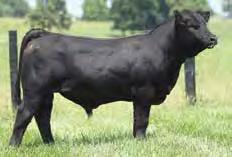
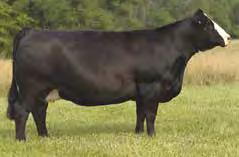

• The number of milk cows in the United States remained unchanged at 9.4 million.

• U.S. calf crop was estimated at 33.8 million head, down 2% from 2022.
• All cattle on feed were at 13.1 million head, down 2% from 2022. To obtain an accurate measurement of the current state of the U.S. cattle industry, NASS surveyed roughly 15,600 operators across the nation during the first half of July. Surveyed producers were asked to report their cattle inventories as of July 1, and calf crop for the entire year of 2023 by internet, mail, telephone or personal interview.
The Cattle Report and all other NASS reports are available online at nass. usda.gov/Publications.
46 • Cow Country • September Saturday, Sept 9, 2023 | 1:00 PM Blue Grass Regional Marketplace, Lexington, KY Catalogs available by request! Follow us on Facebook! Duane & Julie Stephens 812-887-1523 West Salem, IL goldbucklecattle@gmail.com Selling Quality Simmental/ SimAngus™ and Angus – Open and Production Females, Select Simmental/ SimAngus™ Bulls and Genetic Lots Steel Force daughter sells due in November to sexed heifer Hook’s Headline Swain Beth 634D: Executive Order daughter bred to MR SR Red October BRRN Zola K87A:
Bull Prospects
W/C Relentless
sell!
H F Determined:
of
year’s sale offering!
Herd
like this
son
H
Sampling
this
MIILLION HEAD ---------------------------------------------------- 113 ------------------------------------------------------------------------------------------------------- 112 ------------------------------------------------------------------------------------------------------- 111 ------------------------------------------------------------------------------------------------------- 110 ------------------------------------------------------------------------------------------------------- 109 ------------------------------------------------------------------------------------------------------- 108 ------------------------------------------------------------------------------------------------------- 107 ------------------------------------------------------------------------------------------------------- 106 ------------------------------------------------------------------------------------------------------- 105 ------------------------------------------------------------------------------------------------------- 104 ------------------------------------------------------------------------------------------------------- 103 ------------------------------------------------------------------------------------------------------- 102 ------------------------------------------------------------------------------------------------------- 101 ------------------------------------------------------------------------------------------------------- 100 ------------------------------------------------------------------------------------------------------- 99 ------------------------------------------------------------------------------------------------------- 98 ------------------------------------------------------------------------------------------------------- 97 ------------------------------------------------------------------------------------------------------- 96 ------------------------------------------------------------------------------------------------------- 95 ------------------------------------------------------------------------------------------------------- 94 ---------------------------------------------------1998 2003 2008 2013 2018 2023

Value-added Feeder Calf Sales Can Increase Profits
Katie Pratt KCA Communications Manager
No matter how strong the cattle market is producers want to capture the highest profits possible from their animals. Value-added feeder calf sales are ways producers, especially those with small herds, can receive additional income. Selling in larger lots often results in a premium over prices producers would have received if they had sold their cattle in a traditional, commercial stockyards sale.
A wide range of value-added sales are offered across Kentucky throughout the year. Each sale has its own set of rules for qualifying cattle and regulations for producers to follow. Producers must to provide documentation to prove they followed the sale’s protocol. Below are descriptions of some of the valueadded feeder calf sale opportunities available to Kentucky producers, however they may not be all encompassing. Producers can find more information about a particular opportunity by contacting their local stockyards, bull breeder, breed associations, Kentucky Beef Network and UK Extension.
CPH-45 - The Kentucky Certified Preconditioned for Health program for feeder cattle was started by Roy Burris, UK emeritus professor, in the 1980s in Western Kentucky. It became a statewide program in the early 2000s through a partnership between UK and the Kentucky Beef Network. The CPH program was designed to help smaller producers combine their animals to capture price premiums that come from marketing load lots of like cattle. It has since become the standard for many value-added programs available across Kentucky. Since 2001, there have been about 400,000 head of cattle that were sold through a CPH sale in Kentucky. The state has hosted 480 CPH sales since its inception. According to the Kentucky Department of Agriculture’s Market News, cattle sold in CPH sales have averaged $5.97/cwt above the state average price. Cattle in CPH sales also tend to have more weight than typical commercial cattle. The additional pounds lead to more income.
To participate in the program, producers must be Beef Quality and Care Assurance-certified, which also occurs through the Kentucky Beef Network and UK. Producers must follow minimum weaning dates, deworming dates and vaccination schedule. Cattle must be bunk trained and dehorned. Steers must be castrated and heifers must be open. Cattle in this program are sold on special sale dates at local stockyards.
PVAP - The Post Weaning Value-Added Program (PVAP) takes CPH a step further. Producers in this KBN and UK program will keep their cattle between 45 and 120 days after weaning with the goal of preconditioning them for the feedlot. Depending on what section of the program producers enroll in, these cattle will then either be sold in Kentucky or directly to a feedlot in Iowa. Producers retain ownership through the entire process and receive carcass data from the feedlot.
From 2019 to 2022, 37 groups of calves were weaned and preconditioned through PVAP. Producers made an average of $77.60 more per head of net income by participating in this program compared to selling their calves at weaning. This net income is above the expenses producers incur raising the cattle. Only one PVAP group out of the 37 reported a loss during the three-year period.
Purebred breed association sales - Many breed associations will offer breed-specific consignment sales for registered cattle. These sales allow producers to combine their animals into larger lots that are sold to in-state and national buyers.
Many purebred sales will add another level of quality by requiring cattle to have genomic DNA tests and EPDs.
Sound recordkeeping can help producers get more for their animals because the more a buyer knows about an animal, the more they are willing to pay.
Sellers may have to pay a fee to participate in these sales along with commission. These cattle are either sold at the stockyards during a special breed-specific sale or at a farm.
Breed-influenced sales - These sales are open to producers who have cattle that are not necessarily purebred animals, but have obvious signs of a particular breed’s influence. These sales require producers to follow a similar vaccination protocol and weaning requirements as the CPH-45 program. They also require a specific tag. These sales are graded and occur at stockyards.
Shared genetics consignment sales - There are many sales across the state organized by bull breeders. The breeders will offer their customers the opportunity to market their feeder calves in a comingled sale. This type of sale ensures buyers purchase cattle with like genetics.
Some sales require producers to follow a particular health protocol while others do not. Some require the animals to have a specific tag. These sales occur at stockyards or on farms.
Some breeders will offer additional opportunities to their consignors beyond the sales. Consignors may be able to purchase feed and vaccination discounts from particular businesses. They may also have an opportunity to tour a feedlot where some of the cattle are located and receive carcass data.
Buy-back programs - Breeders will purchase their bull’s offspring from producers in some cases. Producers must follow CPH-45 protocols for this program and have calves in a specific weight range. Breeders will DNA test the animals to verify parentage and pay the state average market price plus a premium to the consignor. The breeder then backgrounds the feeder calves before selling them to a feedlot. Once the animal has been harvested, the breeder shares carcass data with producers. Producer groups - In this program, Producers from a particular area join forces to sell their cattle together.
Like in other value-added programs, participating producers want uniformity amongst the cattle. The groups regularly meet to determine time frames for weaning dates, shots and marketing their cattle. Once a decision is made, each member must follow it. Some groups will even purchase feed and vaccines for members. Buying in bulk often results in a discount for these items, which is another cost savings for producers.
Having larger numbers of like cattle creates new marketing opportunities. These groups can sell at the stockyards, but can also solicit bids or even sell online.
Stockyards value-added programs - Stockyards also have value-added program offerings for producers. These will vary by stockyard, and some will have multiple programs. Cattle must be tagged for the appropriate value-added sale. Some stockyard programs will require the producers to give the cattle certain vaccines and a specific diet. Producers may have to provide evidence of purchasing qualifying feedstuffs.
In some programs, a stockyard’s representative will visit producers’ farms to answer questions and ensure the producer is meeting program requirements.
48 • Cow Country • September




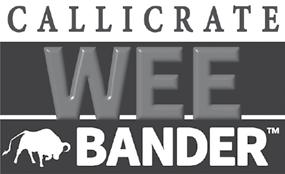









JANUARY 10-12 • LEXINGTON September • Cow Country • 49 Castration Made Easy! CallicrateBanders.com 785-332-3344 Contact your local animal health distributor or contact us at: Lynn Locatelli, DVM "Easy to use, works every time." September 29th - October 1 WKU L.D. Brown Expo Center Bowling Green, KY SCAN FOR DETAILS




50 • Cow Country • September
This full sister to the Genex sire, Boyd Thunderstruck 2311 sells! One of several elite females from the Abigale cow family – Bredin maternal superiority!
Big-time figures in this rare daughter of Basin Jameson 1076 –She will one of the top spring born heifers selling, plus her Sitz Stellar dam also sells safe to Boyd Bellringer 2010.





We are selling our best set of fall calving females ever – Including this outstanding Baldridge Alternative two-year old who will have
A powerful set of bred heifers will be selling, including this Poss Rawhide daughter from a dam by Musgrave 316 Stunner – Safe to GB Fireball 672.
This exceptional daughter of the popular calving ease sire, Baldridge Movin On G780 is from one of our best cow families –She sells with a calf at side by Connealy Craftsman.
Sale Managed By INC
Sale Managed By RANCE LONG 918.510.3464 RLong@RanceLong.com www.RanceLong.com
RANCE LONG, INC 918.510.3464 cell RLong@RanceLong.com www.RanceLong.com PO Box 2, Adair, OK 74330




BOYD ABIGALE 2301 LOT 1 +*20351681 CEDBEPDWEPDYEPDMILKMARBRE$M$C +8 / 35% -.1 / 25% +71 / 25% +129 / 20% +35 / 10% +.54 / 65% +.56 / 65%+87 / 4%+269 / 25%
BOYD ERICA LADY 1314 LOT 4 +*20214247 CEDBEPDWEPDYEPDMILKMARBRE$M$C +10 / 20% +.5 / 35% +68 / 35% +127 / 25% +27 / 45% +1.24 / 10% +.89 / 20%+65 / 45%+343 / 2%
LOT 8A *20639642 CEDBEPDWEPDYEPDMILKMARBRE$M$C +10 / 20% -.1 / 25% +93 / 1% +155 / 3% +28 / 40% +.74 / 45% +.76 / 35%+101 / 1%+302 / 10%
BOYD ELSIEMERE 3046
BOYD LUCY 2046
CEDBEPDWEPDYEPDMILKMARBRE$M$C +8 / 35% +0 / 25% +75 / 15% +124 / 30% +30 / 25% +.39 / 80% +.79 / 30%+59 / 65%+251 / 45%
LOT 13 *20351666
BOYD MADAME PRIDE 1099
LOT 21 *20214206
CEDBEPDWEPDYEPDMILKMARBRE$M$C +6 / 55% +1.8 / 65% +87 / 3% +149 / 5% +22 / 80% +1.14 / 15% +.86 / 25%+74 / 25%+330 / 3% BEEF CATTLE
Macey Thompson KJCA Reporter

Dear CCN Reader, The Kentucky Junior Cattlemen’s Association is gearing up for some amazing opportunities for our members! Our junior board has put a lot of dedication to the upcoming KJCA Fall Classic, the KJCA Academy and the KJCA Cattle Working Contest.
The KJCA Fall Classic will be Sept. 29-Oct. 1 in Bowling Green at the Western Kentucky University’s L.D. Brown Expo Center. We are excited to maintain our list of contests which include photography, skillathon, judging, team fitting, sales talk, showmanship and ad design. We also will be having our prospect market, cow/calf, breeding heifer, and bull shows. While this is our biggest junior event of the year, it is run completely off of sponsorships and donations, and we need your support! If you are interested in being a sponsor, please e-mail Bradon Burks at bburks@kycattle.org.

The Nebraska Youth Beef Leadership Symposium is a conference designed for high school sophomores, juniors or seniors. Students attend the leadership conference and participate in tours of feedlots, ranches and feed mills. NYBLS introduces youth to career opportunities and current issues in the beef industry, and offers education and practice in the use of leadership skills. Kentucky is able to take 10 students this year. This event is sponsored by the Kentucky Beef Council. Travel will be booked/coordinated by the KBC, but attendees may be responsible for partial cost of travel to the event. If you are interested, please fill out the application above and answer the essay question. To register, visit kycattle.org/nybls. For questions, contact Bradon Burks at bburks@kycattle.org.

This fall, we will also be hosting our first ever KJCA Academy on Oct. 19 at the Hardin County Extension office. This event is designed to provide a yearly educational topic for our KJCA members across the state. This year the academy will go over basic cattle working/handling skills, vaccine and needle handling, as well as other BQCA principles. Registration is open now and will close Oct. 5. This event will also go over information for this spring’s KJCA Cattle Working Contest.

We are so excited to be able to offer these experiences for our members in the upcoming months. The KJCA has been an excellent tool for agriculture and youth involvement. If you have any questions about the opportunities within our association, how to register for any of our events, or how you can support the KJCA, please visit kycattle. org/kjca. We hope to see you all very soon!
Established in 2007, the Youth Beef Heifer Initiative has helped Kentucky youth purchase a heifer to begin or grow their own herd. In 2011, KCA was honored to gain Farm Credit Mid-America as a partner to ensure the continuation of this program and increase young people’s the interest in the cattle industry. One winner is selected in each age division based on their applications and responses to questions asked pertaining to the beef industry. Each of the three winners receive up to $2,000 to purchase a heifer from a Kentucky Cattlemen’s Association member. Interested youth can apply on the Kentucky Cattlemen’s Association website, https://www.kycattle.org/heifer-initiative.html.


52 • Cow Country • September





Starting at 9 AM MONDAY, OCTOBER 23, 2023 AT 4765 HWY 27 • BUCHANAN, GA 30113 An Open House Private Treaty Sale bulls will be priced and ready for your selection. B M OFFERING View bulls and females on our website www.whitehawkbeefmakers.com 50 Hereford Bulls Coming 2 Year Olds 40 registered Hereford females will be a auction immediately after bull open house Sale books mailed on request only. EPD WHR Bull Avg AHA Avg. CE 3.9 3 BW 32.8 WW 7254 YW 114 87 SC 1.6 1 SCF 19.8 16.2 MILK 29.5 26 M&G 65.4 53 CEM 2.91.9 UDDER 1.31.25 TEAT 1.3 1.26 CW 89 68 REA 0.590.41 MARB 0.42 0.12 BMI $438 $349 BII $549 $420 CHB $166$115 WHITE HAWK RANCH 4765 Hwy 27 // Buchanan, GA 30113 Gary R. Hedrick (678) 858-0914 // g.hedrick@whitehawkinc.com Ben Hedrick (404) 216-4274 Herdsman, Diego Gutierrez (678) 629-1804 Marketing, James Atkins (404) 922-6508 Visit WHITEHAWKBEEFMAKERS

2023 MEMBERSHIP MADNESS AWARDS
Kentucky's Largest County Cattlemen's Association (Big Bull Award)
BARREN 482 MEMBERS
Top Ten Counties Overall (Cash Prize) BARREN 482 SHELBY 378 BATH 348 CHRISTIAN 348 ADAIR 326 MADISON 307 MARION 301 BRECKENRIDGE 269 HART 244 GRAYSON 237 Top Three Counties per Division in Numerical Membership Increase (Cash Prize) Division 1 SHELBY +56 HART +41 JESSAMINE +34 Division 2 FRANKLIN +35 PULASKI +27 JACKSON +27 MEADE +26 Division 3 UNION +24 NELSON +21 GRANT +16 County Presidents Red Jacket (County Presidents Red Jacket) Irvin Cupper Shelby County John Bunnell Hart County Jim Ed Brown Franklin County Ron Ray Jessamine County Shannon Montross Madison County John Alison Henry County Jimmy Craig Bath County Roy Adams Pulaski County Ben Gilbert Jackson County Alex Richardson Meade County Dallas Shephed Union County Sam Hutchins Nelson County Timothy Henry Grant County Bradley Bardwell Shelby County Anthony Godbey Mercer County Andrew Newcomb Scott County Becky Marlowe Trigg County Chad Bezold Campbell County Don Laster Todd County Phillip Stamm Lewis County Terry Cauley Carroll County September • Cow Country • 55
56 • Cow Country • September DIVISION 1 (151+ MEMBERS) 20232022Diff Barren 482488-6 Shelby 37832256 Bath 348 318 30 Christian 333320 13 Adair 326343 -17 Madison 30727532 Marion 301 309-8 Breckinridge 269281 -12 Hart 24420341 Grayson 237250 -13 Lincoln 227265-38 Washington 2212201 Jessamine 218184 34 Logan 206 210 -4 Edmonson 2042022 Mercer 19217913 Henry 192160 32 Bracken 188194 -6 Clark 185217 -32 Casey 172187-15 Northern Kentucky 168161 7 Green 160154 6 Hardin 160157 3 Warren 159192 -33 Larue 157166 -9 Harrison 153155 -2 DIVISION 2 (76-150 MEMBERS) 20232022Diff Franklin 167132 35 Meade 167141 26 Laurel 15113417 Metcalfe 151148 3 Pulaski 146 119 27 Monroe 128132 -4 Fleming 127123 4 Scott 121 108 13 Daviess 121 119 2 Caldwell/Lyon 119 101 18 Jackson 118 9127 Allen 112 135 -23 Trimble 110 101 9 Anderson 109107 2 Garrard 109 101 8 Trigg 104 91 13 Northeast Area 103 114-11 Boyle 101 983 Mountain 97898 Bourbon 97934 Pendleton 90882 Owen 9096-6 Fayette 83812 Purchase Area 8385-2 Webster 79772 Louisville Area 7577-2 Clinton-Cumberland6380 -17 Twin Lakes 5883-25 DIVISION 3 (UP TO 75 MEMBERS) 20232022Diff Muhlenberg 78753 Lewis 7867 11 Robertson 77734 Nelson 76 5521 Campbell 74 62 12 Grant 74 58 16 Mason 70664 Rockcastle 6670-4 Out of State 6671-5 Russell 6573-8 Woodford 64631 Union 633924 Oldham 61583 Taylor 5964-5 Todd 5846 12 Calloway 5575-20 Montgomery 54477 Estill 53458 Ohio 50464 Whitley 49436 Carroll 4535 10 Nicholas 43412 Wayne 4144-3 Simpson 41374 McCreary 38299 Highlands 3845-7 Hancock 3641-5 Butler 35314 Knox 30255 Bullitt 30282 Clay 2931-2 Crittenden 26251 Hopkins 2324-1 McLean 2223-1 Menifee 21 19 2 Livingston 17 20-3 Henderson 9 13 -4 Gallatin 871 Eastern Foothills752 Powell 761 Magoffin 660 Pike 541 Harlan 110 Bell 02-2 If you need anything for membership, please contact Rachel Cain at (859) 278-0899 or rcain@kycattle.org 20232022Difference Totals as of: August 7, 2023 11,114 10,920 194 The Kentucky Cattlemen's Association has officially reached 11,000 members! We could not have accomplished this without the support and hard work of each local chapter, leader, and member. Thank you all for your efforts! We are excited to continue to grow! The 2024 KCA Membership year will run October 1, 2023 - September 30, 2024. Renew early to enjoy the full benefits of membership and to avoid interruption of your Cow Country delivery! MEMBERSHIP
2023-24 MEMBERSHIP APPLICATION
* MEMBERSHIP YEAR 10/1/23– 9/30/24
*Payments of KCA membership dues are tax deductible for most members as an ordinary and necessary business expense. However, charitable contributions of gifts to KCA are not tax deductible for Federal Income Tax purposes. Due to new IRS regulations, $2.24 of your dues would not be deductible. Approximately $12 of your dues will go towards the monthly publication Cow Country.
PLEASE CHECK THE MEMBERSHIP(S) YOU WOULD LIKE TO JOIN:
KCA MEMBERSHIP ($30/YR) NEW RENEWAL
Membership dues are $30 unless otherwise listed below
KCA COUPLE MEMBERSHIP
To add your spouse, please add $15 to your KCA Membership
KENTUCKY JUNIOR CATTLEMEN’S ASSOCIATION ($10/YR) NEW RENEWAL
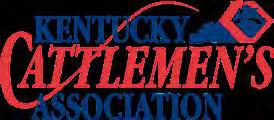
I WOULD LIKE ADDITIONAL INFORMATION ON THE YOUNG PRODUCER’S COUNCIL
TOTAL MEMBERSHIP:
$ KCA $ KJCA
TOTAL CONTRIBUTIONS:
$ CATTLEMEN’S FOUNDATION DONATION (voluntary)
TOTAL AMOUNT ENCLOSED:
$ ALL DONATIONS TO KCF ARE TAX DEDUCTIBLE
COUNTY DUES
Dues are $30 except for the counties listed below.
Allen...............................$40
Anderson........................$25
Bourbon.........................$20
Boyle ..............................$35
Bullitt..............................$20
Butler..............................$25
Franklin ..........................$25
Highlands .......................$20
(Boyd, Floyd, Johnson, Lawrence, & Martin)
Hopkins ..........................$35
Laurel.............................$35
Lincoln ...........................$25
Louisville Area ................$20
(Jefferson, & Spencer)
Magoffin .........................$20
Menifee ..........................$25
Mountain........................$25
(Breathitt, Knott, Lee, Leslie, Letcher, Morgan, Owsley, Perry & Wolfe)
Oldham ..........................$35
Taylor..............................$20
Twin Lakes ......................$20
Warren ...........................$40
Wayne ............................$25
Whitley ...........................$25
Woodford......................$25
September • Cow Country • 57
NAME SPOUSE NAME FARM NAME ADDRESS CITY COUNTY STATE ZIP RECRUITED BY PHONE FAX EMAIL
1-100
YOU WOULD ALSO LIKE TO JOIN THE NATIONAL CATTLEMEN’S BEEF ASSOCIATION
NCBA is now a State Marketing Partner with the KCA. You can pay your dues to both organizations with one check, at the same time. # HEAD DUES $150 101-250$300 251-500$450 501-750$650 751-1000$650 1,001-1,250$1,150 1,251-1,500$1,400 1,501-1,750$1,650 1,751-2,000$1,900 > 2,000$1,900
# HEAD DUES Complete and return to: Kentucky Cattlemen’s Association 176 Pasadena Drive • Suite 4 • Lexington, KY 40503 Join online at www.kycattle.org or call (859) 278-0899 September • Cow Country • 57
IF
The
+ .38/HD
KY, TN Youth Tour Industry Facilities
Bradon Burks KBC Director of Education

On July 31, 19 Kentucky and 12 Tennessee young people, ranging from high school sophomores to college freshmen, gathered in Lexington to participate in the Kentucky Beef Council/Tennessee Cattlemen’s Association’s Youth Leadership Program. This program was designed to explore all aspects of the beef industry, including hands-on experiences in areas of beef marketing, beef production, and beef advocacy. These youth attendees were also able to network with leaders about various careers and internship opportunities.

Our first stop on the trip was Certified Angus Beef. John Stika, president of Certified Angus Beef, welcomed the youth and talked with them about the opportunities they have in the beef community today, including an outlook on the consumers’ viewpoint and demand drivers for beef. Attendees also met with various meat scientists and chefs to develop their knowledge and skills in beef processing and preparation.
For Kat Hudson, a junior from Clark County, Certified Angus Beef was one of her favorite stops.
“I loved getting to learn about the beef industry from outside the field,” she said. “This definitely opened my eyes to how big our industry really is!”
ATTENDEES
Emily Tabor, Breckinridge County
Vance Pickering, Breckinridge County
Maggie Sparks, Bourbon County
Gage Stone, Carroll County
Whitney Peck, Caldwell County
Mollie Goode, Christian County
Kat Hudson, Clark County
Samantha Pecco, Fleming County
Brylee Little, Hardin County
Elly Hampton, Hopkins County
Addyson Simpson, Kenton County
Lilly Darr, Muhlenberg County
Landon Miller, Nelson County
Brooklyn Felts, Nicholas County
Emily Frogue, Todd County
Jennie Watts, Trigg County
Cooper Westfall, Woodford County
Drew Shryock, Woodford County
We were also able to visit Mandy Atterholt, Beef Community Educator for Certified Angus Beef, where she hosts various groups on her family farm and shows them what a typical beef farm looks like. Mandy stressed to the attendees how the consumer wants to know where their food comes from, as well as tips on how to advocate to increase beef demand.
Chris Stone works alongside his father in Gibsonburg, Ohio, where they manage a finishing/feedlot operation of around 1,500 head. After serving in the military, Chris came back home and worked to rejuvenate his family's operation. Stone Farms works to raise natural beef, focusing on a diet of high-distiller’s grain and corn. Chris really stressed to the attendees to continuously learn and never be afraid to think outside of the box. Many of the attendees on the trip came from a seedstock or cow-calf background, so being around a feedlot was new to them; we appreciate the Stone Family for giving many of our youth their first look into a unique sector of the industry.
One of the attendees’ favorite stops of the trip was visiting with Ben Crites and Mike Landers at ST Genetics. These gentlemen did an outstanding job in highlighting how they utilize reproductive technologies to further develop the beef producer’s cow herd. We were able to take a deep dive in all aspects including collection, sexing semen, freezing, shipping and even a bull parade. For many attendees, they were also able to see some bulls they had used in their artificial insemination programs at home. We are grateful for Dr. Crites and Mr. Landers for hosting our group for such a once in a lifetime experience.
Kalmbach Feeds was founded in 1963 and is a second- and third-generation, family-owned and operated business in Upper Sandusky, Ohio. Our attendees were able to see how the creation, bagging, shipping and marketing of
feed/feed products works within the livestock industry. It was a unique experience in seeing how automated many of their processes are, including the utilization of robotics and technology. Our guides motivated our youth to also stay open minded about career opportunities within the industry.
United Producers Inc. hosted us for dinner during our trip where Bill Tomm and Mike Bumgarner shared their stories on how they have gotten to their positions, as well as the opportunities our youth have in growing their beef operations, including employment opportunities available to them in their own communities. During our dinner, we were also joined by Ohio Cattlemen’s Association Executive Director, Elizabeth Harsh who encouraged our youth to stay involved in the industry and to continue learning. We appreciate their wisdom and hospitality! Our final educational stop was with MH EBY Inc. in West Jefferson, Ohio. Although none of the attendees brought their checkbook or truck to take a trailer home, they were able to see how livestock trailers are created from start to finish. I think this showed many of our youth how detail oriented the staff are to create such a big product that so many producers utilize. Our visit was another prime example of how there are a variety of careers that are involved in the beef industry that are not just raising cattle.
I’d like to say thank you to all of our hosts, Jake Harrod, as well as Melinda Perkins and Sally Wingler from the Tennessee Cattlemen’s Association for helping conduct such an incredible opportunity for our youth. The commitment to youth in the beef industry is vital for our long-term sustainability, so thank you to our producers for entrusting me in developing our next beef leaders. I look forward to planning our next youth development opportunity soon.
58 • Cow Country • September





September • Cow Country • 59
BQCA Guide to Needle Usage
Jake Harrod Kentucky Beef Network Program Coordinator

Needle size is based on route of administratioin, animal size, and viscosity of Injection fluid.

long needle)
(1-11/2" long needle)
BEEF BULL SEEDSTOCK SYMPOSIUM
Fayette
October 17, 2023
8:30am-4:30pm EDT
Giving shots and vaccinations are some of the many things that applies to the entire cattle industry regardless of the type of production practice. It also one of the most important things that a producer can learn. While at a glance it may seem basic to give a shot or vaccination, it is a bit more complex than just sticking the cow with a needle. Here we will guide you through the biggest things you need to keep in my mind when administering vaccinations or giving shots.
Choosing your Needle
One of the most important things that you can do is select the right needle for the situation. Choosing the wrong sized needle can lead to the medicine or vaccine not working or it may even harm the animal. Using this figure can help to cut out any questions you may have when trying to figure out what needles should be used. It helps to save you time and minimize mistakes. The main things to consider when choosing a needle include route of administration, size of the animal, site of the injection and technique used.
Site of Injection and Technique
The two most common techniques for giving injections are subcutaneous (SQ) or Intramuscular (IM). The preferred site for these injections is the neck region, so the economically important cuts of meat across the animal are protected. Whenever given the chance, producers should choose to use products that are labeled SQ rather than IM.
Needle Use and Care
There are many things to keep in mind when giving an injection. Make sure the site where the injection will be given is clean. Single use needles are preferred over reusable. Keep your vaccine bottles sterile. Do not keep a needle and syringe in the top of the bottle. Never put the needle back into the bottle after it has been used.
Change needles after every 10 to 15 head of cattle. Immediately change any needle that becomes bent, is contaminated with manure, dirt, chemicals etc. or if the needle point becomes burred. Broken needles are an emergency. If left, they will go further into the tissue and the animal should not be sold or sent to a packer.
The number one thing to remember when you are cleaning your needles is to not use disinfectants. Disinfectants will remain on or in the needle and will hamper the effectiveness or ability of what is being injected. To clean the needles, boil them in hot water to get rid of any bacteria. To dispose of needles, put them in a sharps container or a thick plastic container with a thick lid, such as a liquid detergent bottle. Then you can place it in a rigid container lined with plastic and dispose of them as solid waste.
Barren County
October 18, 2023
8:30am-4:30pm CDT
This program is targeted for seedstock producers that are marketing beef bulls.
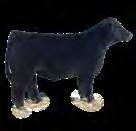
Topics will include proper bull development, strategies for genetic improvement (EPDs, genomics, selection indexes) and marketing strategies
Speakers will include Dr. Matt Spangler (University of Nebraska) and speakers from the University of Kentucky and University of Tennessee
Registration will be required to attend and there will be a small registration fee to cover some costs. To receive a detailed agenda and registration information please email mmgi241@uky.edu indicating your interest with your contact information
Sponsored by University of Kentucky Extension, University of Tennessee Extension, Kentucky Ag Development Fund and Kentucky Beef Network
60 • Cow Country • September
SQ Injection (3/4-1"
IM Injection
Animal Size (lb) <300300-700>700<300300-700>700 Fluid Viscosity1 Needle Guage Thin 1818-161620-1818-1618-16 Thick 18-161616 181616 1 An example of thin viscosity fluid: saline, thick:
source: UK Publication ID-140
MAKE NO INJECTIONS HERE MAKE ALL INJECTIONS HERE
oxytetracycline
KY Beef Quality Assurance Program
County
Eden Shale Update

 Dan Miller Industry Coordinator, Kentucky Beef Network
Dan Miller Industry Coordinator, Kentucky Beef Network

Finally, it’s the cow-calf producers turn to enjoy the strong side of the sector for a while. And with a 60-year low in inventory, hopefully we can benefit for several years before the market corrects. For the last two years, Eden Shale has been retaining our own steer calves and grazing them the following summer. Our general plan is usually to coast them through the winter with the animals putting on frame but not a lot of flesh. In the spring, we deworm and implant them before turning them out to grass to add the pounds. We then aim to market them in the first half of August as nine weights. This year, our plan worked well. First of all, we had enough rain through the summer to keep the grass growing. This allowed us to carry the 30 steers born in the spring of 2022 on our grazing ground. The steers performed well too. At turn out in April, they averaged 744 pounds and at marketing in August they averaged 904 pounds. This gave them an average daily gain of 2.6 pounds per day. This was done on grass alone with no grain. This group was also marketed a week earlier than last year’s steers and weighed 21 pounds more.
At load out, we had 21 steers that
averaged 954 pounds and brought $2.35/ lb., and 8 smaller steers averaged 854 pounds that brought $2.40/lb. There was one steer that was an “out” due to an extreme case of pinkeye. In all, I was very pleased with the steers’ performance. Speaking of pinkeye, we started the season off fighting a ton of pinkeye in the herd. We got the herd up several times and treated a third of the cows and calves each time. We have been vaccinating with a cultured vaccine, but the strain we have must have mutated slightly because it was no longer effective. Our local vet, Dr. Matt Parker, made an updated version of the vaccine, and it seems to be working. We no longer have a massive problem with pinkeye, just the occasional bad eye here and there. We use a dart gun to treat those random cases as they arise.

Lastly, I want to introduce you to our fall intern, Joel Olivas. Joel is an Owen County High School student. He plans to attend lineman school after high school and work for the electric co-op. He also plans to buy a farm and have his own herd of beef cattle one day. Joel is also an avid hunter and fisherman when he isn’t working for local farmers. Welcome aboard Joel, we are sure glad to have you at Eden Shale Farm.


September • Cow Country • 61 SAVE THE DATE OPEN HOUSE OCTOBER 21 Ben Lloyd Whitesville, KY (270) 993-1074 benlloyd0223@gmail.com Charles Embry Cave City, KY (270) 646-5939 dale.embry@yahoo.com Jacob Settles Springfield, KY (859) 805-0724 jacob.settles4@yahoo.com Ron Shrout Winchester, KY (606) 205-6143 ronshrout@bellsouth.net KENTUCKY BEEF NETWORK FACILITATORS
Welcome, Joel Olivas!
Using a dart gun to treat for pinkeye
Don’t Miss Opportunities in this High Market
Kevin Laurent Extension Specialist, Department of Animal and Food Sciences, University of Kentucky
As we approach the end of summer and nighttime temperatures begin to consistently dip into the 60’s, our thoughts turn to fall activities. One of which is marketing our spring-born calves. It’s quite easy to feel good about the cattle business these days with current market prices, however we need to make sure we continue to manage our calf crop and not miss out on the opportunities this current market is offering. Good management pays dividends in both lean years and good years. In fact, one could make the case that good management pays even greater dividends in times like these. The following are four management considerations that will help maximize calf value at sale time.
Avoid selling bulls. Table 1 compares steer and bull prices in Kentucky markets for the week of Aug. 6 to Aug. 12. As is usually the case, discounts for bulls increase as calves move up in weight class. What is somewhat unusual is the severity of the current discounts. Bull calves weighing in the 500-600-pound weight range have historically taken a $10-12 per cwt. discount compared to similar weight steers. However, the present discounts for that weight have been running in the $20+/cwt. range. As Table 1 shows, last week that amounted to roughly $95-$152 per head. Although it is best to castrate male calves prior to 3 months of age, the next best option is to castrate prior to weaning. Research also shows that if calves are castrated early and implanted, weaning weights will be similar to intact males at weaning. There is no good reason not to castrate. It’s something that must be done and should be done on the farm the calf was born to avoid the most stress
and add the most value.
Wean, feed and take advantage of the current value of gain. Weaned lots of calves have been consistently selling at a premium compared to unweaned calves. Weighted average premiums in two recent CPH sales were $10.45/cwt over state average prices with premiums as high as $20/cwt for lighter weight heifers. But what is most promising is the current value of gain being offered in the marketplace. Table 2 shows the current value in dollars per head of each additional 100 lbs. of weight. By simply dividing that dollar amount by 100, you can calculate the maximum cost of gain that a feeding program must stay under to be profitable. You can see that there is an excellent opportunity to profitably add weight to calves, especially at the lighter weight classes. Lighter weight calves are also cheaper to feed and have a lower cost of gain than bigger calves due simply to less feed needed for body maintenance. Backgrounding/ preconditioning budgets using $300/ton feed, $90 hay, 8% interest, and $15 health costs along with 2-2.5 average daily gains are currently showing cost of gain figures of approximately $1.10/lb. for 375-575 lb. calves to upwards of a $1.50/lb. for 775-875 wt. cattle. These costs of gains leave room for a potential significant profit.
Consider a pre-weaning working. Working calves prior to weaning has always been a standard recommendation, especially for calves that were going to be retained on the farm through a pre-conditioning program. With current market prices, this may be a profitable strategy even for calves that will be sold off
the cow. Virginia Tech research showed a 10-40 lb response in added weaning weight by deworming and implanting calves in midsummer. If it’s early September and we know we won’t sell for another 45-60 days, it may pay dividends to deworm, implant and boost fly control now. If these practices add an additional 20 lbs of sale weight given the current market prices, a $10 investment may net a $40 return. Beware of sale day shrink. Sale day shrink is simply a cost of doing business. Anytime we move or haul cattle we can expect at least a 2%-3% reduction in weight primarily due to fill. However, with every pound worth $2+ dollars, reducing excess shrink needs to be a consideration. Oklahoma State research showed that unweaned bawling calves hauled to the sale barn the night before sale day shrank approximately 2% more than calves delivered on sale day. Sometimes delivering calves the night before a sale can’t be avoided but be mindful that a fresh weaned bawling calf in a feed and water pen at the yard the night before the sale is not going to eat or drink very much, if at all. Some other considerations to reduce shrink are to improve facilities so cattle can be sorted and loaded quietly and efficiently just prior to hauling. Also consider hauling calves early to the yard to avoid long waits in line to unload.
However you plan to market your calves this year, prices should be favorable. But there is nothing wrong with trying to maximize value and get paid a little extra for all your hard work and efforts.
62 • Cow Country • September
Weight Steer PriceBull Price DiscountDiscount lbs$/cwt$/cwt$/cwt$/head 375260.00260.77 0.772.89 425260.58251.87 -8.71-37.02 475259.59247.18 -12.41-58.95 525252.83234.74 -18.09-94.97 575258.39232.02 -26.37-151.63 625252.18219.98 -32.20-201.25 675249.34213.89 -35.45-239.29 KY Weekly Livestock Summary Monday August 14, 2023
Table 1: Steer Price vs Bull Price
Weight Steer PriceBull Price DiscountDiscount lbs$/cwt$/cwt$/cwt$/head 375260.00975.00 475259.591,233.05 258.052.58 575258.391,485.74 252.692.53 675249.341,683.05 197.301.97 775230.281,784.67 101.631.02 875233.062,039.28 254.612.55 KY Weekly Livestock Summary Monday August 14, 2023
Table 2: Value of each additional 100 lbs of gain
PRIVATE TREATY SALES CHECKOFF INVESTMENT FORM
State and National Beef Promotion and Research Programs Information is required by 7 CRF 1260.201. Failure to report can result in a fine. Information is held confidential per 7 CRF 1260.203.
Total Checkoff Payment for STATE OF ORIGIN*
X BUYER SELLER PHONE
X
Send Report and Remittance to: Kentucky Beef Council
176 Pasadena Drive
Lexington, KY 40503
For additional information: call 859-278-0899 or email beef@kycattle.org
*If the cattle purchased came from another state within the last 30 days, indicate from which state the cattle were purchased.
The U.S. Department of Agriculture (USDA) prohibits discrimination in all its programs and activities on the basis of race, color, national origin, age, disability, and where applicable, sex, marital status, familial status, parental status, religion, sexual orientation, genetic information, political beliefs, reprisal, or because all or part of an individual’s income is derived from any public assistance program. (Not all prohibited bases apply to all programs.) Persons with disabilities who require alternative means for communication of program information (Braille, large print, audiotape, etc.) should contact USDA’s TARGET Center at (202) 720-2600 (voice and TDD). To file a complaint of discrimination, write to USDA, Director, Office of Civil Rights, 1400 Independence Avenue, S.W., Washington, D.C. 20250-9410 or call (800) 795-3272 (voice) or (202) 720-6382 (TDD). USDA is an equal opportunity provider and employer.
September • Cow Country • 63
September • Cow Country • 63 TODAY’S DATE ID NUMBER (IF KNOWN) SELLER’S NAME CITY SELLER’S SIGNATURE STATE ZIP
BUYER’S NAME ADDRESS ADDRESS CITY STATE ZIP BUYER’S SIGNATURE DATE OF SALE PERSON REMITTING FORM TOTAL NUMBER OF CATTLE SOLD + = $
Both the seller and the buyer are responsible for making sure that the $1 per head assessment is collected and remitted to the Kentucky Beef Council. $ $1.OO per Head Federal Checkoff $ $1.OO per Head State Checkoff Federal and State
According to the Paperwork Reduction Act of 1995, an agency may not conduct or sponsor, and a person is not required to respond to a collection of information unless it displays a valid OMB control number. The valid OMB control number for this information collection is 05810093. The time required to complete this information collection is estimated to average 1 hour per response, including the time for reviewing instructions, searching existing data sources, gathering and maintaining the data needed, and completing and reviewing the collection of information.
BOYD BEEF CATTLE
6077 Helena Road
Mayslick, KY 41055
Charlie Boyd II: (606) 584-5194 • Blake Boyd: (606) 375-3718
www.boydbeef.com • cboyd2@maysvilleky.net
BRANCH VIEW ANGUS
927 Old Liberty Pike • Hustonville, KY 40437
(859) 238-0771 • www.branchviewangus.com
James S. & LuAnn Coffey, Donald & Donna Coffey
Annual Production Sale- 2nd Saturday in April

BURKS CATTLE CO.

531 Rick Rd. Park City, KY 42160
Eddie Burks • (270) 991-6398 www.burkscattle.com
BURTON & SONS ANGUS

Joe D. or Karen Burton
480 Hominy Hill Rd. Nancy, KY 42544
Joe: (606) 305-3081
Located 15 miles West of Somerset • klburton01@windstream.net


Bulls & females sold private treaty. Inquiries Welcome. Sell only what we would buy.
Data driven since 1981.
COFFEY ANGUS FARMS
661 Hopewell Road Liberty, KY 42539
Matt Coffey: (270) 799-6288
Dewey Coffey: (606) 706-2699
Genetics for Maximum Profitability since 1984
DAVIS BEND FARMS

2315 Davis Bend Road Canmer, KY 42722
timmothyljeffries@gmail.com www.davisbendfarms.com
Tim: (270) 528-6605 • Leslie: (270) 528-6435
FALL CREEK ANGUS
448 Corder Farm Road
Monticello, KY 42633
Ronnie Corder (606) 348-6588
ANGUS
THE BUSINESS BREED
HILL VIEW FARMS
Jimmy Gilles 5160 Lee Rudy Road Owensboro, KY 42301 (270) 929-5370 jcgilles86@gmail.com
JOHNSON FARMS ANGUS
Angus Bulls & Females Slaughters, KY Keith: (270) 635-0723 Reese: (270) 635-1137
LYNN CREEK FARMS

Kris and Sara Lynn 2184 Bardstown Rd Springfield KY 40069 573-721-6663
MT. MORIAH ANGUS FARMS
Bob, Kathy, Rob, and Janna Clark (859) 748-5558 1446 Kennedy Bridge Rd. Harrodsburg, KY 40330 Bob: (859)339-2610 • Rob: (859)612-1594 mtmoriahfarms1@gmail.com www.mtmoriahangus.com
FOUR KINGS ANGUS
250 Bright Leaf Dr. • Harrodsburg, KY 40330 Cary & Kim King Carymking@yahoo.com • fourkingsangus.com Cary Cell: (859) 613-3734 • Colby Myers - Purebred Manager

OLD BARK FARM 370 Ferrill Hill, Buffalo, KY 42716 Kenley Conner (502) 905-7825 Registered Angus Cattle
4040 Taylorsville Rd Taylorsville, KY 40071
Gordon Schubert 502-477-2637 • 502-548-8440
Anne Patton Schubert 502-477-2663 • 502-548-2359
HAMILTON ANGUS FARMS
Eddie Hamilton 2142 Stilesville Road Science Hill, KY 42553
edjohami@aol.com
(606) 271-1286
Bulls and Females for Sale
HERITAGE FARM
Tom McGinnis 1024 Hinkle Lane • Shelbyville, KY (502) 633-1634, home • (502) 633-5100, work (502) 655-0164, cell

SEP 23
Boyd Beef Cattle Female Sale


Mays Lick, KY
OCT 28
Lynn Creek Farms Best of the Bluegrass
Springfield, KY
OCT 07
Central Kentucky Angus Sale

Danville, KY
President: Henry B. Smith
Vice President: Anne Patton Schubert
Secretary/Treasurer: Shayna Gibson
PLEASANT HILL FARMS

Gil, Mary, Corbin, Caroline, and Catherine Cowles 500 Rockfield Richpond Road
Rockfield, KY 42274
(270) 843-9021 • Fax (270) 843-9005
Located 7 miles west of Bowling Green, 1/2 mile off Hwy 68/80
SMITHLAND ANGUS FARM
4437 East Hwy 80, Russell Springs, KY 42642
Henry Bryan, Melissa, Bryanna and Blane Smith 606-271-7520
bmsmith@duo-county.com
ST. CLAIR FARMS REGISTERED ANGUS

Eric & Sherry St. Clair
13433 Falls of Rough Road • Falls of Rough, KY 40119
Home: (270) 257-2965 • Cell: (270) 617-1079
www.stclairangus.com
Performance Tested Bull & Female Sale April 2020
TAMME VALLEY FARM
Jacob Tamme, Owner-Operator (859) 583-7134
jacob.tamme@gmail.com
www.tammevalley.com & Find us on Facebook!

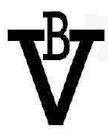
TRIPLE D ANGUS
Nathaniel & Darla Denham
Nathaniel(Bub), Sarah, Ashley Denham (606) 423-2457 • (606) 875-0780 tripledangus.com
TWIN CREEK FARM
Shawn, Melissa, Devin & Dylan Gibson (270) 337-3072 or (270) 692-5304
Dennis & Emily 270/337-2128 or 270/402-4338
WHITE FARM

Tim and Amy White
3664 Military Pike • Lexington, KY 40513
Home: (859)223-0326
Tim: (859) 509-5401 • Amy (859)227-2552 whitefarm4@twc.com
KENTUCKY ANGUS ASSOCIATION MEMBERSHIP APPLICATION

OCT 14
OCT 22
Return to: Shayna Gibson 1535 Fallen Timber Road New Castle, KY 40050 • Annual Dues $35
Pleasant Hill Farm
Rockfield, KY
OCT 30
Oak Hollow Bull Sale
Smiths Grove, KY
OCT 30
Stone Gate Farms
Flemingsburg, KY
Heritage Farm Production Sale
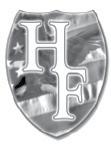
Shelbyville, KY
NOV 12
National Angus Heifer Calf Sale
Louisville, KY

KENTUCKY ANGUS ASSOCIATION NEWS
Shayna Gibson, Secretary/Treasurer www.kentuckyangus.org
Reserve Junior Champion-Division 6: BCII Henning Sandy 0122 won reserve junior champion heifer - division 6 at the 2023 National Junior Angus Show (NJAS), July 1-8 in Grand Island, Neb. Josie Phillips, Maysville, Ky., owns the winning heifer. Photo by Pearl’s Pics on behalf of the American Angus Association.
Owned Reserve Junior Champion Heifer--division 5: Maplecrest Phyllis 2006 won owned reserve junior champion heifer--division 5 at the 2023 National Junior Angus Show (NJAS), July 1-8 in Grand Island, Neb. Josie Phillips, Maysville, Ky., owns the winning heifer. Photo by Pearl’s Pics on behalf of the American Angus Association.

Owned Junior Champion Heifer--division 2: BF BCII Birdie 1822 won owned junior champion heifer--division 2 at the 2023 National Junior Angus Show (NJAS), July 1-8 in Grand Island, Neb. Josie Phillips, Maysville, Ky., owns the winning heifer. Photo by Pearl’s Pics on behalf of the American Angus Association.
Reserve Intermediate Champion-Division 2: All Phyllis 254 won reserve intermediate champion heifer--division 2 at the 2023 National Junior Angus Show (NJAS), July 1-8 in Grand Island, Neb. Josie Phillips, Maysville, Ky., owns the winning heifer. Photo by Pearl’s Pics on behalf of the American Angus Association.
Owned Heifer Calf Champion Division 1: Eathington Blackbird 290K won owned heifer calf champion--division 1 at the 2023 National Junior Angus Show (NJAS), July 1-8 in Grand Island, Neb. Wyatt Phillips, Maysville, Ky., owns the winning heifer.





Joe Bill Meng Memorial Scholarship: Bryanna Smith, Russell Springs, Ky., right, received the Joe Bill Meng Memorial Angus $750 Scholarship at the 2023 National Junior Angus Show (NJAS) Scholarship Presentation, July 5-7 in Grand Island, Neb. Pictured presenting the award is Jaclyn Boester, Angus Foundation executive director, left. Since 1998, the Angus Foundation has awarded more than $4.2 million in undergraduate and graduate scholarships to Angus youth. Photo by Pearl’s Pics.
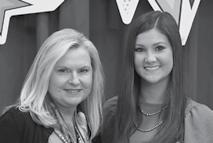
Angus Foundation $2,000 Scholarship: These junior members received the Angus Foundation Undergraduate $2,000 Scholarship at the 2023 National Junior Angus Show (NJAS) Scholarship Presentation, July 5-7 in Grand Island, Neb. Pictured front row from left are Bryanna Smith, Russell Springs, Ky.; Mary Wood, Willow Spring, N.C.; Kelsey Theis, Leavenworth, Kan.; Emma Vanhoy, Catawba, N.C.; Jordan Oliver, Buncombe, Ill.; Reese Anderson, Chrisman, Ill.; and Addison Cotton, York, Neb. Pictured back row from left are Baylee Wulfkuhle, Lawrence, Kan.; Hailey Jentz, Belmont, Wis.; Kyli Kraft, Fort Collins, Colo.; Tucker Stagemeyer, Page, Neb.; Ashlyn Mool, Lexington, Ill.; Seth Cox, Eagle Point, Ore.; J. Gordon Clark, Gretna, Va.; and Colter Pohlman, Hereford, Texas. Since 1998, the Angus Foundation has awarded more than $4.2 million in undergraduate and graduate scholarships to Angus youth. Photo by Pearl’s Pics.

A League of Their Own Kentucky Scholarship: Bryanna Smith, Russell Springs, Ky., right, received the 2012 NJAS - In a League of Their OwnKentucky $500 Scholarship at the 2023 National Junior Angus Show (NJAS) Scholarship Presentation, July 5-7 in Grand Island, Neb. Pictured presenting the award is Paula Boyd, left. Since 1998, the Angus Foundation has awarded more than $4.2 million in undergraduate and graduate scholarships to Angus youth.
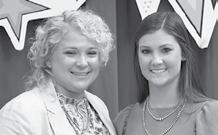
• kyangusassociation@gmail.com • @kyangusassoc • @kyangusassoc • @kyangusassociation
Photo by Pearl’s Pics on behalf of the American Angus Association.
Bred-and-owned Bull Class 9: Taf Saddle Up 2031 won bred-and-owned bull class 9 at the 2023 National Junior Angus Show (NJAS), July 1-8 in Grand Island, Neb. Sophie Toll, Lawrenceburg, Ky., owns the winning bull. Photo by Pearl’s Pics on behalf of the American Angus Association.
September • Cow Country • 65
Photo by Pearl’s Pics.
KENTUCKY
AA LAND & CATTLE
GELBVIEH ASSOCIATION
KENTUCKY GELBVIEH
LARRY CLARK & SONS LLC

Joe Piles, President............................................................................................................................(502) 507-3845
Registered Gelbvieh & Balancers
Cynthiana, KY
Johnnie Moore, Vice President...........................................................................................................(270) 670-7814
Luke Arthur (859) 298-8323
Registered Gelbvieh Cattle
106 Clark Houk Road • Greensburg, KY 42743
Pat Tilghman, Secretary/Treasurer.......................................................................................................(270) 670-8449
luke.arthur93@gmail.com
Bulls • Show Prospects • Embryos
Bulls sell with GE EPD’s • Show Prospects
ASHWOOD SPRING GENETICS

BAR IV LIVESTOCK
Larry Clark, Owner & Operator
(270) 299-5167 • (270) 405-6848
Lpclarkandsons@msn.com
BRIAN W. DYER, DVM
Owner/Manager
GELBVIEH/BALANCERS
CLIFFORD FARMS
Barry, Beth & Ben Racke • Brad Racke
7416 Tippenhauer Rd. • Cold Spring, KY 41076
Luke & Lindsay Arthur Cynthiana, KY 859-298-8323
Phone (859) 635-3832 • Barry cell (859) 991-1992
Brad cell (859) 393-3677 • Ben cell (859) 393-3730
Fax (859) 635-3832 • bar4@twc.com
BAR IV LIVESTOCK
BEE LICK GELBVIEHS
Barry, Beth & Ben Racke • Brad Racke
Eddie Reynolds
7416 Tippenhauer Rd. • Cold Spring, KY 41076
277 Old Bee Lick Rd. Crab Orchard, KY 40419 606-379-2281(H) 606-305-1972(C)
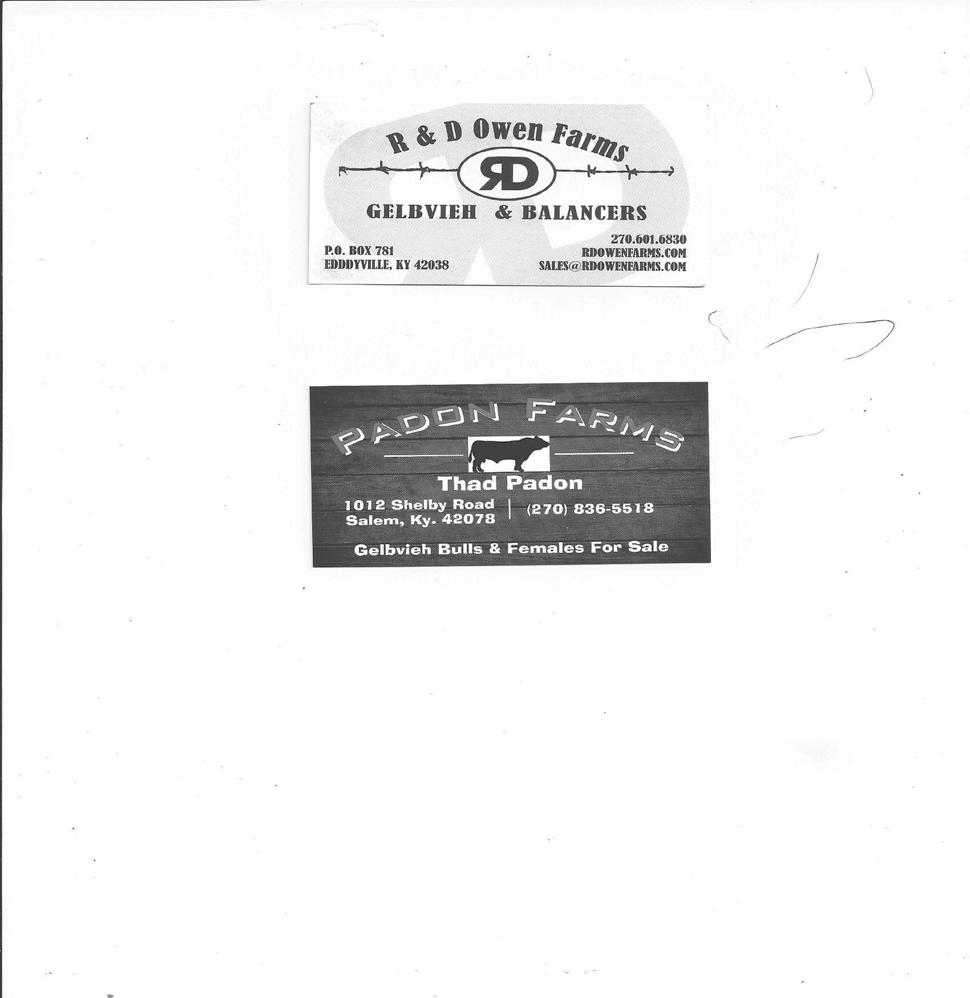

Phone (859) 635-3832 • Barry cell (859) 991-1992
Brad cell (859) 393-3677 • Ben cell (859) 393-3730
Fax (859) 635-3832 • bar4@twc.com
Bulls & Females for sale
BEE LICK GELBVIEHS
Eddie Reynolds
277 Old Bee Lick Rd.
Crab Orchard, KY 40419
606-379-2281(H) 606-305-1972(C)
Bulls & Females for sale
CD FARMS
BRAY’S GELBVIEH CATTLE
Clayton & Debbie Cash
3459 KY HWY 1284E
2050 Glasgow Road Burkesville, KY 42717
Cynthiana, KY 41031
Since 1937
Brian, Lauren, Kristen Barry, Emily & Julia (270) 864-5909
(859) 234-6956
FULL CIRCLE FARMS
BRIAN W. DYER, DVM
Registered Gelbvieh Cattle

Owner/Manager GELBVIEH/BALANCERS
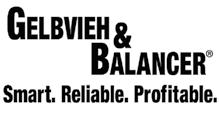
Brad Burke
2050 Glasgow Road Burkesville, KY 42717
989 Metcalf Mill Road • Ewing KY 41039 (H) 606-267-5609 • (C) 606-782-1367
Meeting modern industry demands:
Niles & Betty K Bray
1568 Bray Ridge Road
1214 Ottawa School Road Brodhead, KY 40409 (606)-308-3247 • (606)-758-8994
Bedford, KY 40006
Gelbvieh-Balancer Bulls & Heifers
(502) 255-3584
For Sale by Private Treaty
CD FARMS
Clayton & Debbie Cash
1214 Ottawa School Road
Kentucky Junior Gelbvieh Show & Learning Clinic
Brodhead, KY 40409
McIntosh Brothers Farm • 3348 Frankfort Road • Georgetown
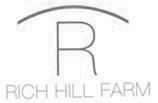
(606)-308-3247 • (606)-758-8994
Gelbvieh-Balancer Bulls & Heifers
For Sale by Private Treaty
Call William McIntosh for more information. (502) 867-3132
CLIFFORD FARMS
AGJA Eastern Regional Junior Show “Run for the Roses”
3459 KY HWY 1284E
Burley Fields Livestock Center • 709 Oil Fields Road • Horse Cave
Cynthiana, KY 41031
Call Carrie Derossett for more information. (270) 404-0828
Since 1937
(859) 234-6956

Entry and room information available at www.gelbvieh.org (Juniors/Regional Shows/AGJA Eastern Regional)
BRADBURY FARMS

Gelbvieh/Balancer Females
Tom Bradbury • Fisherville, KY
(502) 817-2869
Taylor Bradbury
(502) 817-4421
Hay and Straw Available 50TH
For information on joining the Kentucky Gelbvieh Association or to advertise in this ad, please contact Pat Tilghman at 270-670-8449 or send an email to pleasantmeadowsfarm@hotmail.com
 Dues are $25/year, payable to Kentucky Gelbvieh Association
Dues are $25/year, payable to Kentucky Gelbvieh Association
Cattle for sale at all times.
NORTH AMERICAN INTERNATIONAL LIVESTOCK EXPO
SHOW • LOUISVILLE, KENTUCKY JUNIOR & OPEN SHOWS • HEIFER FUTURITY FRIDAY, NOV 10, 2023 THROUGH MONDAY, NOV 13, 2023 ENTRY DEADLINES TBD • LIVESTOCKEXPO.ORG
GELBVIEH/BALANCER
THURSDAY, SEPTEMBER 21 C. Oran Little Research Center • Versailles, KY 66 • Cow Country • September
BEEF BASH
Kentucky Hereford Association

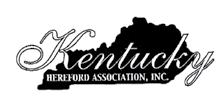
Kentucky Hereford Autumn Sale
Entries Due Oct. 1, 2023

Contact Suzanne Matheny for more information suzannebmatheny@gmail.com or 606-584-0577
Toby & Debby Dulworth 2492 S. Kirkman Road
LaCenter, KY 42056 (270) 224-2993
dogwood@brtc.net
Herefords that thrive on forages. www.dogwoodherefords.com
6077 Helena Road Mayslick, KY 41055
Charlie Boyd II 606-584-5194
Annual Bull Sale second Saturday in March
Hereford and Angus Bulls
Chambliss
Hereford Farms
Brad, Carla, Clay & Clint Chambliss
1101 Driftwood Lane
Elizabethtown, KY 42701
Home (270) 982-3905
Cell (270) 668-7126
fax 270-735-9922
www.chamblissherefordfarms.com
WCN Polled Herefords

Since 1961 Bill Norris
2220 Celina Road
Burkesville, KY 42717
Phone (270) 433-7256
Cell (270) 433-1525
“Every calf needs a white face”
WELLS FARM Polled Herefords 439 Flatwoods Frozen Camp Rd, Corbin KY 40701 Bobby & Brenda Wells (606) 523-0569 or (606) 344-0417 wells_farm@yahoo.com
Kevin, Angela, Kenlea & Kyler Murray (606) 528-1691 or (606) 682-8413
KHA OFFICERS
President: Chris Hopper 606-584-7842
Secretary/ Treasurer: Suzanne Matheny 606-584-0577
suzannebmatheny@gmail.com
MPH Farms
Registered Polled Herefords PAUL L. HANCOCK 8559 KY 56 Owensboro, KY 42301 270-771-4194
Jackson Farms
Registered Polled Herefords PO Box 215 Cross Plains, TN 37049 615-478-4483
billymjackson@aol.com
“Farming the Same Land Since 1834”
WOLF FARM
Registered Polled Herefords
Bulls & Females for sale
Tim & Peggy Wolf
12939 Peach Grove Road
Alexandria, KY 41001
Home: 859-635-0899
Cell: 859-991-3484
Peyton’s Well Polled Herefords
The Lowell Atwood Family 133 Edgewood Drive • Stanford, KY
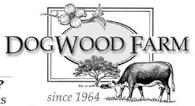

(606) 365-2520 home/fax
(606) 669-1455 cell
Victor- influenced cattle bred for performance on grass.
“Black cows need a good Hereford Bull”
K3 CATTLE REGISTERED HEREFORDS
KYLE BUSH
K3CATTLE@YAHOO.COM
859-588-4531
198 HICKS PIKE CYNTHIANA, KY 41031
THOMAS FARM
Eric & Ronnie Thomas 2396 Union City Rd. Richmond, KY 40475
(859) 623-5734
Eric’s Cell (859) 314-8256
“Cattle for sale at all times”
NJB Limited

Dale Stith 5239 Old Sardis Pike Mays Lick, KY 41055
dalestith@yahoo.com
(918) 760-1550
Home of Select Sires’ Boyd Fort Knox 17yxz54040
Polled Hereford and Gelbvieh Cattle 3459 KY Hwy. 1284 E. Cythiana, KY 41031 (859) 234-6956
Ben, Jane, Shelby and Lincoln
Windy Hills Farm
Jackie D. Perkins II 367 Mt. Pisgah Rd. Bremen, KY 42325 (270) 543-3586

Breeding to produce good cows since 1981
HEREFORDS
Codee Guffey • 1815 Grassy Springs Road
Versailles, Kentucky 40383 (502) 598-6355
rockridgeherefords@gmail.com
www.rockridgeherefords.com

TK4 Herefords
Tony & Kathy Staples
992 Knotts Road Brandenburg, KY 40108 (270) 422-4220

tstaples@bbtel.com
PILE STOCK FARM
Registered Polled Herefords
HANSELL PILE, JR.
12045 St. John Rd. Cecilia, KY 42724
270-735-5192
270-862-4462
12 miles West of Elizabethtown
BECKLEY HEREFORDS
L. Wayne Beckley • 1420 Fitchburg Rd. Ravenna, KY 40472 • 606-723-3021


Cell: 859-779-0962
L.W. Beckley D.V.M 284 Pyrse Lane • Irvine, KY 40336
Cell: 859-779-1419 • Clinic: 606-726-0000
www.beckleyherefords.com
TUCKER STOCK FARMS
“Breeding Polled Herefords for over 58 Years”
Breeding cattle for sale at all times.
1999 Walnut Hill Rd.
Lexington, KY 40515
(859) 271-9086
cell (859)533-3790
Danny Miller jmspolledherefords.com
270-465-6984
270-566-2694
Tucker Stock Farms
“Registered Angus and Polled Herefords”
“Registered Angus and Polled Herefords”



John A. Tucker II 1790 Hidden Valley Lane Hudson, KY 40145 (270) 257-8548 Office (270) 257-8167
John Tucker II 1790 Hidden Valley Lane Hudson, KY 40145
270-617-0301
18-month-old Angus & Polled Hereford Bulls
“Bulls always for Sale”
WATSON LAND & CATTLE
Matt, Melinda, Harlee, & Wyatt Watson 6196 Mount Sterling Rd
Flemingsburg, Kentucky melindawatson8660@gmail.com
Matt - 606-748-1600
Melinda - 859-625-8660
CATTLE FOR SALE AT ALL TIMES
4850 Caldwell Ridge Rd. Knifley, KY 42753 270-465-6984 Fertility Milking Ability Calving Ease Disposition Multi-Trait Selection LINEBRED VICTOR DOMINO CATTLE September • Cow Country • 67
T S F
OUTSTANDING FIRST HALF FOR U.S. PORK EXPORTS; BEEF EXPORTS BELOW RECORD PACE OF 2022
U.S. pork exports concluded an excellent first half with another strong performance in June, according to data released by USDA and compiled by the U.S. Meat Export Federation (USMEF). While well below the record pace established in 2022, June beef exports topped $900 million in value, pushing first-half export value to nearly $5 billion.
First-half pork exports achieve broad-based growth
June pork exports totaled 245,964 metric tons (mt), up 12% from a year ago, while export value climbed 6% to $691.4 million. Through the first half of 2023, exports were 14% above last year’s pace at 1.47 million mt, valued at $4.05 billion (up 12%).
Pork exports to Mexico are on a record pace, with first-half value up 21% to more than $1 billion. First-half exports increased sharply year-over-year to the ASEAN region, Australia, Taiwan, the Dominican Republic and Chile, while also posting gains in China/Hong Kong, South Korea and Central America. Pork variety meat exports surged by 32% in the first half to more than 297,000 mt, led by record-large shipments to China.
“Mexico is certainly the 2023 pacesetter for U.S. pork exports but what’s really exciting is that the industry is achieving such broadbased growth internationally,” said Dan Halstrom, USMEF president and CEO.
“Exports are making impressive gains in the Western Hemisphere and reclaiming market share in many Asia-Pacific markets, and U.S. pork is well-positioned to continue gaining momentum in the second half.”
First-half beef exports lower overall, but bright spots emerge
Beef exports totaled 115,107 mt in June, down 12% from a year ago and slightly below the May volume. Export value was $909.5 million, down 13% year-over-year but the highest since October and 4% above the value posted in May.
First-half beef exports were 10% below last year’s record pace at 669,176 mt. Export value was just under $5 billion – down 19% from a year ago but still 8% above the first half of 2021. June beef exports to Taiwan were the largest in 14 months, while exports to Mexico continued to build momentum and shipments to Canada, Hong Kong, South Africa and the Dominican Republic posted year-over-year gains. June exports to South Korea, China and Japan were
below last year’s large totals, though shipments to Japan improved notably in value from the previous month.
“It was a challenging first half for beef exports, especially when compared to the blistering pace established a year ago,” Halstrom said. “But we are encouraged to see that exports are still accounting for a consistently high percentage of total beef production, and variety meat exports have held up very well considering the decline in U.S. slaughter. These metrics continue to illustrate the important contribution of exports in maximizing beef carcass value.”
Lamb exports trend lower, fall below year-ago level
After a strong start in 2023, exports of U.S. lamb muscle cuts trended sharply lower in the second quarter. June exports were just 109 mt, down 56% from a year ago, while value fell 45% to $843,000. First-half exports were down 5% in volume (1,067 mt) and 6% in value ($6.35 million). Exports trended higher to the Netherlands Antilles, the Bahamas, Guatemala and Canada, and volume increased slightly to Mexico.
A detailed summary of the January-June export results for U.S. beef, pork and lamb, including market-specific highlights, is available from the USMEF website.
For questions, please email Joe Schuele or call 303-547-0030.
UNITED PRODUCERS, INC. ANNOUNCES COMPREHENSIVE VACC-60 PROGRAM
Columbus, OH – United Producers, Inc. (UPI), the Midwest’s largest livestock marketing cooperative, is excited to announce the launch of its Vacc-60 program. Vacc-60 is a comprehensive management program designed to increase the farm-gate value of weaned calves. In partnership with Tennessee Farmers Coop, the Vacc-60 program leverages the latest in animal care in order to produce healthy, more profitable cattle.

“We are excited to announce the launch of our Vacc-60 program,” said Bill Tom, Executive Vice President of Livestock Marketing. "Our vision for Vacc-60 is to not only help the grower produce healthy, more profitable cattle, but also develop a trusted program that will elevate the marketability of those cattle within the industry."
The program includes management, animal health, nutrition, marketing, credit and risk management components designed to enhance the value of weaned calves, while offering multiple options to accommodate producer preferences. These cattle will be offered in a variety of options to the marketplace.
For more information on the Vacc-60 program, including program management and nutrition requirements, visit www.uproducers.com/vacc60.
UPI serves 30,000 members in Ohio, Kentucky, Illinois, Indiana, Michigan, Tennessee and surrounding states, handling approximately 2.5 million head of livestock per year. UPI also offers risk management services, including marketing agreements and brokerage services; and offers competitive credit services for agricultural, farm machinery and livestock financing. For more information, visit uproducers.com or follow United Producers, Inc. on Facebook.
68 • Cow Country • September
NEWS RELEASE
Simmental calves are champions of the scale.
They reliably outperform straightbred calves in the feedyard — with better growth, better structure and fewer health problems. They add pounds without sacrificing marbling, and they come with the IGS Feeder Profit Calculator, which factors genetics, health and management into true value.
SIMMENTAL
KEVIN AND RACHEL BARRON
Crestwood, Ky (502) 905-5851 rkbarron812@gmail.com
SWAIN SELECT SIMMENTAL
12113 Green Valley Dr. Louisville, KY 40243 swainselect.com
swainselect@gmail.com


facebook.com/swainselectsimmental



Fred & Phyllis: 502-599-4560 Chi & Angie: 502-287-2116
ROCKING P LIVESTOCK
8308 Orangeburg Road Maysville, KY 41056
Chan: 606-584-7581


Keith: 606-584-5626 rockingplivestock@maysvilleky.net
BRIAN & HEATHER SWAIN
3906 Pottertown Road Murray, KY 42071 • 270-293-4440 wksbswain@murray-ky.net
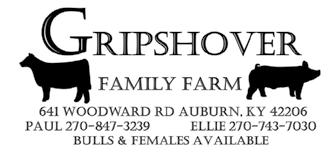

SIMMENTAL AND SIMANGUS BULLS FOR SALE

1939 Huntertown Road Versailles, KY 40383
BULLS FOR SALE
JUDY AND RONDAL DAWSON
1156 Buzzard Roost Road Shelbyville, KY 40065 502-593-5136 • jrdawson22@outlook.com

Chris Allen 859-351-4486 callenuky@hotmail.com
Dr. Henry Allen 859-229-0755
BRET AND LAURA JACKSON 859.533.3718 or 859.707.7200
406-587-4531 • simmental.org
STAND STRONG SIMMENTAL
low-risk, high-potential calves
earning capability? NO LIGHTWEIGHTS JOIN KENTUCKY SIMMENTAL ASSOCIATION Mail to: Laura Jackson 1254 Cynthiana Road Paris, KY 40361 FARM NAME YOUR NAME ADRESS CITY, STATE ZIP WORK PHONE HOME PHONE Call or visit one of these Simmental breeders for cattle that work! www.kysimmental.com Membership Fee is $25.00
Want
with
BILL KAISER • Shelbyville, KY • 502.639.4337
DATEEVENT LOCATIONAD
DATEEVENT LOCATIONAD
OCT
OCT 27Yon Family Farms Fall Female SaleRidge Spring, SC
OCT 27Gateway Bred Heifer Sale Mt. Sterling, KY50
OCT 28Yon Family Farms Fall Bull SaleRidge Spring, SC
OCT

SALERS THE BALANCED BREED DIAMOND J SALERS Donald Johnson • 11660 N. Hwy 1247 • Eubank, KY 42564 606-379-1558 WILLIS FARMS Danny Willis • 964 Johnson Rd • Frankfort, KY 40601 • 502-803-5011 drwc21@aol.com DEL-SU FARM Howard & Sue Edwards • 420 Rose Rd • Somerset, KY 42501 606-679-1675 • Jeriah Privett • 606-416-1154
CALENDAR OF EVENTS
SEP 2Breeders Cup Sale Mayslick, KY SEP 7CPC Fall Field Day Fountain Run, KY SEP 9KY Simmental Sale Lexington, KY46 SEP 16The Foundation Sale IX Bowling Green, KY71 SEP 21Beef Bash Versailles, KY40 SEP 23Boyd Beef Cattle Female SaleMays Lick, KY51 SEP 23 Maplecrest Farms Female Production Sale Hillsboro, OH 4 SEP 29 - OCT 1KJCA Fall Classic Bowling Green, KY SEP 30Eastern Salers Showcase SaleLexington, KY23 OCT 7CKAA 61st Annual Fall SaleLancaster, KY 4 OCT 7Horse Sale Lexington, KY OCT 12 JMar Genetics Quality Over Quantity Charolias Bull Heifer Sale DVAuctions OCT 13 - 14The Wagyu Super Lexington, KY47 OCT 14 The Future is Now Fall Production Sale Bowling Green, KY OCT 14Legends of the Fall Sale Horse Cave, KY29 OCT 14 KBHA Kentucky's Finest Fall Consignment Sale Nancy, KY 35 OCT 14 Pleasant Hill Farms Fall Production Sale Rockfield, KY 3 OCT 17Beef Bull Seedstock SymposiumLexington, KY60 OCT 18Beef Bull Seedstock SymposiumGlasgow, KY 60 OCT 20 Tamme Valley & Myers Angus Female Sale Danville, KY OCT 20Buffalo Trace Bred Heifer SaleFlemingsburg, KY50 OCT 20Millennium Long Horn SaleLexington, KY OCT 21Town Creek Farm Sale West Point, MS25 OCT 21 Seedstock Plus Fall Bull and Female Sale Carthage, MO37
21Eden Shale Farm Open HouseOwenton, KY 61 OCT 21Brand of Quality Angus SaleAldie, VA 74 OCT 21Great Meadows Angus AssociationCampbellsburg, KY OCT 22Heritage Farms Shelbyville, KY
OCT
23Beef Maker Bull and Female SaleBuchanan, GA53
28 Lynn Creek Farms
Winchester,
OCT 28 Red Hill Farms Bulls and Females of Fall Sale Lafayette, TN 8 OCT 28 Debter Hereford Farm Production Bull Sale Horton, AL 29 OCT 28 Southeast Elite Gelbvieh Genetics Sale Lexington, KY27 OCT 29Four Sons Cynthiana, KY
30Oak Hollow Bull Sale Smiths Grove, KY5
Gate Farms Annual Fall SaleFlemingsburg, KY9
31Trick or Treat at the StockyardsLexington, KY NOV 1Blue Lake Cattle Ranch Online SaleMt. Sterling, KY NOV 2Blue Ribbon Bred Heifer SaleLexington, KY41 NOV 2-16 North American International Livestock Exposition Louisville, KY NOV 3-4GENEPLUS Sale Concord, AR 2 NOV 4 Red Reward Fall Edition Bull and Female Sale Osceola, MO 37 NOV 4 TJB Gelbvieh and Balancer Bull Sale Chickamauga, GA75 NOV 6 Bourbon County Elite Bred Heifer Sale Paris, KY 29 NOV 13Rumor Has It/Four Sons Bull SaleParis, KY NOV 17 Woodall Angus First Fall Production Sale Quality, KY 36 NOV 18 West Kentucky Select Bred Heifer Sale Guthrie, KY 17 NOV 18Next Generation Bred Heifer SaleStanford, KY 50 NOV 25Breeding for the Future Rockfield, KY DEC 2Kentucky Hereford Association SaleLexington, KY DEC 6CPH Sale Lexington, KY DEC 7Traditions Hereford Influence SaleMt. Sterling, KY DEC 9Christmas Pony Sale Lexington, KY DEC 14 Certified Hereford Influence Feeder Calf Sale Lexington, KY 70 • Cow Country • September
Best of the Bluegrass
KY33
OCT
OCT 30Stone
OCT
REGISTERED RED ANGUS BULLS AND FEMALES FOR SALE
* FREE DELIVERY *
FOUR WINDS FARM
N ew Castle, Kentucky
(502) 296-1044
PERFORMANCE TESTED PUREBRED ANGUS BULLS FOR SALE
Call 270-202-7186 for more info or check out www.oakhollowangus.com for current availability.
POLLED HERFORD BULLS FOR SALE
19–20-month-old Polled Hereford bulls. Good selection. Low birthweight, medium frame. Free Delivery Available. JMS Polled Herefords, Knifley, KY Danny 270-566-2694 Trent 270-566-2000
THE FOUNDATION SALE IX
September 16, 2023
United Producers Facility, Bowling Green, KY
Selling FULLBLOOD & PUREBRED LIMOUSIN
Genetics For info call: A C H Holdings, LLC Stephen Haynes 270-799-8685
REGISTERED BLACK SIMMENTAL BULLS
Many blaze faced. Excellent EPD’s. Semen Tested. Delivery Available. Maximize your profit with proven performance. All bulls qualify for new CAIP cost-share.
Adam Wheatley 502-349-2665
BREEDING AGE HEREFORD BULLS FOR SALE AT ALL TIMES
Over 60 years of Line 1 Hereford Genetics. Groups of open and bred heifers available for sale at all times. Chambliss Hereford Farms. 270-668-7126
New Holland 790- chopper Artex SBX 800-manure spreader
Farmco feeder wagons
Used Dion-3 row corn header
John Deere 6300-2 wd- cab and loader
John Deere 6400- 4wd- loader
John Deere- 3975- forage Harvester low use Artex-SB 200- new in stock
Artex SB 500 new in stock
Farmco hay wagons in stock
HORNING CORN headers - ready to load Horning Processors- order yours today Esch tedders in stock
Esch 5612 Drill - in stock
Tye 7 seeder- two to select from John Deere- 4020- 5 to select from 15 silage wagons to select from Call Charlie today 859-608-9745
WWW.REDBARNANDASSOCIATES.COM
OPEN REGISTERED BLACK HEREFORD HEIFERS
These heifers are 10 months old with great disposition. Delivery available. Also have fall-bred cows for sale that are carrying ABHA calves. Sweet T Farm, Cynthiana, KY 859-684-1509

September • Cow Country • 71
AD INDEX Allison Charolais 13 ArrowQuip 11 Baumalight 76 Blue Grass Stockyards 41, 50 BCLIA Elite Heifer Sale 29 Boyd Beef Cattle 51 Burkmann Nutrition 14 CKAA 4 Debter Hereford Farm 29 Dura Cast 36 Eagleville Implement Company 43 Eastern Salers Showcase 23 Farm Credit Mid-America 24 Geneplus 2 Hampton Meats 10 Isaacs Angus 29 Kentucky Angus Association 64, 65 KBHA 35 Kentucky Gelbvieh Association 66 Kentucky Hereford Association 67 Kentucky Salers Association 70 Kentucky Simmental Association 46, 69 Kentucky Stud 47 Lynn Creek Farms 33 McBurney Livestock Equipment 38,39 Maplecrest Farms 4 Mid South Ag 36 My Team Cattle & Crop Insurance 17 No Bull 49 Oak Hollow 5 Pleasant Hill Farms 3 Red Barn and Associates 15, 28 Red Hill Farms 8 Seedstock Plus 37 Southeast Elite Gelbvieh Genetics Sale27 Stone Gate Farms 9 TJB Gelbvieh and Balancer 75 Town Creek Farm 25 United Producers, Inc. 16 West Kentucky Select Bred Heifer Sale17 White Hawk Ranch 53 Whitestone Farm 74 Woodall Angus 36
CLASSIFIED ADS
Future of Beef Production May Be Up in the Air
Jeff Lehmkuhler Associate Extension Professor, University of Kentucky

A couple of weeks ago, the national meeting of the American Society of Animal Science was held. This is a professional organization that many of us in the animal sciences field are members of for professional development. Several of us from the University of Kentucky attended to present research, learn about ongoing research, teaching and extension activities from other states and receive awards. In my opinion, the impact of animal agriculture on climate change is a key focus of current research at many institutions. In a search of the agenda, 25 presentations and 23 posters were presented when I conducted a search using the term methane. Let me put that in context, when I searched using just the term antibiotic, only nine presentations and seven posters were found. Though a variety of information was shared covering numerous topics, the number of papers focused on the impact of animal agriculture on climate change couldn’t be ignored.
In an invited presentation, Al Rotz, USDA researcher, shared information related to greenhouse gas emissions (GHG) from beef cattle operations. This team published a life cycle assessment for GHG for beef cattle in 2019 and a comprehensive assessment in 2023 that was partially funded by Beef Checkoff dollars. The authors reported the model estimated the current amount of feed required to produce 1 kg (2.2 lbs.) of carcass weight of beef was approximately 22 kg (44 lbs.). This is a feed conversion efficiency of 22:1 while you often hear of feed efficiency rates of 5 to 6:1 for live weight gain in the feedlot sector. Using 62% dressing percentage, a 6:1 feed-to-gain ratio would be roughly 10:1 if we expressed it on a carcass weight basis. Automatically, you should be getting red flag warnings and calling this work BS. However, this was a full life cycle assessment, womb to tomb if you will. The authors point out that the cow-calf sector accounts for nearly 73% of the feed inputs in the beef production system while the stocker/background and finishing phases accounted for 10% and 17%, respectfully.
In his presentation, Rotz stated that beef production accounts for approximately
3.5% of the national GHG emissions. Their work further reported on emissions, energy and water use as well. The cowcalf sector was shown to contribute roughly 77% of the methane emissions. Beef animals are essentially walking fermenters, consuming forage and feed in which ruminal organisms get the first opportunity to ferment producing carbon dioxide, methane, ammonia and other compounds. This is what makes cattle unique in that they can utilize feeds that are non-edible by humans and convert these into high quality protein. The authors further broke down the beef systems by region. The Southeast was reported to have the greatest weighted average GHG emissions.
As part of the Paris agreement, the United States committed to reducing GHG by 50%-52% by 2030. With respect to agriculture, the 2021 U.S. Long Term Strategy document discusses the protection and increase of forested areas. Data reported by the EPA indicate that beef cattle emitted 22% of the total agricultural GHG emissions. The increase in practices that are referred to as “climatesmart,” which includes the use of cover crops and rotational grazing as examples, will receive greater emphasis in the future.
In Rotz’s presentation in Albuquerque, he shared that food waste accounted for 20-30% of the GHG emissions in the U.S., which exceeded the proportion from beef production system of 3.5%. The global food waste contribution to GHG emissions reported by the Food and Agriculture Organization of the United Nations using 2011 estimates was 3.3 gigatons of carbon dioxide equivalents (GtCO2e).
In their recent 2023 publication, Rotz and co-authors state, “The magnitude of this impact makes waste (food) one of the greatest impacts on environmental sustainability.” Consider all the inputs to produce food are accounted for in the production chain and when food is wasted carbon emissions still occur. How much food is thrown out in your household, large community gatherings or when we dine out? How many vegetables and packages of meat are tossed from the grocery stores due to exceeding expiration dates? Food waste is also a distribution
challenge on a global scale.
For nearly a decade, we have hosted the Kentucky Beef Efficiency Conference. The information shared directly relates to our ability to reduce GHG and global warming potential by the beef industry. Remember the cow-calf sector is the greatest contributor to global warming potential in the beef system. Combining knowledge with management change to reduce waste is a first step.
Waste in my mind is equal to production losses. Redirecting our focus to increasing beef produced per unit of land will be needed. Additionally, the cow-calf sector will need to focus on increasing pounds of beef weaned per cow exposed. I am not advocating for maximizing, but rather optimizing. Increasing reproductive rates and weaning percentage should be an initial focus. Many factors contribute to these areas. Conducting breeding soundness exams, pregnancy checking to reduce feed inputs to non-productive cows, and improving our forage base to maintain body condition on cows to ensure breeding and increasing stocker performance will aid in reducing beef’s carbon footprint. Reducing death losses through improved immunization is a very simple step. Where possible pasture renovation to novel endophyte tall fescue or interseeding clover will improve forage utilization and reduce GHG per pound of beef produced. There are several management tools in our toolbox that play a role in reducing the climate impact of beef production. These steps will also improve financial sustainability in the long run.
Making strides forward now as an industry will reduce the chance of policy intervention. The tabloids are full of European headlines discussing meeting climate change goals through the reduction of animal populations. Becoming informed and knowledgeable on sources of GHG emissions will also aid you in discussing with consumers what you are doing to reduce your carbon footprint and what they can do as well. How we will progress as an industry to lessen our global warming potential remains up in the air for now, but you can be assured this will not be going away anytime soon.
72 • Cow Country • September
Spring-Calving Cow Herd
• Bulls should have been removed from the cow herd by now! They should be pastured away from the cow herd with a good fence and allowed to regain lost weight and condition. It is a good time to evaluate physical condition, especially feet and legs. Bulls can be given medical attention and still have plenty of time to recover, e.g., corns, abscesses, split hooves, etc. Don’t keep trying to get open spring cows bred – move them to fall calving or sell them when they wean this year’s calf. If you don’t have a bull pen and want to tighten up the calving season, remove the bull and sell him. Plan on purchasing a new bull next spring. If that is not feasible, then schedule your veterinarian to pregnancy diagnose the herd and cull cows that will calve late.
• Repair and improve corrals for fall working and weaning. Consider having an area to wean calves and retain ownership for post-weaning feeding rather than selling “green”, lightweight calves. Plan to participate in CPH-45 feeder calf sales in your area.
• Limited creep feeding can prepare calves for the weaning process since they can become accustomed to eating dr y feed. This will especially benefit those calves which you are going to keep for a short post-weaning period – like the CPH-45 program. It’s time to start planning the marketing of this year’s calf crop.
• Begin evaluating heifer calves for herd replacements – or culling. Each time you put them through the chute, evaluate them for several traits, especially disposition. Consider keeping the older, heavier heifers. They will reach puberty before the onset of the breeding season and have higher conception rates.
• This has generally been a reasonably good year for pastures, but many parts of the state have experienced some drought. Evaluate moisture condition and consider stockpiling some tall fescue pastures. It’s not too late to apply nitrogen for stockpiling fescue if moisture conditions are suitable.
• Stresses associated with weaning can be minimized by spreading-out other activities commonly associated with weaning – like vaccinations, deworming and, perhaps, castration and dehorning
(which should have already been done!). Therefore, this month is a good time to do a “pre-weaning” working of cows and calves.
• When planning the pre-weaning working, consult with your veterinarian for advice on animal health products and procedures. One procedure that can be done now is pregnancy checking cows. Early pregnancy diagnosis will allow time to make culling decisions prior to weaning time. Feeding unproductive cows through the winter is a costly venture so pregnancy diagnosis is a business decision for most producers.
Fall-Calving Herd
• Fall-calving should start this month. Get your eartags ready. Cows should be moved to a clean, accessible pasture and closely watched. Tag calves soon after they are born and record dam ID and calf birthdate, etc. Castration is less stressful when performed on young animals and calves which are intended for feeders can be implanted now, too.
• If you haven’t started calving quite yet, then it’s time to get ready. Be sure you have the following:
o record book
o eartags for identification
o iodine solution for newborn calf ’s navel
o calf puller
o castration equipment
• Watch for those calves which may come early and be prepared to care for them.
• Be on guard for predators – especially black vultures.
• Move cows to best quality fall pasture after calving. Stockpiled fescue should be available to these cows in November-December to meet their nutritional needs for milking and rebreeding.
• Start planning now for the breeding season. If using AI, order supplies, plan matings and order semen now
Stockers
• Calves to be backgrounded through the winter can be purchased soon. A good source is Kentucky preconditioned (CPH45) calves which are immunized and have been pre¬-weaned and “boostered”.
• Plan your receiving program. Weanling calves undergo a great deal of stress as-
sociated with weaning, hauling, marketing and wide fluctuations in environmental temperature at this time of year. Plan a program which avoids stale cattle, get calves consuming water and high-quality feed rapidly. Guard against respiratory diseases and other health problems
General
• Keep a good mineral mix available at all times. The UK Beef IRM Basic Cow-Calf mineral is a good choice.
• Do not give up on fly control in late summer, especially if fly numbers are greater than about 50 flies per animal. You can use a different “type” of spray or pour-on to kill any resistant flies at the end of fly season.
• Avoid working cattle when temperatures are extremely high – especially those grazing high-endophyte fescue. If cattle must be handled, do so in the early morning.
• Provide shade and water! Cattle will need shade during the hot part of the day Check water supply frequently – as much as 20 gallons may be required by high producing cows in very hot weather.
• Plan the winter-feeding program. Take forage samples of hay you will feed this winter. Request protein and TDN analysis so that supplemental feed needs may be estimated. Don’t wait until you run out of feed in February to purchase extra feed. Plan to minimize hay storage and feeding losses because feed is too expensive to waste.
• If you have adequate moisture, stockpiling fescue might be a viable option. Nitrogen application to fescue pastures can be made now and allow them to grow and accumulate until November, or when other sources of grazing have been used up. To make best use of this pasture, put fallcalvers, thin spring-calvers or stockers on this pasture and strip graze.
• Don’t graze sorghum or sudan pastures between the first frost and a definite killing frost because of the danger of prussic acid poisoning. Johnsongrass in stalk fields can also be a problem after a light frost. Grazing can resume after the sorghum-type grasses have undergone a killing frost and dried up.
September • Cow Country • 73
TIMELY TIPS
SEPTEMBER
FOR
Saturday, Noon (EDT) OCTOBER 21, 2023 Aldie, Virginia
Monomoy Rita G12
Whitestone Inez P097
Whitestone Polly 0116
SheSells!
Sire: #*Jindra Acclaim Dam: +*Monomoy Rita D2
CEDBEPDWEPDYEPDMILKMARBREA$M$W$B$C
+12 +1.1 +77 +139 +29 +.98 +.65 +58 +72 +193 +308
Bred to calve 2/11/24 to GB Fireball 672. SAFE. An arithmetic superstar with a balanced number profile that ranks her in the Top 2% for $C at +308. This female also combines a powerful look with added mass, muscle, and rib in an eye-appealing package. A powerful 3-year-old with a long, profitable future ahead of her.
Whitestone Erica 0045
SheSells!
Reg. 19877002
Sire: *Musgrave 316 Stunner Dam: +B&B Inez 8049
CEDBEPDWEPDYEPDMILKMARBREA$M$W$B$C
+8 +.3 +67 +117 +30 +.52 +.65 +46 +65 +152 +243
Bred to calve 1/26/24 to GB Fireball 672. SAFE. An ideal 3-year-old with wonderful presence in the right size. Attractive, beautiful udder and comes at you in an easy-fleshing, sound-structured, high-quality package. She not only has the look but reads with well-balanced paper to take your program to the next level.
Whitestone Lady 0035
SheSells!
Reg. *19708630
Sire: #+*S A V Raindance 6848 Dam: Whitestone Polly M018
CEDBEPDWEPDYEPDMILKMARBREA$M$W$B$C
+2 +3.7 +78 +143 +24 +.15 +.97 +31 +59 +149 +224
Bred to calve 1/22/24 to Connealy Craftsman. SAFE. A sale attraction with tremendous growth, performance, and great phenotype. This female ranks in the Top 5% for WW, REA and Top 3% for YW. She has tremendous front-end extension with great hip and hind leg. She stems back to a Pathfinder® granddam
Whitestone Emblynette 1901
SheSells!
Reg.
19708637
Sire: Deer Valley Growth Fund | Dam: Whitestone Erica 8103
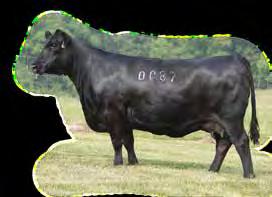
CEDBEPDWEPDYEPDMILKMARBREA$M$W$B$C
+15 -.7 +77 +140 +22 +.42 +.38 +45 +68 +132 +216
Due to calve January 28, 2024 to Connealy Crafstman. This female has tremendous spread from birth to yearling and is a fourth-generation Erica female bred with consistency from the Whitestone herd. This special sale feature will highlight the cow-calf division. A wonderful breeding piece for a program that wants to add value.
Whitestone Abigale 0087
SheSells!
Reg. *19701382
Sire: *Woodhill Blueprint Dam: +*Whitestone Lady 8054
CEDBEPDWEPDYEPDMILKMARBREA$M$W$B$C
+14 -1.9 +73 +132 +36 +.83 +1.08 +45 +78 +174 +271

Bred to calve 2/17/24 to GB Fireball 672. SAFE. A beautiful 3-year-old with a spectacular udder and exquisite look. Couple this with her outstanding pedigree and paper, this female ranks in the Top 10% for WW EPD, YW EPD, and $B; she ranks in the Top 2% for REA and in the Top 15% for $C. This combination of phenotype and paperwork mark her as one of the top females to sell this fall.
Offering Extraordinary Three Year Old Cows plus Their Spring 2023 Heifer Calves!
A Select Group of Embryo Heifers from the 2023 Calf Crop. And more...


SheSells!
Reg. 19702057
Sire: DL Dually | Dam: Whitestone Abigale 8093

CEDBEPDWEPDYEPDMILKMARBREA$M$W$B$C +4 +1.3 +97 +164 +23 +.52 +.58 +55 +84 +143 +240

Due to calve January 21, 2024 to GB Fireball 672. This special sale feature is a beautifully designed three-year-old
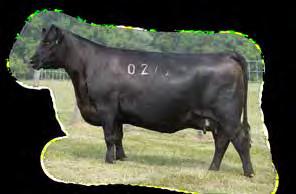

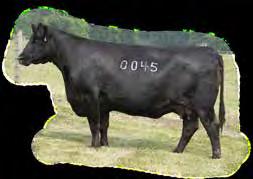
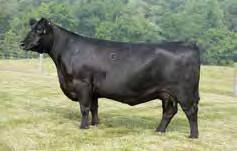
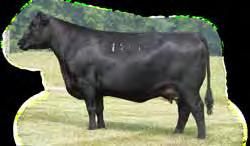
SheSells!
Sire: Connealy Confidence Plus | Dam: Whitestone Emblynette 730
Due to calve February 8, 2024 to WHITESTONE. This beautiful Emblynette female is a direct daughter of Connealy Confidence Plus back to the West Virginia State Fair Champion and elite donor, Whitestone Emblynette 730. The granddam is a daughter of the $1 million dollar producing Emblynette 7319. She not only has wonderful phenotype but ranks in the Top 10% for Marbling, Top 5% for Ribeye and Top 15% for $C.
Whitestone Lass 0212
SheSells!
Reg. 19711599
Sire: Deer Valley Growth Fund | Dam: Whitestone Lass 7057
CEDBEPDWEPDYEPDMILKMARBREA$M$W$B$C +8 +1.2 +85 +147 +33 +.63 +.88+55 +86 +173 +279
Due to calve February 4, 2024 to GB Fireball 672. This outstanding three-year-old reads with wonderful paper and pheno-
Visit
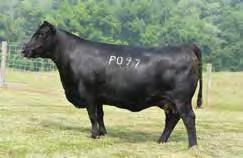
Reg. 19795153
CEDBEPDWEPDYEPDMILKMARBREA$M$W$B$C +5 +.6 +63 +111 +23 +.97+.97 +64 +63 +155
+265
Reg. *19515742
us on Facebook!
(703)
George W. Lemm • Tom & Nancy Andracsek • Mark Duffell PO Box 570, Aldie, Virginia 20105
327-4863 Office (703) 327-4777 FAX (703) 930-1841 Mark’s Cell Www.whitestonefarm.com office@whitestonefarm.com
TJB Gelbvieh has stayed committed to producing functional, attractive, sound, useful bulls with a herd focus on fertility, udder quality, foot quality, disposition, and structural integrity. For more than 35 years, we have resisted the latest fads and quick-fix gimmicks to produce BALANCED cattle. Zero tolerance of any failure has produced results.

TODD,
Chickamauga,
(423) 667-3799 Cody Maddox, Cattle Mgr. (423) 802-8347
Hays, Farm Mgr. (423) 802-5972 tjbgelbvieh.com
ALISA, & KATELYN BICKETT, BO & KELSIE WILSON
GA // Todd’s Cell:
// Rusty
TJB Gelbvieh Annual Bull Sale // Hosted In Person & Online // Selling 65 Black & Red Bulls
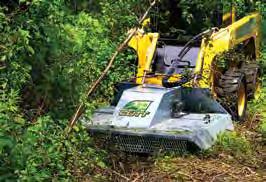
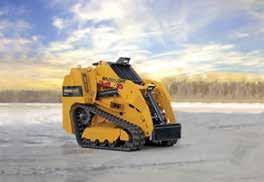
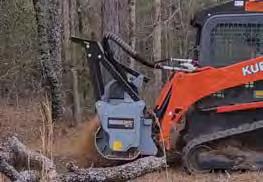



MFG OF MINI SKID STEERS AND A VARIETY OF ATTACHMENTS INCLUDING BRUSH MULCHERS | ROTARY BRUSH CUTTERS | STUMP GRINDERS | PTO GENERATORS | AUGER DRIVES TRENCHERS | DRAINAGE PLOWS | TREE SPADES | TREE SAWS & SHEARS | BOOM MOWERS | TREE PULLERS FELLER BUNCHERS | EXCAVATOR ADAPTERS | SCREW SPLITTERS | PTO POWER PACKS | FLAIL MOWERS sales@baumalight.com | BAUMALIGHT.COM Terry Bailey 573-326-0484 | tbailey@omega1w.net











































 FRANKLIN COUNTY NEWS submitted by Jake Harrod
FRANKLIN COUNTY NEWS submitted by Jake Harrod










 METCALFE COUNTY NEWS submitted by Moe Hensley
Dr. Michelle Arnold Tom Hughes, President
Daniel Crain, Pro Solutions-Hiseville
METCALFE COUNTY NEWS submitted by Moe Hensley
Dr. Michelle Arnold Tom Hughes, President
Daniel Crain, Pro Solutions-Hiseville






 TWIN LAKES NEWS submitted by Steve Peddicord
Gale Rippey of Galax Virginia was the featured speaker on the program. Rippey is a former American Gelbvieh Association National Commercial Producer of the Year.
Steve Peddicord, manager of Springhaven Farm in Albany, spoke to the group about the protocols they use to develop bred replacement heifers.
TWIN LAKES NEWS submitted by Steve Peddicord
Gale Rippey of Galax Virginia was the featured speaker on the program. Rippey is a former American Gelbvieh Association National Commercial Producer of the Year.
Steve Peddicord, manager of Springhaven Farm in Albany, spoke to the group about the protocols they use to develop bred replacement heifers.
 submitted by Traci Johnson
submitted by Traci Johnson






































 Chris Teutsch UK Research and Education Center, Princeton
Chris Teutsch UK Research and Education Center, Princeton
























































































 Dan Miller Industry Coordinator, Kentucky Beef Network
Dan Miller Industry Coordinator, Kentucky Beef Network





































 Dues are $25/year, payable to Kentucky Gelbvieh Association
Dues are $25/year, payable to Kentucky Gelbvieh Association












































